What is MICE Tourism?
Benefits, challenges and examples | 2024.
Are you ready to hear about the exciting world of MICE? it's all about bringing people together to network, learn, and have a great time! And the best part? You get to travel to all kinds of cool destinations around the world, from sunny beaches to bustling cities. So pack your bags, grab your business cards, and get ready to MICE it up!

What is MICE Tourism ?
- Corporate meetings: Events that bring together employees, clients, or partners to share information, collaborate, and strengthen relationships.
- Incentive travel: Reward trips offered to employees or clients for their high performance or specific achievements.
- Conventions: Large-scale gatherings of professionals from a specific industry or association to share knowledge, network, and develop new ideas.
- Exhibitions: Events that showcase products, services, and technologies to a target audience of potential buyers, distributors, and industry professionals.
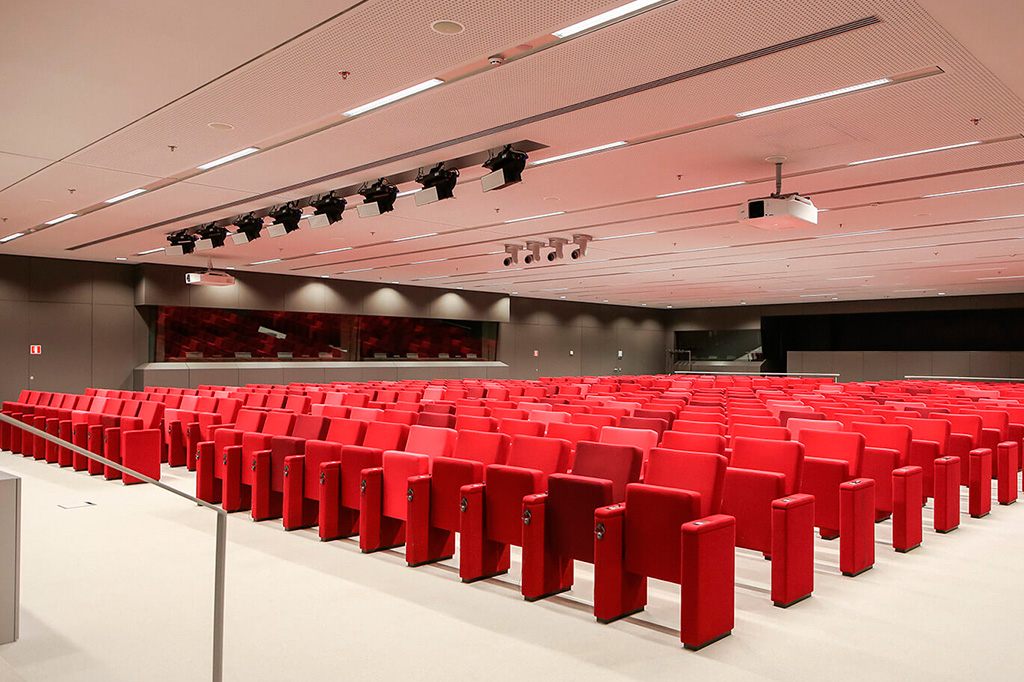
The Different Types of MICE Tourism
Conferences, exhibitions.
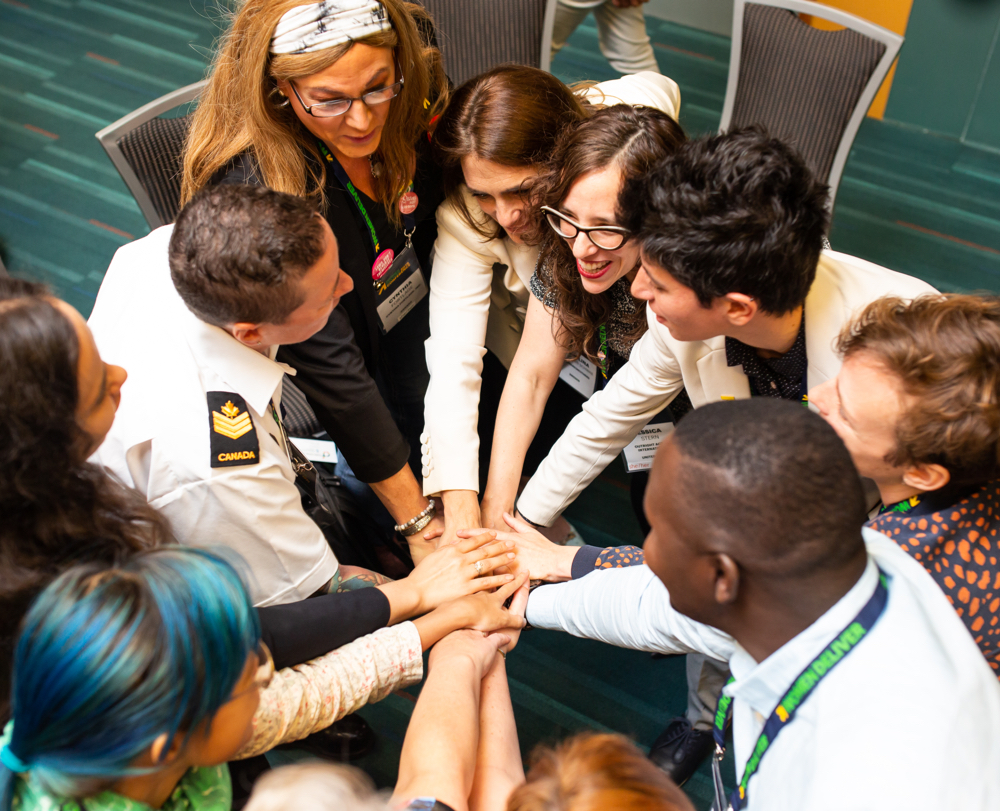
The Benefits of MICE Tourism
MICE tourism offers a wide range of benefits for various stakeholders, including cities, businesses, and individuals. Here is a closer look at the key benefits:
For cities:
- Economic impact: MICE tourism generates significant revenue through direct and indirect spending, contributing to local economic growth and prosperity.
- Job creation: The MICE industry creates jobs in various sectors, including hospitality, transportation, event planning, and construction, leading to increased employment opportunities.
- Destination promotion: MICE events showcase cities to a global audience, promoting their attractions, infrastructure, and hospitality offerings, and attracting visitors and investment.
- Infrastructure development: Hosting MICE events can incentivize cities to invest in infrastructure development, such as improved transportation networks, convention centers, and hotels, benefiting both residents and visitors.
- Social and cultural benefits: MICE events can foster cultural exchange, promote social cohesion, and enhance the city’s image and reputation.
For businesses:
- Brand awareness and reputation: MICE events provide a platform to showcase brands, products, and services to a targeted audience, increasing brand awareness and enhancing reputation.
- Lead generation and sales: MICE events offer valuable opportunities to generate leads, connect with potential clients, and boost sales.
- Customer relationship management: MICE events provide a platform to strengthen relationships with existing customers, build loyalty, and enhance customer satisfaction.
- Employee motivation and retention: Incentive travel programs and corporate events can motivate employees, improve morale, and increase employee retention.
- Knowledge sharing and networking: MICE events facilitate knowledge sharing, collaboration, and networking among industry professionals, leading to innovation and business growth.
For individuals:
- Professional development: MICE events offer opportunities for professional development, learning, and skill enhancement through workshops, conferences, and seminars.
- Networking and career opportunities: MICE events provide valuable networking opportunities, allowing individuals to connect with peers, mentors, and potential employers, leading to career advancement.
- Personal enrichment and cultural experiences: MICE events offer unique experiences, cultural immersion, and opportunities to explore new destinations, broadening horizons and enriching personal lives.
- Memorable experiences: MICE events provide participants with memorable experiences, fostering positive memories and promoting a sense of community and belonging.
Overall, MICE tourism plays a vital role in promoting economic growth, job creation, destination promotion, and knowledge sharing. It offers a multitude of benefits for cities, businesses, and individuals, contributing to a vibrant and sustainable tourism industry.
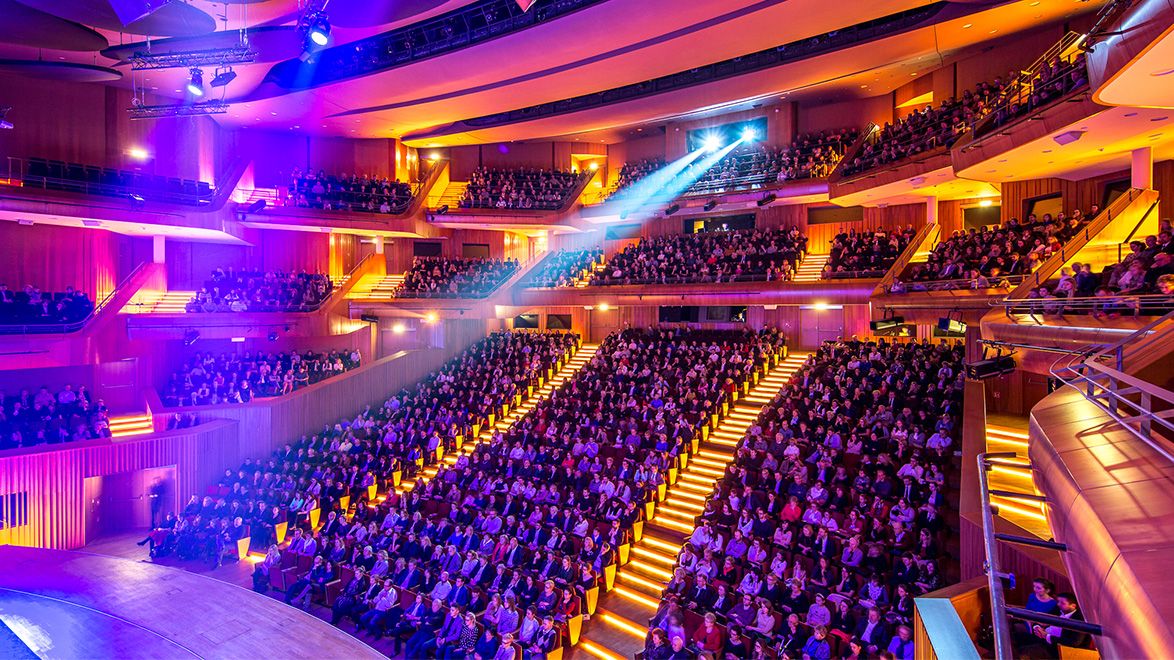
The Challenges of MICE Tourism
MICE tourism , while offering numerous benefits, also presents various challenges that need to be effectively addressed for sustainable growth and success. Here are some key challenges:
1. High costs: Organizing and hosting MICE events can be expensive, involving venue rental, catering, transportation, accommodation, and other logistical costs. This can be a barrier for smaller businesses and organizations with limited budgets .
2. Competition: The MICE industry is highly competitive, with destinations and businesses vying for a share of the market. This requires effective marketing and branding strategies to differentiate and attract participants.
3. Economic and political factors: Economic downturns, political instability, and safety concerns can impact the MICE industry, leading to cancellations or reduced participation.
4. Seasonality: The demand for MICE events can be seasonal, with certain periods experiencing higher demand and others experiencing lower demand. This can create challenges for businesses and destinations in terms of resource allocation and staff scheduling.
5. Sustainability: The MICE industry can have a significant environmental impact, and there is a growing demand for sustainable practices. This includes reducing waste, energy consumption, and carbon emissions, and adopting eco-friendly practices throughout the event planning and execution process.
6. Technological advancements: The rapid evolution of technology requires MICE organizers to constantly adapt and adopt new technologies to enhance the event experience and stay competitive. This can involve integrating virtual reality, augmented reality, artificial intelligence, and other innovative technologies into events.
7. Changing customer expectations: Participants in MICE events increasingly expect personalized experiences, customized content, and seamless integration of technology. Meeting these expectations requires flexibility, innovation, and a focus on customer satisfaction.
8. Risk management: MICE events involve various risks, such as cancellations, accidents, and security breaches. Effective risk management strategies are essential to mitigate potential losses and ensure the safety and security of participants.
9. Human resource challenges: The MICE industry requires skilled professionals with expertise in event planning, management, marketing, and logistics. Attracting and retaining qualified talent can be a challenge, especially in competitive markets.
10. Data and analytics: Collecting and analyzing data on participant behavior, preferences, and trends can help MICE organizers make informed decisions, improve event planning, and optimize the overall experience. However, data privacy and security concerns need to be addressed.
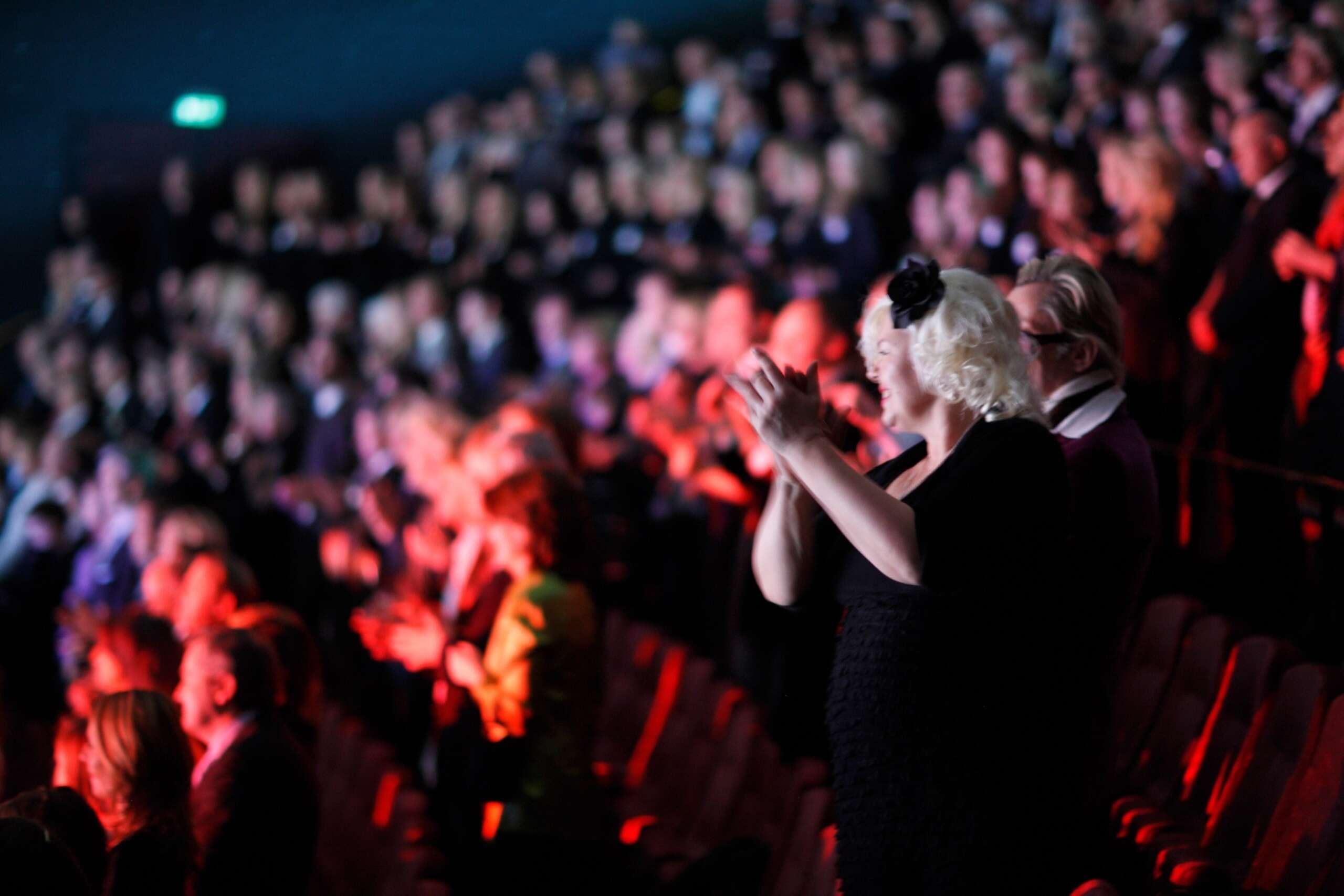
The Top MICE Tourism destinations
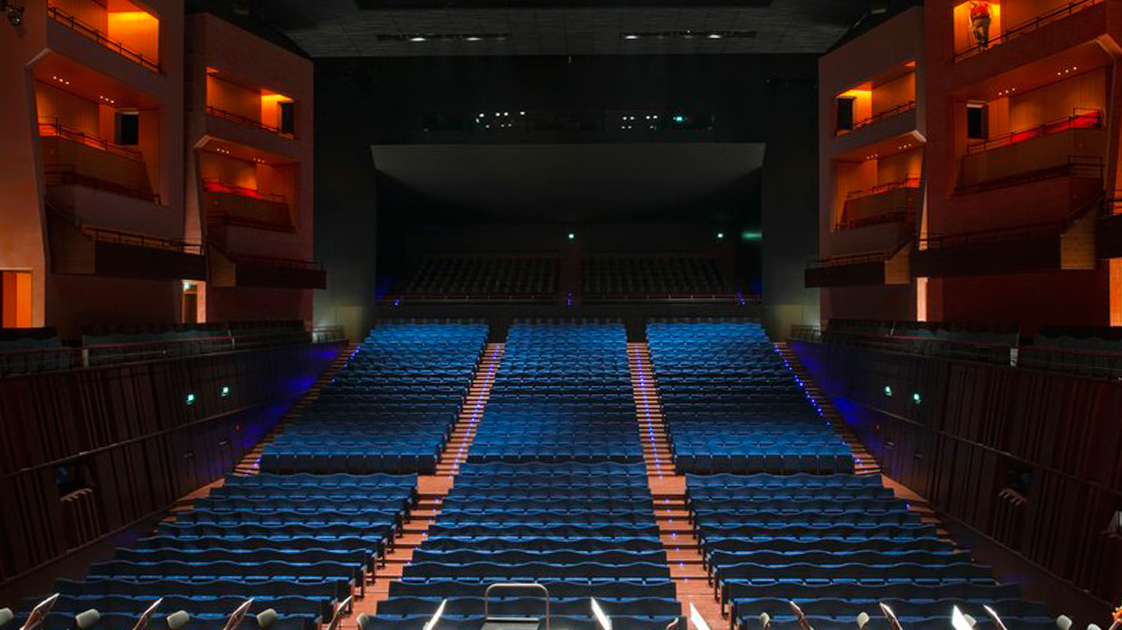
Latest Trends in MICE Tourism
Key factors for successful mice tourism events.
Organizing a successful MICE tourism event requires meticulous planning and execution, catering to the specific needs and expectations of participants. Here are some key factors to ensure a positive outcome:
1. Defining clear objectives:
- Set SMART goals: Clearly define the event’s purpose, target audience, desired outcomes, and desired return on investment (ROI) using the SMART framework (Specific, Measurable, Achievable, Relevant, and Time-bound).
- Align goals with stakeholders: Ensure that the event’s objectives align with the interests and needs of all stakeholders, including organizers, participants, sponsors, and the host destination.
2. Selecting the right destination and venue:
- Accessibility and infrastructure: Choose a location that is easily accessible for participants, with convenient transportation options and appropriate infrastructure, including accommodation, meeting spaces, and technology capabilities.
- Alignment with event theme: Consider how the destination and venue complement the event’s theme and overall experience.
- Cost-effectiveness: Evaluate the costs associated with the location and venue and ensure they align with the budget.
3. Engaging content and programming:
- Tailored content: Develop engaging and informative presentations, workshops, and activities that cater to the specific interests and needs of the target audience.
- Interactive elements: Incorporate interactive elements throughout the event to keep participants engaged and facilitate networking opportunities.
- Innovation and creativity: Consider incorporating innovative and creative elements to keep the event fresh and memorable.
4. Seamless logistics and organization:
- Detailed planning and communication: Develop a comprehensive timeline and plan, considering all logistical aspects like transportation, accommodation, catering, and technology. Communicate effectively with all stakeholders throughout the planning process.
- Contingency planning: Anticipate potential challenges and develop contingency plans to address them effectively.
- Professional team: Assemble a team of experienced and qualified professionals to handle various aspects of the event planning and execution.
5. Excellent customer service:
- Attentive and proactive service: Ensure participants feel valued and supported throughout the event. Provide attentive and proactive customer service, addressing their needs promptly and efficiently.
- Feedback mechanisms: Implement feedback mechanisms to gather participant feedback to continuously improve the event experience.
EVENT VENUES
What are event venues how to choose the right one, mice events, don't miss our new mice events section.
A 100% online magazine aimed exclusively at MICE industry.
www.micemag.com [email protected]

- Privacy Overview
- Strictly Necessary Cookies
This website uses cookies so that we can provide you with the best user experience possible. Cookie information is stored in your browser and performs functions such as recognising you when you return to our website and helping our team to understand which sections of the website you find most interesting and useful.
You can find more information about our privacy policy here: Privacy Policy
Strictly Necessary Cookie should be enabled at all times so that we can save your preferences for cookie settings.
If you disable this cookie, we will not be able to save your preferences. This means that every time you visit this website you will need to enable or disable cookies again.
- Business Travel
- Home Inspiration
- Sustainable Living
- Wellbeing & Wellness
- Area Guides
- Whitepapers
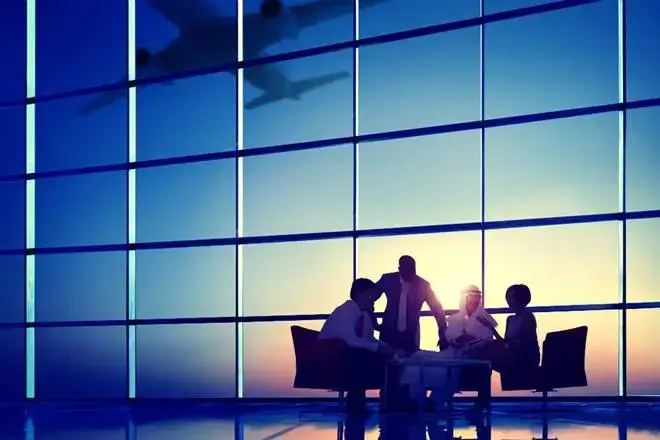
Business Travel Guide
What is mice travel everything you need to know in 2024.

MICE Travel is a term that is often used in the tourism industry, but not everyone is familiar with what it means. MICE stands for Meetings, Incentives, Conferences, and Exhibitions. It is a type of tourism that involves bringing together large groups of people for a specific purpose, such as attending a conference or participating in an exhibition.
MICE Travel is a growing segment of the tourism industry, and it is becoming increasingly popular among businesses and organizations. It is a way for companies to reward their employees, build relationships with clients, and showcase their products and services to a wider audience.
In this article, we will explore what MICE Travel is, why it is important, and what makes it different from other types of tourism. We will also look at some of the benefits and challenges of MICE Travel, as well as some examples of successful MICE events.
What is MICE Travel?
MICE travel is a type of tourism that involves corporate groups travelling with a specific purpose in mind. The acronym MICE stands for Meetings, Incentives, Conferences, and Exhibitions. MICE travellers are usually employees of a company or organization who travel to attend an event or meeting.
The Meetings aspect of MICE travel refers to business meetings, such as board meetings or sales meetings. These meetings can take place in various settings, such as hotels, serviced apartments , conference centres, or even on a cruise ship.
MICE travel is an important sector of the tourism industry , as it generates significant revenue for hotels, airlines, and other businesses. MICE travellers are often high-spending customers who require a high level of service and attention to detail.
Components of MICE Travel
Meetings are a key component of MICE travel. They are gatherings of people who come together to discuss a specific topic or issue. Meetings can be small or large, and they can take place in a variety of settings, including hotels, conference centres, and other venues.
Meetings can be classified into different types, such as board meetings, sales meetings, and team-building meetings. They can also be classified based on their duration, such as half-day, full-day, or multi-day meetings.
Incentives are rewards that are offered to individuals or groups to encourage them to achieve a certain goal or objective. In the context of MICE travel, incentives are used to motivate employees or business partners to achieve specific business goals.
Incentive travel programs can include a variety of activities, such as team-building exercises, cultural tours, and adventure activities. These programs are designed to provide participants with a unique and memorable experience that will motivate them to achieve their goals.
Conferences
Conferences are gatherings of people who come together to share information and ideas. They are typically organized around a specific theme or topic, and they can be attended by people from a variety of industries and backgrounds.
Conferences can take place in a variety of settings, such as hotels, conference centres, and other venues. They can be organized as single-track or multi-track events, and they can include keynote speakers, panel discussions, and workshops.
Exhibitions
Exhibitions are events where companies and organizations showcase their products and services to potential customers or clients. They are typically organized around a specific industry or theme, and they can be attended by people from a variety of backgrounds.
Exhibitions can take place in a variety of settings, such as convention centres, exhibition halls, and other venues. They can be organized as trade shows, consumer shows, or other types of events. Exhibitions can be an effective way for companies to generate leads and build relationships with potential customers or clients.
Importance of MICE Travel
MICE travel plays a crucial role in the tourism industry and has a significant impact on the economy. It is an essential part of the business tourism industry and encompasses four niche areas: Meetings, Incentive Travel, Conferences, and Exhibitions.
One of the key benefits of MICE travel is that it generates significant revenue through direct and indirect spending, contributing to local economic growth. It also creates job opportunities for people in the hospitality and tourism industry.
According to a report by Business Insider , the global MICE industry is expected to reach $1,439 billion by 2025, growing at a CAGR of 7.6% from 2018 to 2025.
MICE travel also fosters knowledge exchange, promotes collaboration and innovation, and provides a platform for networking. It enables professionals from different industries and countries to meet, share ideas, and learn from each other. This helps to build relationships and create new business opportunities.
In addition, MICE travel has a positive impact on the environment. Many MICE events incorporate sustainable practices, such as reducing waste, conserving energy, and promoting eco-friendly transportation.
This helps to minimize the environmental impact of the events and promotes sustainable tourism practices.
Overall, MICE travel is an essential part of the tourism industry and plays a vital role in driving economic growth, fostering knowledge exchange, promoting collaboration and innovation, and promoting sustainable tourism practices.
Economic Impact of MICE Travel
MICE tourism has a significant economic impact on the destinations where it takes place. The direct and indirect spending associated with MICE events generates revenue that contributes to local economic growth
According to a report by Grand View Research , the global MICE market was valued at USD 876.42 billion in 2022 and is expected to grow at a compound annual growth rate (CAGR) of 7.5% from 2023 to 2030.
One of the key benefits of MICE tourism is its contribution to job creation. A study by the World Tourism Organization found that MICE events create more jobs per tourist than leisure travel. This is because MICE events require a wide range of services, including accommodation , transportation, catering, and event management, which in turn creates employment opportunities in these sectors.
MICE tourism also has a positive impact on local businesses. Participants in MICE events tend to spend more money than leisure travellers, both because of the nature of their travel and because their expenses are often covered by their employers. This means that local businesses, such as restaurants, shops, and attractions, benefit from the increased spending associated with MICE events.
Overall, the economic impact of MICE tourism is significant, with direct and indirect spending contributing to local economic growth and job creation. The benefits of MICE tourism extend beyond the event itself, with local businesses and the wider community benefiting from increased spending.
Key Players in the MICE Industry
MICE tourism is a complex industry that involves various stakeholders. The following are the key players in the MICE industry:
Event Planners
Event planners are professionals who help businesses and organizations plan and execute events, such as meetings, conferences, and exhibitions. They are responsible for managing all aspects of the event, including venue selection, catering, logistics, and marketing. Event planners work closely with their clients to ensure that the event meets their objectives and budget.
Destination Management Companies
Destination Management Companies (DMCs) are professional service providers that specialize in managing events and travel arrangements in a specific destination. They have in-depth knowledge of the local market and can provide valuable insights into the destination’s culture, customs, and regulations. DMCs work closely with event planners and travel agencies to ensure that the event runs smoothly.
Hospitality Providers
Hospitality providers include hotels, resorts, and other accommodation providers that offer facilities and services for MICE travellers. They provide meeting rooms, conference facilities, and other amenities that are essential for MICE events. Hospitality providers work closely with event planners and DMCs to ensure that the accommodation meets the needs of MICE travellers.
Travel Agencies
Travel agencies are professional service providers that specialize in arranging travel and accommodation for MICE travellers. They work closely with event planners and DMCs to ensure that the travel arrangements meet the needs of MICE travellers. Travel agencies can provide valuable insights into the destination’s transportation options, visa requirements, and other travel-related issues.
4 Best MICE Travel Destinations
MICE travel is an important segment of the tourism industry, and many destinations around the world have recognized its potential for generating significant revenue. Some of the most popular MICE travel destinations include:
1. Singapore
Singapore is one of the most popular MICE destinations in Asia. The city-state is known for its world-class infrastructure, modern facilities, and excellent connectivity.
It also has a diverse range of accommodation options, from budget-friendly to luxury hotels.
Some of the most popular MICE venues in Singapore include the Marina Bay Sands, Suntec Singapore Convention & Exhibition Centre, and Resorts World Sentosa.
2. Barcelona
Barcelona is a popular MICE destination in Europe, thanks to its rich history, vibrant culture, and excellent infrastructure.
The city has a range of venues suitable for MICE events, including the Fira Barcelona Gran Via, the Palau de Congressos de Catalunya, and the Centre de Convencions Internacional de Barcelona.
Barcelona is also known for its excellent cuisine, art, and architecture, making it an attractive destination for both business and leisure travellers.
Dubai has emerged as a leading MICE destination in the Middle East, thanks to its modern infrastructure, world-class facilities, and excellent connectivity.
The city has a range of venues suitable for MICE events, including the Dubai World Trade Centre, the Dubai International Convention and Exhibition Centre, and the Madinat Jumeirah Conference Centre.
Dubai is also known for its luxury shopping, dining, and entertainment options, making it an attractive destination for both business and leisure travellers.
4. Las Vegas
Las Vegas is one of the most popular MICE destinations in the United States, thanks to its world-class facilities, entertainment options, and excellent connectivity.
The city has a range of venues suitable for MICE events, including the Las Vegas Convention Center, the Sands Expo and Convention Center, and the Mandalay Bay Convention Center.
Las Vegas is also known for its luxury hotels, casinos, and nightlife, making it an attractive destination for both business and leisure travellers.
Top Trends in MICE Travel
Here are some of the top trends include:
- Technology Integration
Technology is an integral part of MICE travel, and it is being used to enhance the experience of attendees. Event organizers are utilizing technology to create interactive and engaging experiences that leave a lasting impression on attendees.
Some of the technologies being used include virtual reality, augmented reality, and live streaming.
- Sustainability
Sustainability is becoming increasingly important in the MICE travel industry. Event organizers are looking for ways to reduce the environmental impact of their events, and many are implementing sustainable practices such as using biodegradable products, reducing waste, and using renewable energy sources.
- Personalization
Personalization is another trend that is gaining popularity in the MICE travel industry. Attendees are looking for personalized experiences that cater to their individual needs and preferences. Event organizers are utilizing data analytics and other technologies to create customized experiences that meet the unique needs of each attendee.
- Hybrid Events
Hybrid events are becoming more common in the MICE travel industry. These events combine in-person and virtual elements to create a more engaging and interactive experience for attendees. Hybrid events allow businesses to reach a wider audience while still providing the benefits of face-to-face interaction.
Wellness is another trend that is gaining popularity in the MICE travel industry. Attendees are looking for ways to stay healthy and fit while attending events and meetings. Event organizers are incorporating wellness activities such as yoga, meditation, and healthy food options into their events to promote a healthy lifestyle.
Challenges Facing MICE Travel
MICE Travel has its own set of challenges that need to be addressed to ensure the success of events. Here are some of the key challenges that MICE Travel faces:
- Logistics and Planning
MICE Travel involves the organization of large-scale events, which require meticulous planning and coordination. Event planners need to ensure that all aspects of the event, such as transportation, accommodation, and catering, are well-organized and meet the expectations of the attendees.
- Budget Constraints
MICE Travel can be expensive, and budget constraints can be a significant challenge for event planners. The cost of organizing an event can quickly add up, and planners need to ensure that they stay within budget while still providing a high-quality experience for attendees.
- Safety and Security
Ensuring the safety and security of attendees is a crucial aspect of MICE Travel. Event planners need to take measures to ensure that attendees are safe and secure during the event, such as providing adequate security personnel and implementing emergency response plans.
- Technology and Innovation
MICE Travel is an ever-evolving industry, and event planners need to keep up with the latest technology and innovation to provide a unique and memorable experience for attendees. The use of technology, such as virtual reality and augmented reality, can enhance the attendee experience, but it can also be a challenge for event planners to implement and integrate into the event.
Sustainability in MICE Travel
Sustainability is a growing concern in the MICE industry as it has a significant environmental impact. MICE travel can generate a large amount of waste, energy consumption, and carbon emissions, which can contribute to climate change and harm the environment.
Therefore, there is a growing demand for sustainable practices in the MICE industry to reduce its negative impact on the environment.
One of the ways to promote sustainability in MICE travel is by reducing waste. Event organizers can reduce waste by using reusable or recyclable materials, avoiding single-use plastics, and encouraging attendees to bring their water bottles and refill them instead of buying bottled water. They can also donate leftover food to charities or food banks instead of throwing it away.
Another way to promote sustainability in MICE travel is by reducing energy consumption. Event organizers can reduce energy consumption by using energy-efficient lighting and equipment, turning off equipment when not in use, and using renewable energy sources such as solar.
They can also encourage attendees to use public transportation or carpool instead of driving alone to reduce carbon emissions.
Furthermore, promoting sustainability in MICE travel can also have economic benefits. Sustainable events can attract environmentally conscious attendees and sponsors, which can increase the event’s visibility and reputation.
Additionally, reducing waste and energy consumption can also lead to cost savings for event organizers.
How do incentives function within the MICE sector?
Incentives are an important part of the MICE sector because they provide a way for companies to reward their employees or customers. Incentive travel is often used as a way to motivate employees to achieve specific goals or to reward them for their hard work. Incentives can also be used to build relationships with customers by offering them exclusive experiences or rewards.
What are some typical examples of MICE tourism?
MICE tourism includes a wide range of events, from small meetings to large-scale conferences and exhibitions. Some examples of MICE tourism include trade shows, product launches, corporate meetings, and incentive trips. These events can take place in a variety of locations, from convention centres to hotels and resorts.
Why is the MICE industry considered important for hospitality and tourism?
The MICE industry is an important part of the hospitality and tourism sector because it generates significant revenue for businesses and local economies. MICE events bring in large numbers of visitors who spend money on transportation, accommodations, food, and entertainment. Additionally, MICE events can help to promote a destination and attract future visitors.
What types of events are categorized under MICE travel?
MICE travel encompasses a wide range of events, including corporate meetings, conferences, exhibitions, trade shows, and incentive trips. These events can be held for a variety of purposes, such as networking, education, or product launches.
Read more Business Travel Guide articles

Understanding Flight ID Requirements for Business Travel in 2024

9 Corporate Credit Card Policy Best Practices

A Complete Guide to Corporate Travel Allowance

9 Benefits of Organizing Company Trips for Employees

MICE tourism: A simple explanation
Disclaimer: Some posts on Tourism Teacher may contain affiliate links. If you appreciate this content, you can show your support by making a purchase through these links or by buying me a coffee . Thank you for your support!
Mice tourism is a prominent part of the tourism industry, yet many people have no idea what MICE means! Well, in this article I am going to change that! Read on to learn what mice tourism is, how the MICE tourism industry has grown worldwide and why this type of tourism is so important!
Conferences
Exhibitions, the growth of mice tourism, why is mice tourism important, industry players in the mice tourism sector, the future for mice tourism, mice tourism: further reading, what is mice tourism.
MICE tourism is a part of the business tourism industry. It encompasses four niche areas, which are:
- Incentive travel
As you can see, MICE is actually an acronym used to group together the four tourism types mentioned above- contrary to popular belief, it has nothing to do with rodents!
MICE tourism is typically tourism provision that is planned in advance and designed for large groups of people for particular purposes. Leong (2007) defines MICE as ‘a type of tourism where groups of participants are gathered to achieve certain purposes.
Below, I have provided an explanation of each component of MICE:

Mice tourism includes any types of travel for the purpose of a meeting(s). This ranges from small meeting to large meetings. Meetings can be short in duration (e.g. last a couple of hours) or long (e.g. a week or more). Types of meetings include (but are not limited to):
- Board meetings
- Focus groups
- Training seminars
- Strategy planning
- Shareholder meetings
- Management meetings
Traditionally, meetings have been predominantly face-to-face, however recent years have seen a big shift towards virtual meetings, which was accelerated by the COVID pandemic and subsequent and rapid move to digital means around the world. This will likely result in the continued decrease of travel for the purpose of meetings in the coming years.

Incentive travel refers to travel that intends to motivate or reward company stakeholders. There are different types of incentive travel, including:
- Familiarisation trips
- Teambuilding trips
- Reward trips
Research has demonstrated that incentive travel is an important corporate culture builder. If you are looking for a way to motivate your staff and enhance productivity, retention and output throughout your business, then incentive travel is often a worthwhile investment.

A conference is an event that facilitates presentation, discussion and the showcasing of work within a professional network. Conferences are often important networking events and have been a prominent part of the business tourism industry to date.
Conferences can last a day or a week or more, depending on the structure and purpose. People have historically travelled great distances for the purposes of conferences, particularly in the travel and tourism sector.
Examples of travel and tourism related conferences include:
- Association for Tourism and Leisure Education and Research annual conference
- TBEX conferences for travel creators
- Sustainable tourism conference
Whilst COVID saw conference organisers adapt and move online during the pandemic, there will always remain a space for physical conferences. There is no replacement for the face-to-face networking opportunities that occur during conferences, thus physical conferences will be here to stay, although perhaps to a lesser scale. Many conferences may move towards a hybrid approach of online and physical attendance.

Exhibitions provide an opportunity for businesses to showcase their products or services. They are often in the form of trade shows.
Exhibitions will often include stalls, breakout rooms, discussion points, presentations and opportunities for networking. Exhibitions are often large events involving large amounts of people.
Popular exhibitions in the travel and tourism industry include:
- Travel Adventure Show
- World Travel Market
- Women in Travel Summit
MICE tourism has grown considerably in recent years. This growth has been particularly prominent in Asia, where tourism in countries such as China and India have increased significantly.
There have been more conferences organised and more exhibitions in recent years than ever before. This is in part due to a growing population worldwide. It is also because our world has become more interconnected and globalised , thus requiring more meetings, conferences and other events that require international travel.
MICE tourism can be beneficial to a destination’s economy. It also provides a wealth of opportunities for individual companies or organisations who want to put themselves on the international stage.
Other benefits ion MICE tourism include:
- It facilitates the access to new technology
- It attracts high-spending visitors
- It provides high yield and return per capita
- It enhances the international economic contact
- It creates more economic multiplier effect and competitiveness
- It can enhance off-peak tourism
MICE tourists often stay longer and spend more money than other tourists, making them important tourism stakeholders. MICE tourism can also help to contribute to community building, urban renewal, and growth of the national identity (Getz, 2008). Furthermore, MICE tourism can encourage development in a destination, particularly in the areas of convention and exhibition centers, improvements of airports and other transport infrastructure and various urban renewal schemes.
MICE tourism is a multifaceted industry, involving a number of tourism stakeholders . This includes:
- Transport providers (international and domestic)
- Accommodation providers
- Those who provide pre- and post-conference tour opportunities
- Staff at specific venues – purpose built centres and hotels
- Professional conference and exhibition organisers and catering services
- Social program leaders for delegates and participants
- Specialised technical support such as audiovisual services
The variety of stakeholders involved in MICE tourism indicates the potentially wide ranging economic impacts of MICE tourism. It also provides rationale for support from government agencies in many countries. It also indicates the scope of the challenges which must be met in coordinating the activities of different stakeholders to ensure that the MICE tourism industry is sustainable and effectively managed.
The MICE industry size was valued at $805 billion in 2017 and was expected to grow at a CAGR of 7.6% to reach $1,439.3 billion by 2025. However, COVID has had a drastic impact on this and this growth is expected to slow or even decline as a result.
MICE tourism is here to stay, but much of it has/will continue to move online, meaning that the monetary value is significantly reduced.
The continuing MICE tourism industry growth (whether physically or online) shall have a positive impact in the growth of businesses, cities and destinations around the world.

As I mentioned before, globalisation has played a huge role in the growth of the MICE tourism industry and it is anticipated that this will continue well into the future. Exactly how the MICE tourism industry may look in the future is not exactly clear, however.
If you enjoyed this article, you may also be interested in:
- Business tourism explained: What, why and where
- Workation explained: What it means and how it works
- The most attractive countries offering the digital nomad visa
Liked this article? Click to share!
The Importance and Benefits of MICE Sales
Connect Worldwide Hotels Division
Meetings, Incentives, Conferences, and Exhibitions (MICE) are a central segment in the hospitality industry. MICE sales are extremely beneficial and can generate a sizeable portion of a hotel’s revenue. By attracting MICE tourists, you have an opportunity to boost the returns of your establishment, as well as your reputation. Studies have shown that MICE tourism makes up over fifty percent of business travel.
MICE Benefits for Hotels
Meetings, Incentives, Conferences, and Exhibitions Sales are especially advantageous to the hotel industry. Attendees of these MICE events fill up rooms at the host hotels and nearby venues. In addition, attendees of MICE events can bring you additional leisure business in the long run, when returning to a location they have been during a business event . “Bleisure” travel (the trend of blending business with leisure activities on business trips) is on the rise, providing a greater quality of life as well as a work/life balance to those who take advantage of it.
Attract MICE Tourism and Boost Revenue
MICE tourism is constantly evolving and has significantly transformed during the pandemic. Hotels must adapt, stay informed, and understand the marketing environment in which MICE industry professionals and event directors currently operate. The needs vary from market to market and it is essential to be aware of these diversities.
Connect Worldwide and MICE Sales
Our professional and specialized MICE sales experts at Connect Worldwide act as an extension of your team in the local market. Due to our established network of clients , speed to market, and access to key decision makers, we are able to provide significant revenue opportunities through leads from the MICE segment. Our experienced team can introduce you to new networks, connections, and territories, and provide business insight into opportunities, market trends, and competitor analysis.
Connect Worldwide sales experts are here to help you stay ahead of the competition. Our team has a long history of results-driven MICE sales solutions, specific to our clients’ objectives in their respective markets. Get in touch with us today for more information about our MICE sales services.
Share this post:
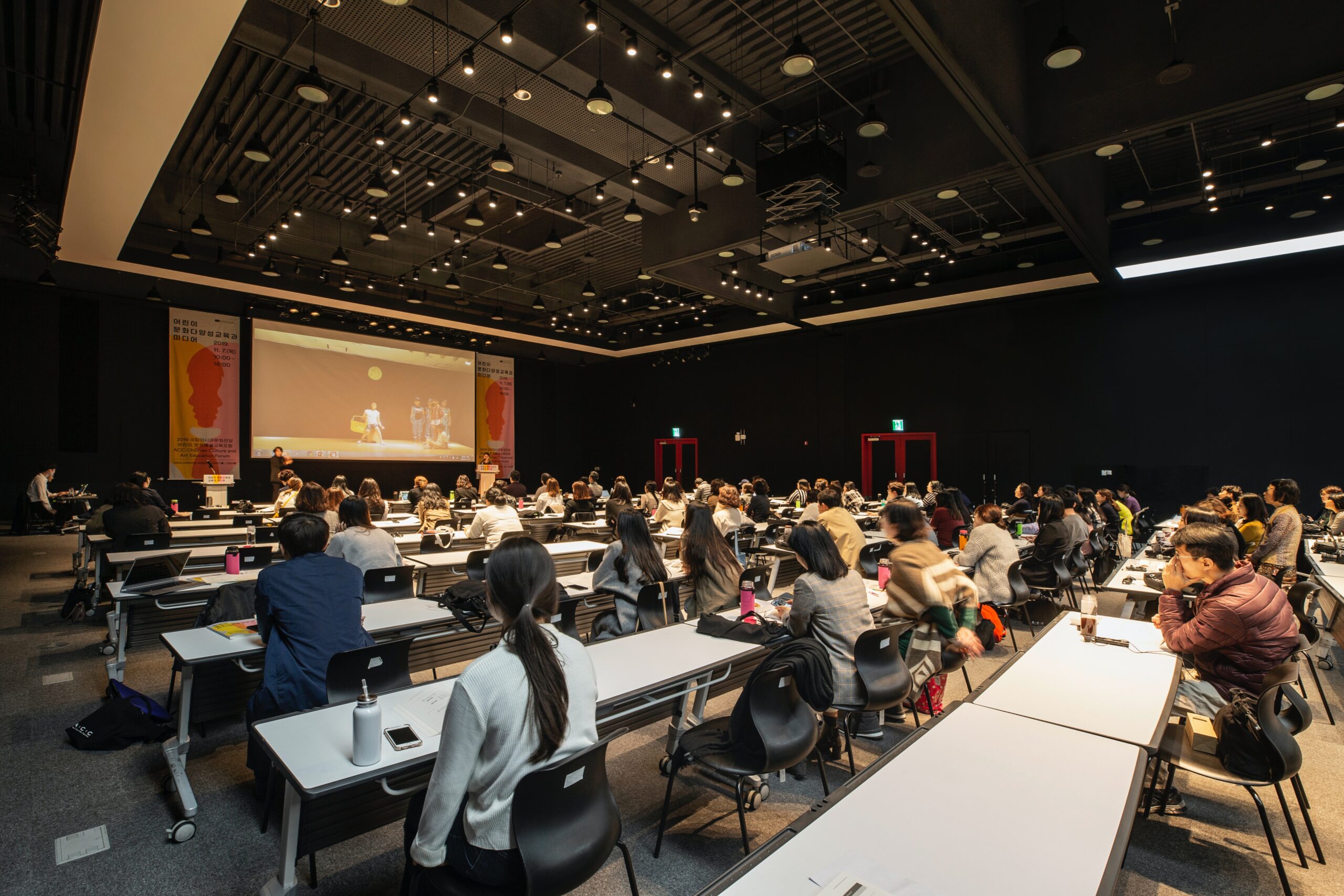
- Hospitality Industry
What is MICE? (Meetings, incentives, conferences & exhibitions)

August 20, 2020 •
3 min reading
Putting the nice into MICE
Nothing to do with pest control, everything to do with business-minded travel. Put simply, MICE stands for Meetings, Incentives, Conferences & Exhibitions. It is business tourism at its finest, aimed at bringing together top professionals from every sector in an enhanced, tailor-made hospitality setting.
What is MICE?
Meetings are typically held in hotel conference rooms or at convention centers. They are single-day events that bring together a group of professionals to address a key challenge or set goals for the organization.
Incentives are travel rewards a company may provide in return for excellent professional performance from individual employees, groups or partners. A few days in a resort, hotel or popular hospitality venue at your company’s expense does wonders for employee loyalty.
Conferences
Conferences take meetings to the next level and are designed for a large corporate group to share knowledge across several days. They often include not only key members of the organization, but also guest speakers and the general public.
Exhibitions
Exhibitions are essentially trade shows where an organization promotes its key products and services to the public. They are hyper-focused events that drum up business and help employees to network and build lasting professional relationships.
MICE services: Revenue implications
Implementing tailor-made MICE services into a hotel infrastructure is a way of securing additional long-term valuable growth. The latest Convention Industry Council report claimed that 85% of meetings in the U.S. are conducted at venues with lodging, generating more than 275 million room nights annually. The expenditure of MICE travelers is much higher than leisure travelers, with profitable customers coming from the world of IT, banking, pharmaceuticals, retail and hospitality.
In brief, hotel meetings and corporate events are great way to boost revenue and secure those extra bookings. Lastly, developing MICE services is the perfect opportunity to enhance a hotel’s reputation and profile, besides its profitability.
MICE: Required skills
The expertise required to excel in MICE tourist management is based on interpersonal, creative, organizational and technical skills. Innovative creativity is needed to design original event concepts, select the right venues and market effectively. The strong practical component must include technical know-how ranging from audio-visual dexterity to accessing fast-track visa apps. Soft skills such as patience, empathy, teamwork and problem-solving are vital if, for example, a large traveling party from a culturally-specific region are to be greeted with the appropriate welcome drink.
This niche hospitality market has seen hotels having to create jobs for innovative meeting planners and professional conference services staff, as well as develop industry-specific programs to add new dimensions to their overall service infrastructure. In some cases, recruiting in-house can prove difficult if all competencies are to be met, hence the rise in Destination Management Companies (DMC) that have started to spring up worldwide.
A DMC aims to offer the full range logistic services in their specialist destinations: meet & greet, transfers & transportation, hotel accommodation, restaurants, activities, excursions, conference venues, themed events and gala dinners. They are often able to provide preferential rates based on the buying power that they have with their preferred suppliers.

MICE: Global events
A number of global events focus on MICE travel, especially the incentive niche, many of which are organized by Questex Travel Group (formerly MEET). Of the annual events, these are some of the most prominent in the industry around the world:
- Global Meeting & Incentive Travel Exchange (GMITE): Formerly known as Incentive Travel Exchange (ITE).
- Latin America Meeting & Incentive Travel Exchange (LAMITE): Working to connect business opportunities in Latin America.
- Caribbean Meeting & Incentive Travel Exchange (CMITE): The island version of the ITE.

Keep reading

Luxury hotels and a ‘sense of place’: The branding imperative
Apr 17, 2024

Navigating challenges of AI and maximizing value in the service sector
Apr 16, 2024

11 essential hospitality skills for career success (& resume tips)
Apr 15, 2024
This is a title
This is a text
- Bachelor Degree in Hospitality
- Pre-University Courses
- Master’s Degrees & MBA Programs
- Executive Education
- Online Courses
- Swiss Professional Diplomas
- Culinary Certificates & Courses
- Fees & Scholarships
- Bachelor in Hospitality Admissions
- EHL Campus Lausanne
- EHL Campus (Singapore)
- EHL Campus Passugg
- Host an Event at EHL
- Contact our program advisors
- Join our Open Days
- Meet EHL Representatives Worldwide
- Chat with our students
- Why Study Hospitality?
- Careers in Hospitality
- Awards & Rankings
- EHL Network of Excellence
- Career Development Resources
- EHL Hospitality Business School
- Route de Berne 301 1000 Lausanne 25 Switzerland
- Accreditations & Memberships
- Privacy Policy
- Legal Terms
© 2024 EHL Holding SA, Switzerland. All rights reserved.
- Importance Of Mice Tourism
8 Reasons why you should know about MICE
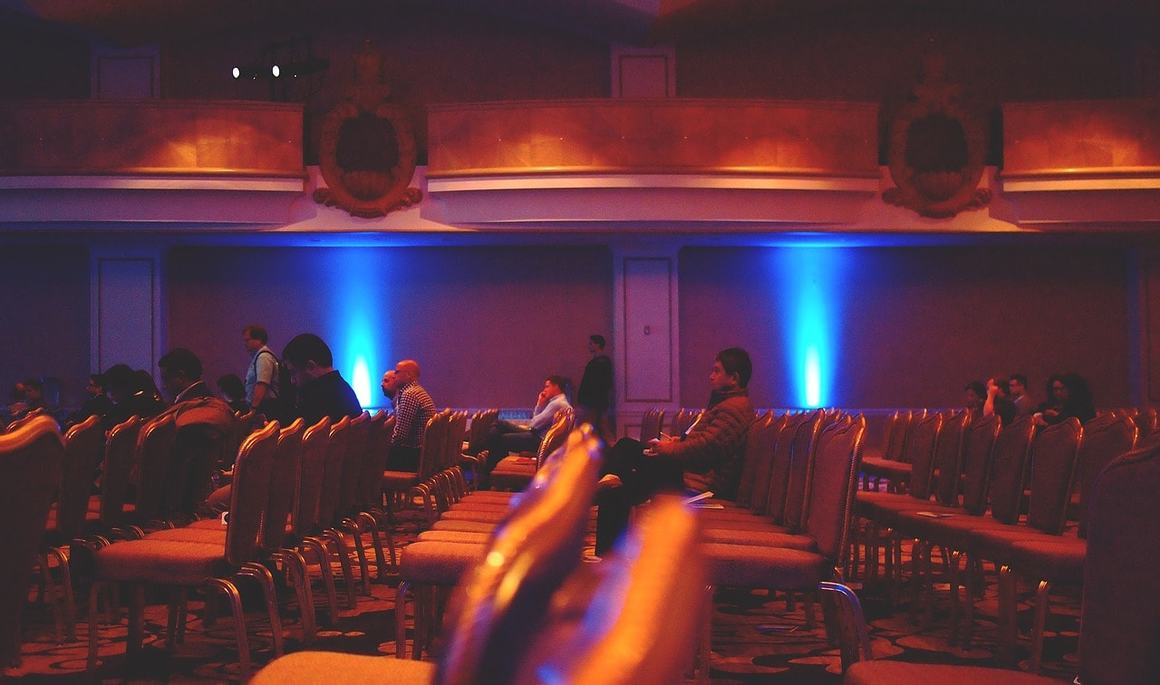
21 Sep, 2017 By rutuja chitnis . Posted In Travel . Tagged MICE Tourism , Business Travel , Meetings , Incentives , Conferences .
Contact Us Now
© 2016 All Rights Reserved
Career Guidance in Travel and Tourism
We have helped thousands of People to find out what career options fit their interest. You could be NEXT!
Enquiry Form
We help to find out right courses to build your future.
- Corporate Tours
- +91-9090403075
- Himachal Pradesh
- Uttarakhand
- Weekend Getaways
- Spiti Valley
- Honeymoon Packages
- International Trips
- India Trips
Weekend Trips
- Group Tours
What is MICE Tourism: Know Everything!
What is mice tourism (meetings, incentives, conferences & exhibitions).
Get ready to beat the boring work trips with the most amazing MICE tour destinations and get your work done in the most fun way ever!
Conferences
Exhibitions, subscribe to our newsletter.
Subscribe to our newsletter to receive exclusive offers, latest news and updates.
What is MICE? Why are they important for hotels?
Also, according to a study from Hong Kong, MICE guests pay 17.5% more than leisure guests, which is a huge thing for them. Hotels can make a lot of revenue from MICE tourism. If the hotels can organize big events on their property, automatically they can charge more for premium rooms.
And lastly, MICE Tourism can be a reliable source of recurring revenue as well. There are many conferences and trade shows that are happening at intervals, which gives opportunity to the hotels to plan their annual budgets with these events in their schedule.
Challenges and Opportunities: What is MICE Tourism?
However, forward-thinking destinations can turn challenges into opportunities by embracing sustainability, adopting technology-driven solutions, and providing unique experiences that set them apart from competitors. The ability to adapt to changing trends and evolving business needs is crucial for long-term success in the MICE tourism sector.
Frequently Asked Questions (FAQS)
Q: what is mice tourism, q: what are the components of mice tourism, q: what are the benefits of mice tourism, q: who participates in mice tourism events.
Our Blog Post
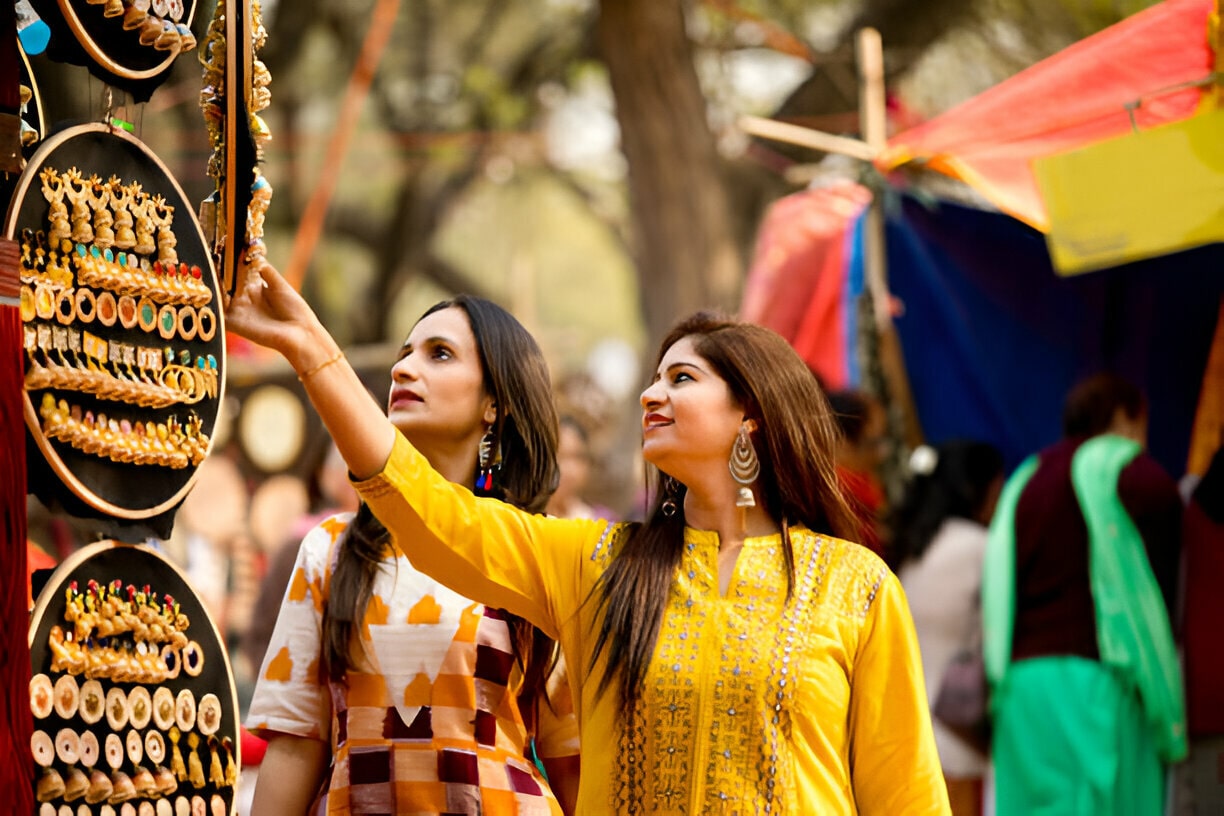
Looking for a hassle free trip?
Connect with our experts! Get the best Itineraries and Offers!
We at WanderOn are a modern travel community that provides end to end travel packages in India and abroad. We design the best travel itineraries that encourage group traveling for like-minded people. Our services include road trips, trekking expeditions, corporate trips, and customized tour packages. On our trips, we ensure hassle-free traveling, top-notch accommodation and guided sightseeing that too in a budget that won't burn a hole in your pocket. Just give us your dates and be ready to experience traveling like never before.
- Bir Billing
- Chopta Tungnath
- Kasol Kheerganga
- Tirthan Valley
- Manali Solang
Himalayan Escapades
- Kasol Manali
- Parvati Valley
- Mcleod Bir Tirthan
- Mcleod Bir Barot
Backpacking Trips
- Himachal Backpacking
- Ladakh Trips
- Meghalaya Backpacking
- Kashmir Backpacking
- Beautiful Places to Visit in Spring in India
- Workcations: The New Trend of Travel
- Breathtaking Monasteries of Ladakh
- Soul-Satisfying things to do in Spiti Valley
- Mesmerising Waterfalls of Meghalaya to Visit
Quick Links
- Privacy Policy
- Cancellation Policy
- Terms & Condition
WANDERON EXPERIENCES PVT LTD
3rd Floor, Building No-436, Phase IV, Udyog Vihar, Sector-18, Gurugram, Haryana-122001
- [email protected]
- www.wanderon.in
© WANDERON EXPERIENCES PVT LTD, All rights reserved.
Where do you want to go next.
- Travel Tips
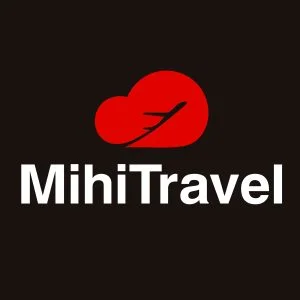
- Disclaimers
- Terms and Conditions
What is Mice tourism? Characteristics and types of Mice tourism
What is Mice tourism? It focuses on organizing and hosting business events in attractive destinations. It combines business and leisure for attendees to create a stimulating environment. Mice tourism offers options for different event sizes and tailored solutions for unique events. It creates memorable experiences and fosters connections among industry professionals. The types of Mice tourism include Meetings, Incentives, Conferences, and Exhibitions. It offers a unique and dynamic approach to business travel and MihiTravel can help create a successful Mice tourism experience.
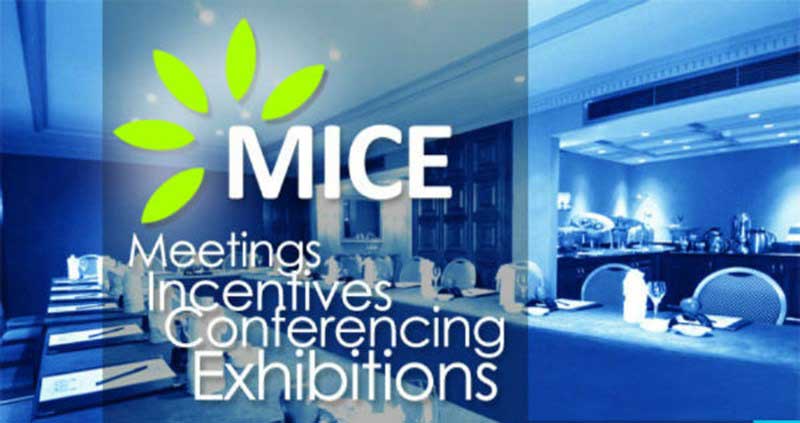
What is MICE tourism?
Definition and alternative terms.
MICE tourism refers to organizing meetings, incentives, conferences, and exhibitions for groups of people traveling for business purposes. It also includes activities that provide unique travel experiences. Other terms for MICE tourism include business tourism, meetings and events tourism, and conference tourism.
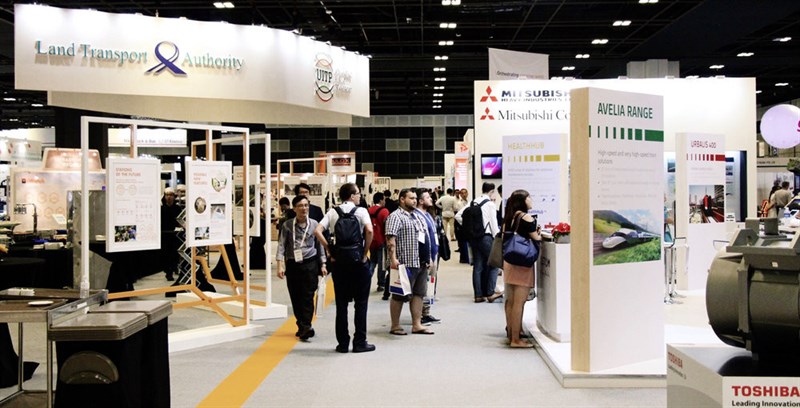
In the MICE tourism industry, travel is meticulously planned to ensure a seamless experience that combines business and leisure. Factors like event location, trip duration, and participant preferences are considered when arranging accommodations, transportation, venues, and activities. We’ve provided a friendly introduction to MICE tourism and will continue to explore its benefits, trends, and impact on the tourism industry.
Focus on organizing and facilitating business events
MICE tourism specializes in planning and executing large-scale business events like conferences. The goal is to deliver value for attendees and achieve the set business objectives. Expertise in organizing these events is crucial to their success.
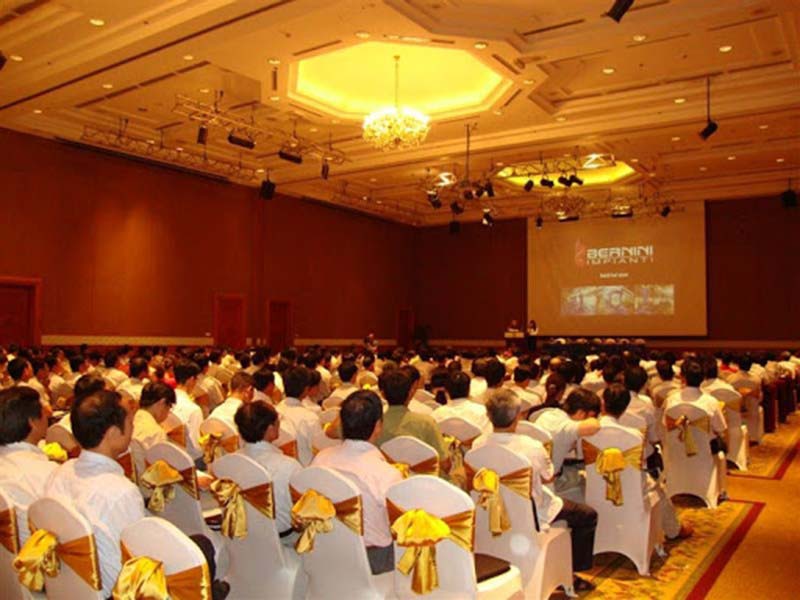
Meanwhile, travel tips become indispensable in MICE tourism. They encompass knowledge about local customs, transportation, and weather, enabling attendees to prepare appropriately for international events. Thus, combining meticulous planning and practical travel tips ensures a rewarding MICE tourism experience.

Characteristics of MICE tourism
Primarily caters to the needs of business travelers.
MICE tourism is like a good friend for business travelers. They are at the heart of this sector, which organizes big events such as conferences and meetings. It’s all about making these busy folks feel at ease, giving them perfect venues, top-notch tech, and everything they need to do their job without a hitch.
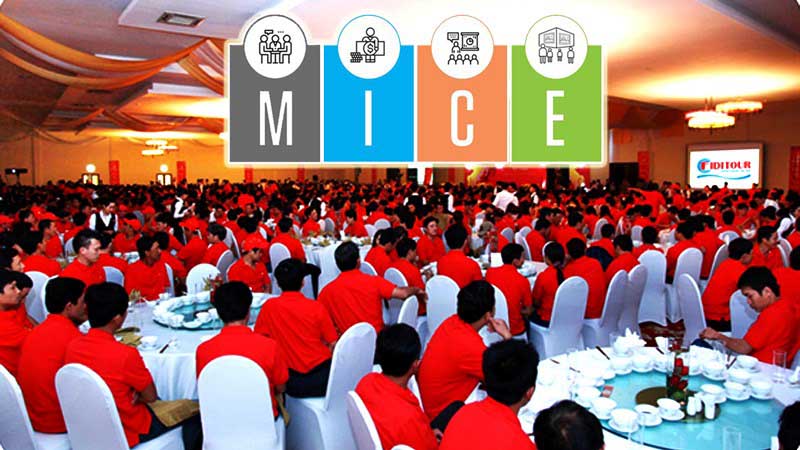
And let’s not forget about travel tips – these are the friendly whispers that make all the difference in MICE tourism. They help the travelers balance work and relaxation, keep in touch with their team, tackle jet lag, and feel at home, no matter where they are. In short, MICE tourism and handy travel advice together ensure business travelers have the best of both worlds.
Involves a large number of participants
MICE tourism attracts a large number of participants due to a variety of factors. Firstly, it’s an excellent platform for networking. These events bring together professionals from across the globe, offering opportunities to forge new connections, exchange ideas, and even close business deals.
Secondly, MICE tourism often takes place in desirable locations, making the prospect of attending such events more appealing. The chance to travel, experience new cultures, and see new sights adds a layer of personal enjoyment to the professional agenda.
Lastly, MICE events are often packed with informative and engaging activities, like workshops, keynote speeches, and product exhibitions, which can enhance participants’ knowledge and skills. This blend of professional development and travel makes MICE tourism a highly attractive proposition for many.
Operates according to a specific timeline for events
In the context of MICE tourism, operating according to a specific timeline for events is crucial. This means that each event, whether it’s a meeting, incentive, conference, or exhibition, is carefully planned and executed according to a predefined schedule. This timeline includes every detail, from the initial planning stages, through venue selection and booking, arranging speakers or activities, right up to the event itself and the follow-up afterwards.
This timeline is essential because it ensures that all tasks are completed on time and nothing is overlooked. It helps manage resources effectively, keeps everyone on the same page, and ultimately leads to a successful event. This structured approach also gives attendees a clear idea of what to expect and when, allowing them to plan their participation accordingly. It’s yet another way MICE tourism is tailored to provide a smooth and productive experience for business travelers.
Types of MICE tourism
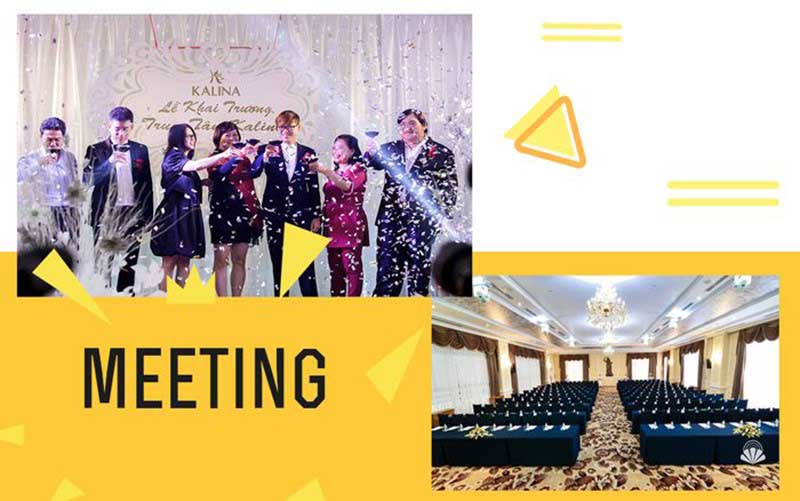
A “Meeting tour” is a unique facet of tourism that synergizes travel with elements like conferences or seminars. This model’s objective is to facilitate discussions about products, issues that need resolution, presentations on new products, or forthcoming plans in an environment that combines work with the pleasure of travel.
There are two key categories within this type of conference tourism:
- “Association Meetings” are meetups between different companies or organizations. These gatherings are usually designed to exchange information among entities in the same field or with shared interests, providing a valuable opportunity for networking and collaboration.
- “Corporate Meetings,” on the other hand, cater to individuals or members within a single company or organization. This type of internal tourism allows members to discuss various company-related matters, strategies, and products, all while enjoying the benefits of travel. It fosters team-building and aligns all members towards common company goals.
Small-scale gatherings for discussions and networking among professionals
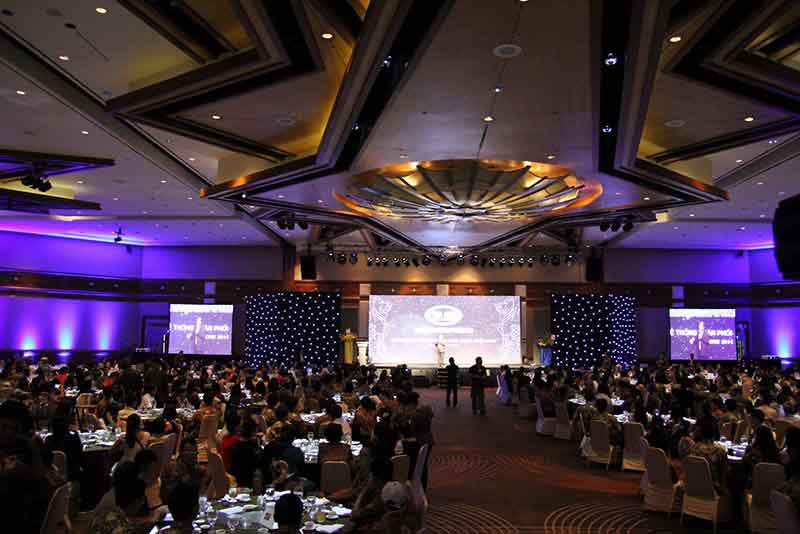
When it comes to MICE tourism, think of “Small-scale gatherings for discussions and networking among professionals” as cozy get-togethers. These are not your massive, hall-filling events, but more like a friendly meet-up where folks can talk business in a relaxed, intimate setting. It’s like a coffee chat, but with an exciting professional twist!
These small gatherings are great for making meaningful connections. People can dive deep into discussions or brainstorm without feeling lost in the crowd. And even in a big MICE event, such meet-ups happen as breakout sessions, providing a space for attendees to delve into topics they care about. It’s these little corners of connection that often make MICE tourism feel personal and fruitful.
“Incentives” are like a big, warm hug for employees or a hearty handshake for clients. These events are all about appreciation – for hard work, dedication, and loyalty. They spread smiles, boost morale, and light a spark of motivation that can ignite a wildfire of enthusiasm.
Imagine a surprise, all-expenses-paid trip to a dreamy destination, or a relaxed retreat away from the daily grind. Think of team-building activities that are all about fun and friendship, not just charts and graphs. That’s the magic of incentives – where the line between work and play gets delightfully blurry!
Conferences
“Conferences” are the big parties of the professional world. They’re buzzing gatherings where experts and professionals from various industries converge, eager to exchange ideas and insights.
They’re not just about shaking hands and exchanging business cards. Instead, they are vibrant hubs of knowledge where innovative research presentations ignite imaginations, and meaningful discussions inspire action. They’re a playground for networking, fostering collaborations, and catching up on the latest industry trends. In a nutshell, conferences are where serious business meets exciting discoveries!
Exhibitions
Think of “Events where companies showcase their products or services” as the ultimate show-and-tell sessions. These are the stages where businesses get to flaunt their latest innovations, captivating products, or top-tier services, much like artists unveiling their masterpieces.
But these events are not just about showcasing. They’re also bustling marketplaces for networking, making connections, and generating leads. Companies can demonstrate their offerings, explain their uniqueness, and attract potential partners or clients. So, while it’s a show on the surface, it’s a bustling business hub beneath!
Importance of MICE tourism
Facilitates connections, knowledge sharing, and economic growth.
MICE tourism acts like a giant crossroads, bringing together diverse individuals from across the globe. It’s not just about shaking hands and swapping business cards; it’s about building meaningful relationships and sparking innovative collaborations. These connections serve as a lifeline for business growth and sector development.
Beyond networking, MICE tourism is a dynamic stage for knowledge sharing and economic stimulation. It’s an arena where groundbreaking ideas are shared and industry advancements are unveiled. Moreover, the financial impact of these events extends beyond the conference room, pumping life into local and global economies, making MICE tourism a major player in driving economic prosperity.
Vibrant and dynamic sector within the travel industry
The MICE tourism sector is like the livewire within the travel industry. It’s vibrant, it’s dynamic, and it’s always buzzing with energy. Just imagine a beehive of activity where business meets pleasure, ideas transform into innovations, and connections turn into collaborations.
But there’s more to it than meets the eye. Beneath its lively veneer, the MICE sector is a powerful engine driving the travel industry forward. With its mix of business events, professional gatherings, and incentive travels, it keeps the industry pulsating with activity. So, if you’re looking for a sector within the travel industry that’s truly alive and kicking, MICE tourism is it!
Maybe you need:
- HIKING VS TREKKING : WHAT’S THE DIFFERENCE?
- Visit more Travel Tips
In essence, MICE tourism is a unique fusion of business and leisure, creating a vibrant, dynamic sector within the travel industry. It cultivates relationships, stimulates knowledge sharing, and significantly drives economic growth. The sector includes a vast range of events, from industry conventions to employee incentives, each one designed with a unique purpose. But at its heart, MICE tourism is about people and experiences – connecting individuals, sparking ideas, and creating memorable moments. It’s an invaluable part of the broader travel industry’s vibrant mosaic.
Leave a review
Is vietnam cheaper than thailand budget-friendly travel guide, best time to visit vietnam for the perfect travel, rwanda attractions: exploring national parks & lakeside beauty, togo attractions: reasons to visit & must-see spots, mozambique attractions: discover natural wonders & cultural landmarks, more from author, quick links, how to become a traveler: tips, tricks step by step, say days of the week in vietnamese, where to stay in bangkok thailand for an unforgettable experience, wat arun ratchawararam ratchawaramahawihan, bangkok – temple of dawn: all you need to know, popular articles.


6 Things the MICE Industry Can Do for the Philippines
Art Boncato
What is the importance of MICE tourism in the Philippines?
It is one of the fastest-growing economic sectors, mice opens the door for international trade, events experience a multiplier effect, creates a platform for knowledge and technology, benefits many sectors and industries, targets several tourism segments.
Meetings, Incentives, Conferences, and Exhibitions, simply known as MICE, is an industry sector that brings together large groups of attendees for a particular purpose. MICE is an ever-growing part of the business tourism industry and an important contributor to the Philippines’ economy . But what exactly is the importance of MICE tourism in the Philippines, and what does this industry do for us? In this article, we take a closer look at just how this industry presents opportunities for growth and exposure for our local businesses.

Traveling for business, leisure, and shopping is a major source of tourism. With more and more people looking at what our country has to offer in these fields, the MICE tourism is quickly becoming one of the most important sectors in our economy.
This is because it provides the best way to build our reputation as a top destination for tourists, as well as connect tourists with the best businesses and products to meet their expectations.
MICE events and activities for tourists are also very carefully planned by the hosting business. They are often held in competitive tourist destinations, which have better safety and security than other areas. These areas also offer more accommodation, culture, leisure, shopping, and food offers than others.
On the other hand, this industry also supports the local economy by increasing the exposure of local businesses, boosting sales, and even creating new business and employment opportunities.
In the Philippine government setting, the Tourism Promotions Board (TPB) www.tpb.gov.ph, an attached agency of the Department of Tourism (DOT) www.tourism.gov.ph, is mandated to market and promote the Philippines as a preferred M.I.C.E. destination.
In 2018, both DOT and TPB became partners of the private sector group PACEOS (Philippine Association of Convention/Exhibition Organizers and Suppliers) and the Department of Trade and Industry (DTI) and its agency, Board of Investments (BOI), in rolling out the Philippine MICE Roadmap 2030. The roadmap is a comprehensive 10-year program that prioritizes the expansion of economic opportunities from MICE and in strengthening the country’s global competitiveness.
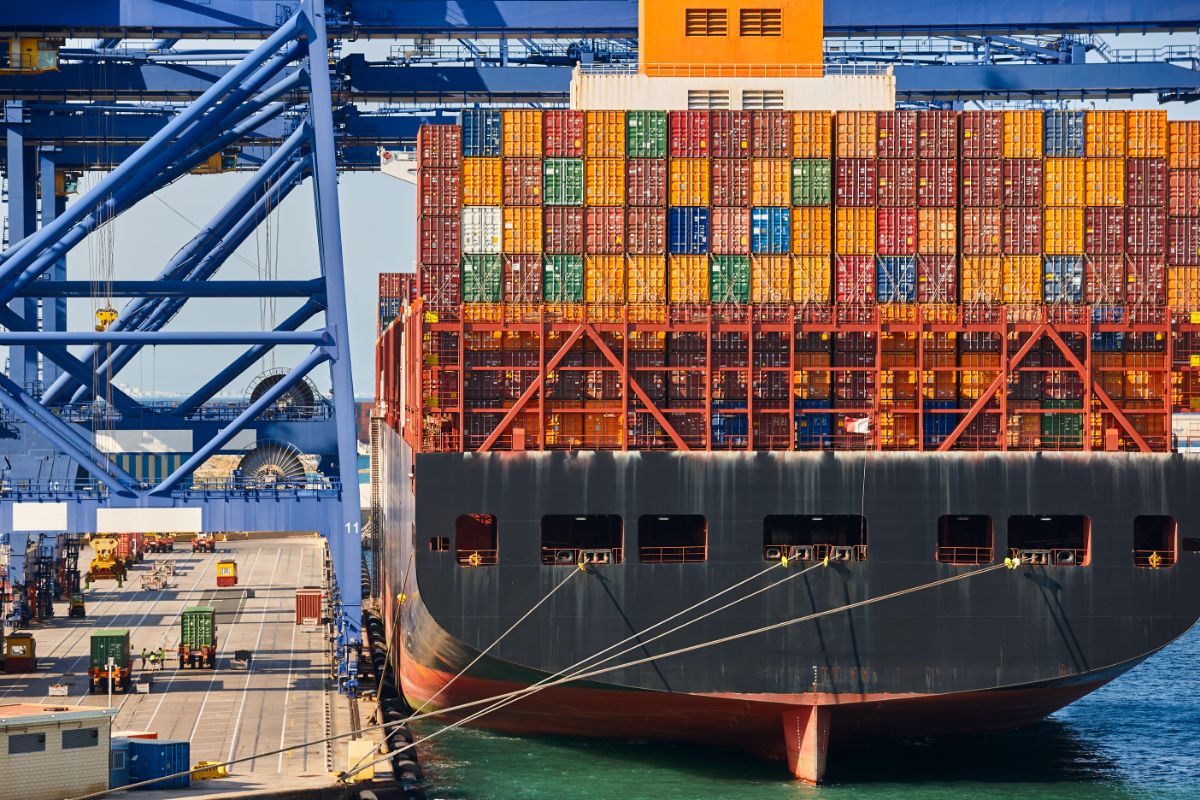
The MICE industry doesn’t only promote local tourism, but also international tourism. This is especially the case in countries like ours, where a majority of our workforce is fluent in English. Combined with our reputation as a highly hospitable and friendly locale, this makes us one of the most ideal locations for MICE events.
The fact that the MICE tourism industry puts us in the spotlight is a huge benefit for our economy, as it provides the opportunity for our businesses to engage in international trade and gain the attention of those in other countries.
MICE tourists, as they are brought to the area for a planned purpose, typically spend more time in the area than the average tourist — and do so in larger numbers. This not only means they spend more on accommodations but also more money on things like food, attractions, shopping, and the like.
This is a huge contribution that creates a multiplier effect. Each time a MICE event is held, more high-spending visitors flock to the area, providing high yield and return on investment for event organizers and participating businesses. This, in turn, boosts our economy and its competitiveness.
Under the MICE industry are conventions and exhibitions — two types of events made for the presentation and/or exchange of knowledge and new technology from industry experts and professionals.
Attendees can experience relevant discussions and demonstrations for topics they are interested in. On top of helping them learn more about these topics, it also presents much in terms of economic value, as this new knowledge can be brought to their respective businesses and industries. MICE events are important for the knowledge transfer necessary for development and innovation in many industries.
Post-pandemic, we see the rise of hybrid meeting solutions that take advantage of technological advances that ensure global reach through the most cost-efficient means.
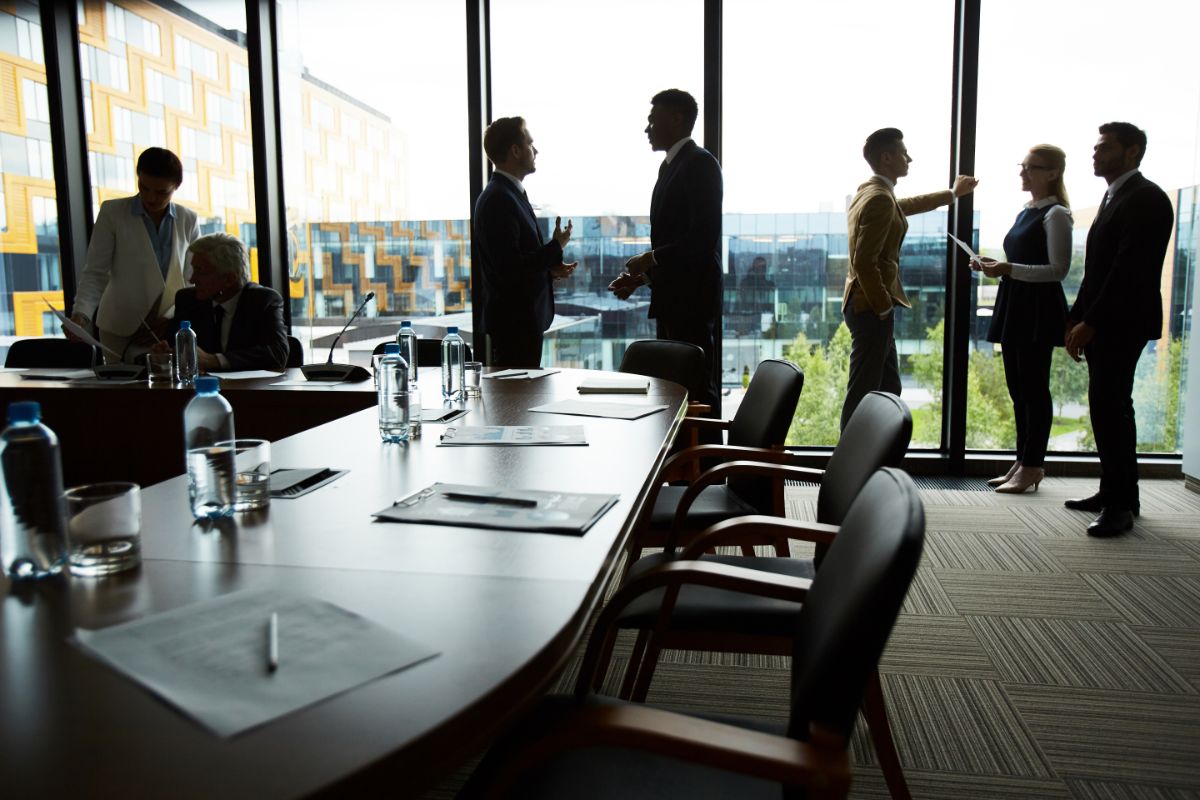
MICE tourism is a multifaceted industry. Each time a meeting, incentive, conference, or exhibition event takes place, many tourism stakeholders are involved. This includes:
- All modes of transport providers (both international and local).
- Accommodation providers (hotels, inns, and the like).
- Venue providers (multipurpose centers, event centers, concert halls, and more).
- Event organizers (including related services such as catering, designers, audiovisual support, etc.)
- Food and catering services.
- Businesses that can provide pre- and post-event opportunities.
- Businesses that participate in or sponsor the events, such as trade shows and exhibitions.
- Social program leaders for delegates and participants.
As you can see, there are many players in a successful MICE event. This means that they provide business to many sectors and industries — not just tourism. And this further shows just how MICE tourism creates a multiplier effect on our economy.
Tourism is made up of several segments, and MICE tourism, in one way or another, provides opportunities for each segment to participate. Be it cultural tourism, city tourism, gastronomy tourism, or others, attendees are encouraged to experience what each area has to offer.
This is because MICE events often have leisure programs that tap into each of these segments. These are held before, during, and after the main event, to enhance the overall experience and entertainment of attendees.
Key Takeaway
The importance of the MICE tourism in the Philippines lies in the many benefits and advantages it presents for our economy. Not only does it place us in the international spotlight, but it also provides many opportunities for our businesses and cities.
Interested in hosting a MICE tourism event of your own? When it comes to picking the perfect venue, consider the top convention hall in Manila : World Trade Center Metro Manila (WTCMM). Our strategic location, amenities, services, and more can help make sure your event runs smoothly — contact us today to learn more!
Planning an Event?
Be it big or small, our goal is to make your event a resounding success.
Most Popular Blogs

Factors to Consider in Choosing an Event Venue

5 Ways To Organize A Conference

5 Seating and Table Arrangements Used For Different Kinds of Events
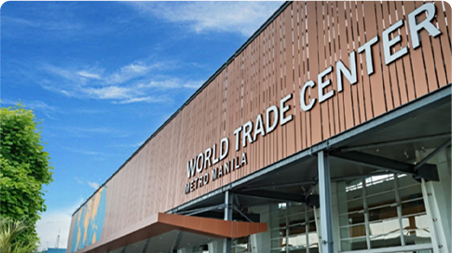
Lorem ipsum dolor sit amet, consectetur adipiscing elit...

- Market information
- MICE tourism
- Market Potential
- Share this on:
The European market potential for MICE tourism
MICE tourism includes travel to meetings (M), incentives (I), conferences (C), and exhibitions (E), of which the conference market is the most lucrative. The United Kingdom and Germany are the biggest European markets. However, the approach to this market is fundamentally different from that of leisure tourism. As a business you can play a role in the facilitation of the event itself, or participate in the leisure programme before, during and/or after the event. This leisure part provides interesting opportunities, because more and more delegates want to extend their visit to the destination. To raise interest, you need to offer products and services that are sustainable.
Contents of this page
- Product description
- What makes Europe an interesting market for MICE tourism?
- Which European countries offer most opportunities for MICE tourism?
- Which trends offer opportunities on the European market for MICE tourism?
1. Product description
MICE tourism refers to business travel for the purposes of Meetings, Incentives, Conferences and Exhibitions. These are organised to achieve a wide range of business, academic, professional or cultural objectives. The acronym of MICE clearly identifies the components of the market, such as displayed in Figure 1.
Figure 1: Components of MICE tourism
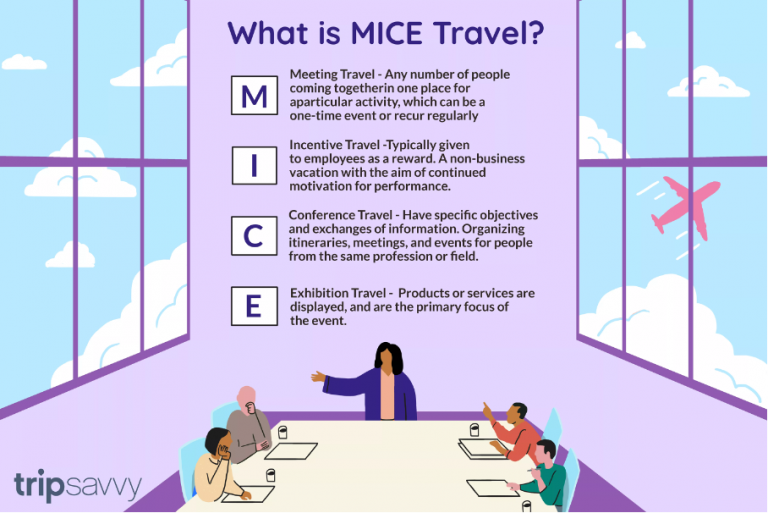
Source: www.tripsavvy.com
MICE tourism is a niche within business tourism. However, the word business needs to be interpreted in a broad sense. It also includes public bodies, semi-public bodies such as non-governmental organisations, associations, universities, and any other kind of organisation.
MICE tourism is a type of tourism where large groups of people come together in a particular place and for a particular reason, such as a mutual interest. Therefore, it can also be considered a specific kind of group tourism. When meetings involve a large group of people, they are normally held at convention centres.
Over the past few years, the term MICE has become less popular. Increasingly, it is referred to as the meetings industry or the events industry.
As a business you could assist in facilitating MICE events. This means that you could contribute by providing all kinds of creative services, such as directional signages, banners, show displays, kiosks/exhibit space, event photography, event marketing, sponsorship management, AV/technical production, group air fulfilment, on-site event logistics & staffing, supplier management, virtual meetings, and risk management services.
- Contribute to an event by offering a leisure programme before, during and after the formal event. Make sure that attendees of MICE events at your destination do not only fly to your country for a three-day conference, but try to make an effort to extend their trip and try to create cross-overs with other niche-markets in tourism such as cultural tourism , adventure tourism , nature tourism , or wellness tourism . As the preparation and planning of a MICE events takes a long time, even several years, you need to have a pro-active attitude and realise that you need to invest time years before you may reap the fruits of your efforts.
2. What makes Europe an interesting market for MICE tourism?
The MICE market is the highest revenue contributor to the tourism industry. Globally its value accounted for $805 billion in 2017, $916 billion in 2019 and it is projected to reach $1,439 billion in 2025 and $1,780 billion in 2030. So the global market shows a continuous growth – with a dip in 2020 due to the COVID-19 pandemic.
There is a number of factors that drive the growth of MICE tourism. Some of these factors are listed in Table 1.
Table 1: Factors that drive and impede the growth of MICE tourism
All MICE niches are on the rise and (before the outbreak of the COVID-19 pandemic) it was expected that this growth would continue in the future. Yet, globally, the Meetings niche is the biggest of the four. In 2017 it accounted for $505.8 billion of the revenues.
The European MICE market is the biggest in the world
Europe dominates the global MICE market with a market share of 50%, and it is expected that Europe will keep this position until 2030. Also, in terms of the number of international association conference participants, Europe is the largest market in the world. In 2000, 6% of all outbound trips from Europe were related to MICE. Of the outbound MICE trips 48% was within the niche of Conference/congress/seminar, 42% was related to Exhibitions/trade fairs and 10% to Incentives (unfortunately figures about Meetings were not registered).
The European MICE market is not only attractive because it is big and growing. It is important to note that MICE tourism has a positive impact on the growth of businesses, cities, and destinations as it is an influential and significant economic factor, because:
- Business travellers spend more than leisure travellers in a short period of time (but they are more demanding as well!).
- MICE events serve as networking opportunities for all businesses involved, and so they have a positive effect on many other industries and in particular on the local tourism industry.
- Professional contact and sharing of knowledge give a boost to creativity and innovation.
- MICE events can give a boost to the local job market.
- Attendees of MICE events may extend their stay to enjoy their leisure time at the destination, while they may also decide to return later with their partner, family or friends for a holiday.
- Because MICE tourism is not bound to the regular tourism seasons in Europe, MICE events are particularly welcome in the low tourism season.
- MICE tourism may enhance the reputation of a destination.
So the European MICE market is a very lucrative and profitable kind of tourism which offers great opportunities for any destination.
Conferences are the jewel in the crown of MICE to focus on, because they are the most lucrative. Conferences of international associations, such as the ones for architects or cardiologists, are a good example. They may attract up to 30,000 attendees. If you are located in a country that is already popular for leisure tourism and has an attractive climate, that is an advantage. It is likely that the key infrastructure of airline connections, airports, and hotels is already in place. They make your destination attractive for incentive travel. Tanzania is a good example of such an incentive destination.
As the MICE sector is increasingly looking for unique and memorable experiences, new MICE destinations are emerging, and they may become more important than before. Countries in Latin America, Africa and Asia are looking increasingly at incoming MICE tourism. A country such as Egypt has been building their infrastructure and sees a growth of MICE tourism. Be aware that the way your country has dealt with the COVID-19 pandemic will be a factor in the decision-making process of the organisers of MICE events. This is a disadvantage for emerging destinations.
For destinations to open their doors to MICE, a convention bureau needs to be established . This is an essential step to marketing and branding the destination which is different from the marketing for leisure and holidays. In fact, a convention bureau is a Destination Management Organisation (DMO), but different to tourism DMOs. The size of a convention bureau is not necessarily large. It could consist of one person. They are usually staffed by local people. The skills of the men and women working there determine how successful they can be.
The convention bureau in Kenya that is currently being established is a good example. It puts the country on the map as a MICE destination. Namibia , Rwanda and Ethiopia have recently come into the market with brand new convention bureaus. The main focus of these convention bureaus is conferences (of international associations) and incentives.
Important considerations for the planners and the attendees in the MICE market are location, quality, experiential value, and sustainability. These are important conditions that you need to have in place in your destination in order to be attractive to the European MICE market. Regarding the location, it is mainly accessibility, security and sufficient capacity that matter.
Quality refers to facilities such as customer service, safety/security and reliable transport, clean and comfortable accommodation, good catering, and conference rooms with excellent technical infrastructure. Experiential value refers to a location that offers a unique and memorable experience at a reasonable price, for example by means of an exciting leisure programme before and/or after the formal part of the programme.
- Ensure that you focus on quality, experiential value and sustainability.
- Attend classes at the MICE Academy in Africa , if you can, to learn about the MICE industry and to establish the necessary skills, or by attending one or more events by ICCA (International Congress and Convention Association) from which you learn pretty quickly. It is good to know that the MICE industry is quite a cooperative and collaborative industry, in which contacts are easily established.
- Keep informed about how to respond to COVID-19 and on how to manage the effects of COVID-19 .
3. Which European countries offer most opportunities for MICE tourism?
The share of European countries is quite stable. The United Kingdom and Germany have been the biggest source markets for MICE and business travels in Europe for years. The list is led by the UK market with 4.5 million outgoing MICE trips a year, directly followed by the German market with 3.3 million MICE trips. These two leaders are followed by France with 1.6 million MICE trips. Switzerland (a non-EU country), Spain and Italy rank lower with a similar share of respectively 1.1 million, 1.1 million and 1.0 million outbound MICE trips.
Note: the data for Spain are from 2000, the other data from 2012.
United Kingdom
The United Kingdom is the most important country of origin for outbound MICE tourism. In 2012 the country counted 4.5 million outbound MICE trips. Although the data of how these trips were distributed across the MICE niches are 10 years old, it is likely that the majority of outbound MICE trips are for meetings and incentives, as the number of MICE trips to conferences and exhibitions is relatively small.
The United Kingdom market looks promising for small and medium-sized enterprises (SMEs) in the field of leisure, as 29% of business travellers that were interviewed during the corona pandemic would like to extend their stay to enjoy leisure time at the destination in the future.
Table 2: Some MICE statistics of the United Kingdom
The German outbound MICE market is the second largest, with 3.3 million trips in 2012. In Germany outbound MICE trips constitute over a third of all outbound business trips (35%). Although the data in the table are incomplete, it is likely that the biggest contributors to the outbound MICE trips are meetings and conferences.
Companies, mainly in finance, insurance, pharma and automotive, have a large share in the outbound MICE market and spend high budgets on events and incentives. These industries predominantly organise kick-off events, conferences and meetings. In 2018 intercontinental events had a share of 20.8%, a growth of 4.6% in 10 years. Only 15% of the travellers that were interviewed during the COVID-19 pandemic say they would like to extend their business trip at the destination for leisure purposes.
Table 3: Some MICE statistics of Germany
France is the third-largest MICE market in Europe, concerning outbound travel, but the size is much smaller (1.6 million outbound trips) than the United Kingdom (4.5 million) and Germany (3.3 million). The French MICE market takes a large share of outbound business travel (40%). Although the data for France are incomplete, it is likely to assume that trips to Exhibitions and Conferences make up the biggest share, whereas the contribution by trips to Meetings and Incentives is quite small. One in five travellers that were interviewed during the COVID-19 pandemic say they would like to extend their business trip with some leisure time.
Table 4: Some MICE statistics of France
The market size of outbound MICE tourism in Spain counted 1.1 million trips in 2000. Compared to the other countries in the top five, MICE tourism has a very big share in business tourism at large: 74%. The data for Spain are incomplete, yet the table shows that it is likely that outbound Conference and Exhibition trips make up a similar share of about half a million. For leisure businesses Spain looks like a promising market, as one third of the business travellers would like to extend their business trips with leisure activities.
Table 5: Some MICE statistics of Spain
Italy is ranked last in the top five of European countries in terms of the size of the outbound MICE market. Its market size is nearly as large as in Spain. Similar to Germany, the outbound MICE market makes up a share of one third of the outbound business market (34%). Incentive trips and Conference trips each constitute about one third of the market. The remainder is composed of outbound trips to Meetings and Exhibitions, although data are not available. Just like in Spain, Italian business travellers are likely to extend their future trip with leisure activities (39%), which makes it an interesting market for businesses.
Table 6: Some MICE statistics of Italy
- Target associations with membership across Europe (and beyond) to attract MICE events from the European market, instead of targeting specific countries. The challenge is to enter the bidding system and to win the event, which takes place a number of years in advance and for which a lot of paperwork needs to be completed. It is a competitive tendering system usually led by the convention bureau. The ICCA website provides good reports about strategies for bidding. Rwanda can act as a best practice, as they have a very efficient convention bureau .
4. Which trends offer opportunities on the European market for MICE tourism?
There are two main trends on the MICE market that stand out: digital transformation/hybrid events and sustainable travel. These trends offer opportunities for innovative concepts.
Digital transformation and hybrid events
The COVID-19 pandemic has caused a major disruption to MICE tourism. Although a structural change of the MICE industry had already started before because of the use of social media, meeting apps and the shift towards virtual and augmented reality elements, the pandemic has boosted the digital transformation.
Many events hosted in 2020 and 2021 have been offered as hybrid events, and it is anticipated that hybrid events will be here to stay, and that its share will grow. Companies, associations and potential participants have become more cautious about travelling internationally, and because many people have lost income, they may have become more hesitant before paying a lot of money on attending an event physically, while they can also attend online by means of applications such as Zoom or Teams. It is likely that at hybrid events the share of live will gradually increase at the cost of the share of virtual over the years. The face-to-face part may become the new luxury.
This transformation to hybrid events is a big challenge for the entire MICE industry, for the associations as well as for the destinations, venues, convention centres, hotels, and so on. Therefore, it is anticipated that the change is going to shake up the MICE industry a lot. All parties need to at least have basic plans to adapt to this trend and run hybrid events. Many providers of conference and congress venues are already responding to the changes in demand and have been investing in technology for hybrid or digital formats.
The rise of hybrid events does also have advantages, such as:
- Companies in the UK who started to experiment with virtual events have caused an increase in business of MICE agencies.
- Compared to traditional on-site events, hybrid events are virtually expanded in space and not subject to one specific location. So, they will be open to larger communities.
- In normal times the very big conferences could only be hosted by a limited number of cities, because they have the appropriate venue and hotels. If the events become hybrid, and physical attendance gets smaller, the events are open to many more destinations. So new destinations are able to bid for such events for the first time.
Sustainable travel
The increased public awareness of the environment in Europe also affects MICE tourism. In fact, sustainability is now one of the main criteria for companies to choose the right venue. For example, two-thirds of buyers and sellers in the MICE market are incorporating Corporate Sustainable Responsibility into their incentive programmes. MICE destinations should try to find a fair balance between the economic benefits of the event and the negative social and environmental consequences of the travel and tourism associated with it.
It is especially attendees from generation Y and generation Z who are aware of and concerned about sustainability. For 65% of Generation Y employees, dedication of their employer to sustainability is key for their loyalty to the company. The behaviour of these generations is increasingly influenced by ethics, moral values, concerns about the environment, animal welfare, production and labour practices, and desires to positively impact communities and people.
These travellers demand availability and affordability of ‘green’, ‘eco’, ‘climate neutral’ and organic services and products. Many do not only want to reduce their holiday footprint, or visit a destination, but also to enrich it (‘do-good, feel-good’ holidays, ecological tours).
Sustainability has become a trend in tourism and its importance will evolve further in the future, boosted by the international United Nations Sustainable Development Goals and the political agenda of national governments in the EU. With the growing importance of Gen Y and Gen Z for the tourism market, the demand for more sustainable tourism experiences will expand, so the pressure for businesses to act will increase.
Sustainability criteria may play an important role in the bidding process, so convention bureaus and their associated providers at the destinations need to take aspects of sustainability in service, product, accommodation and other areas into account. Having a strategy for sustainability can convey credibility and trustworthiness.
For you as a business, sustainability provides opportunities to tap into the MICE market by creating the link between the formal MICE event and the local community, its nature and its culture by offering sustainable products and services, excursions, tours, etc. It also offers the opportunity to involve the local community in these offerings and to provide unique and memorable experiences.
Euromonitor published a ranking of countries around the world based on sustainability of tourism. You can check this list to see how sustainable your country is compared to others. The report also lists the major permanent changes in consumer behaviour per world region. The report can help your business to become more sustainable and purpose-driven.
- Visit the Global Sustainable Tourism Council website, which provides guidelines on how to develop a sustainable business.
- Keep in mind that customers are reluctant to pay a premium for more environmentally sustainable products or services. You can also try to make your business or product offer greener and get certified.
- Collaborate with other stakeholders at the destination, such as local residents and businesses, also from other sectors. This could be local guides or experts, providers of local food and of local accommodation, local farms or factories, and more (look at the website of Tourism for SDGS for an example in East Africa).
This study was carried out on behalf of CBI by Molgo and ETFI .
Please review our market information disclaimer .
- Entering the European market for MICE tourism products
Enter search terms to find market research
Do you have questions about this research?
Ask your question
MICE is a market offering great benefits to emerging destinations. One thing that they do have is ‘ novelty value ’. In the sense that, if we take London or Amsterdam or Paris, most professional people have been there. But a destination like Colombia, for example, is not so well known. That is an important card that they can play when they’re bidding – in normal times. Rob Davidsson, Managing Director MICE Knowledge
It is crystal clear that the MICE sector has an added value by organising live and face-to-face events. It is their task to argue, to defend, and to develop live encounters into very special moments. This will also be the challenge for any event organising party in the future. After the corona pandemic I think we will not automatically switch back to the old normal. The MICE sector needs to pay a great deal of attention to careful planning, facilitation and moderation of live encounters, in order to maximise the benefits of meetings. Monika Birkle, Haaga Helia University, Finland.
Related research
- What is the demand for outbound tourism on the European market?
- What trends offer opportunities or pose threats on the European outbound tourism market?
- What are the requirements for tourism services in the European market?
- (opens in a new tab) Twitter
- (opens in a new tab) Facebook
- (opens in a new tab) LinkedIn
- Help & FAQ
Impacts and Benefits of MICE tourism: a framework for analysis
- Department of Economics
Research output : Contribution to journal › Article › Research › peer-review
T1 - Impacts and Benefits of MICE tourism: a framework for analysis
AU - Dwyer, Larry
AU - Forsyth, Peter J
M3 - Article
SN - 1354-8166
JO - Tourism Economics
JF - Tourism Economics
The impact of social changes on MICE tourism management in the age of digitalization: a bibliometric review
- Review Paper
- Open access
- Published: 28 February 2024
Cite this article
You have full access to this open access article

- Inmaculada Martín-Rojo ORCID: orcid.org/0000-0003-0751-5253 1 &
- Ana Isabel Gaspar-González ORCID: orcid.org/0000-0002-0042-9566 1
758 Accesses
Explore all metrics
The meetings, incentives, conferences, and Exhibitions (MICE) tourism has intensively grown in recent decades. The MICE sector has also been strongly affected by social and technological changes, especially new social habits resulting from the COVID-19 pandemic. Our research maps the state of the art in MICE tourism and its digitalization from 1997 (first published article found on the subject) to 2022, as well as the changes brought about by COVID-19 to the management of MICE tourism. To identify the main changes caused by COVID-19 pandemic in MICE tourism management, we carried out a survey based on surveys with Conference managers, Exhibition and Trade Fair Centers, and Convention Bureaus in Spain, a leading country in MICE tourism worldwide. For this purpose, we carried out a survey based on surveys with managers of Conference, Exhibition and Trade Fair Centers and Convention Bureaus in Spain, a leading country in MICE tourism worldwide, to identify the main changes that the COVID-19 pandemic has caused in the management of this type of tourism. Based on the results obtained, a bibliometric analysis was carried out using the software SciMAT to find out the thematic evolution of the terms MICE tourism, digital and Business Tourism. This study identifies the most significant topics in MICE tourism management during the pre-pandemic period (1997–2019), the pandemic, and post-pandemic period (2020–2022). We also analyzed the most cited concepts during 1997–2019, as well as their evolution towards other concepts in 2020–2022. Considering the results obtained, future lines of research related to innovation, digitalization, social networks, and destination analysis are proposed for a better and more competitive management of this tourism activity.
Similar content being viewed by others

Impact of tourism development upon environmental sustainability: a suggested framework for sustainable ecotourism
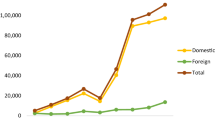
The impact of social media marketing strategies on promoting sustainability of tourism with fuzzy cognitive mapping: a case of Kalanggaman Island (Philippines)

The impact of TV series on tourism performance: the case of Game of Thrones
Avoid common mistakes on your manuscript.
1 Introduction
The tourism industry is one of the main economic activities worldwide, consisting of multiple types of tourism, including meeting and business tourism. Meetings, Incentives, Conferences and Exhibitions (hereafter MICE) tourism has rapidly emerged as one of the most important and fastest-growing sectors within the whole industry. Getz ( 2008 ) defined event tourism as everything that falls within an integrated line of events with a common approach to development, organization, and marketing.
MICE tourism as a segment is on the rise and has a significant multiplier effect on other economic activities in the destinations where it is developed (Yeoman et al. 2014 ). Before the pandemic, it showed a growing trend, and figures have only continued to rise after it.
On the other hand, digitalization is transforming society and the business world (Kraus et al. 2022a ) and MICE tourism is no exception. Many scholars (Haffke et al. 2016 ) have defined digitalization as a digital transformation that encompasses new communication channels showing more current forms of interaction and participation. Others (Legner et al. 2017 ) have described it as the changes brought by information technology (IT) to automate parts of activities or tasks.
There are also those who think this digital transformation process seeks to improve an organization by generating important changes in its characteristics by combining new information, computer, information and/or connectivity technologies (Vial 2019 ).
However, the increasing digitalization and other technological innovations have been partly imposed more rapidly by COVID-19 (Kramer et al. 2023 ; Standaert et al. 2021 ).
All of this has sparked researchers’ interest, and academic literature on MICE tourism and digitalization has grown accordingly. These topics are being increasingly studied by authors seeking to analyze digital transformation and MICE tourism in this new post-pandemic scenario in order to reflect upon the changes, the new strategies, and managerial needs of this new reality (Yang et al. 2022 ; Yung et al. 2022 ).
IOur aim was to compile and analyze all the literature on MICE tourism and digitalization research to contribute to the academic literature and describe its practical and theoretical implications. Therefore, this work took stock of the knowledge on the topic by studying the following questions:
What are the main changes that digital transformation has caused in MICE tourism, especially post COVID-19 pandemic?
What is the state of the art in MICE tourism and its digitalization from 1997 to 2022?
In order to answer these questions, this paper delimited the conceptual framework to identify the most recurrent and significant topics. Then wecarried out the surveys to identify the terms that would be used as descriptors in the next stage. Secondly, we did a systematic review of the literature (Kraus et al. 2020 ) by gathering documents from the Web of Science (WoS) database of Clarivate Analytics until 2022; these were then combined with a bibliometric network analysis. For the bibliometric analysis the software SciMAT was used together with a co-occurrence analysis to connect the keywords by establishing the relationships between these keywords (Callon et al. 1991 ).
The results have been represented through graphs, strategy maps for each of the periods of the study, keyword overlay maps, and a longitudinal map of thematic evolution.
We then discuss the conclusions drawn from our research, which highlight and expand on how MICE tourism and digitalization are of great interest not only for the academic world but also for companies in the industry, given that it is a sector which seeks to continue to grow in a new digitally transformed environment where innovation and technology are crucial.
Studying digital transformation as a concept in a specific sector has not only led us to theoretical contributions, but also to understand how this transformation affects the management of an important economic sector such as MICE tourism.
2 Literature review and theoretical background
The increasing digitalization in the last two decades has had environmental, societal, and institutional implications, which also affects the business world involved in a digital transformation.
There are different digital transformation definitions; according to Stolterman and Fors (2004, p. 689) “digital transformation comprises the changes associated with the application of digital technology in all aspects of human society”. Martin ( 2008 , p. 160) defines digital transformation as “the use of information and communication technology, not when trivial automatization is performed, but in the case where fundamentally new capabilities are created in business, public government, and in the lives of people and society”. Another definition is that “digital transformation is the combined effects of several digital innovations bringing about novel actors (and actor constellations), structures, practices, values, and beliefs that change, threaten, replace or complement existing rules of the game within organizations, ecosystems, industries or fields” (Hinings et al. 2018 , p. 53). In short, digital transformation brings about changes at all levels, thus affecting the business world.In the business world, “digital transformation is the use of new digital technologies such as social media, mobile technology, analytics, or embedded devices to enable major business improvements, including enhanced customer experiences, streamlined operations, or new business models” (Fitzgerald et al. 2014 , p. 2); in the words of Westerman et al. ( 2011 , p. 5), it “is the use of technology to radically improve the performance or reach of enterprises”. These changes also affect management, as “digital transformation is an ongoing process of strategic renewal that uses advances in digital technologies to build capabilities that refresh or replace an organization´s business model, collaborative approach, and culture” (Warner and Wäger 2019 , p. 344), especiallyin marketing as “digitalization and the design and implementation of an e-commerce strategy can help traditional ecosystems evolve toward an entrepreneurial ecosystem” (Song et al. 2022 , p. 69). The increasing digitalization of economies showcases the importance of digital transformationand has made our research on digital transformation acquired greater relevance in the last twenty years (Kraus et al. 2021 ).
However, digital transformation is not only a technological issue, but also a managerial one. “Digital business model innovation refers to purposeful, non-trivial, dynamic changes made to the key elements of a business model by transforming analog, physical objects, processes, or content into primarily (or entirely) digital formats” (Trischler and Li-Ying 2023 , p. 19).
Although this phenomenon has been an on-going issue during the last two decades, the COVID-19 pandemic increased its importance, and future research should address the consequences of this throughout different industries and their approaches to digital transformation (Kraus et al. 2022a ). Digitalization has a positive influence on competitiveness, thus “digital technologies have generated new business opportunities for entrepreneurs; likewise, digital entrepreneurship allows different entrepreneurs to connect via a platform, thus facilitating access to global markets with growth potential” (Galindo-Martin, Castaño-Martinez and Méndez-Picazo 2023 , p. 1809).
This justifies carrying out this research on the impact of digitalization on MICE tourism management, an important industry in some countries such as in Spain.
A tourist is any person who leaves their usual place of residence for a period of less than one year for leisure, business, or other reasons (Martin-Rojo 2020 , p. 47). While leisure was the main reason for travelling in the 20th century, in the 21st century new and varied motivations are emerging, such as health, gastronomic, business, congress or convention tourism. Our research focused on business tourism, congresses, conventions, events, fairs and exhibitions, incentives and conferences, and we use herein the term “MICE tourism”, a term made official by the UNWTO in 2007 and stands for Meetings, Incentives, Conferences and Exhibitions to encompass all this activity. The interest in this type of tourism lies in the fact that according to the UNWTO Global Report on the Meetings Industry ( 2014 ) it “has reached maturity, positioning itself at the heart of tourism as one of the main drivers of the sector’s development and as an important generator of income, employment and investment” (p. 4).
This tourism segment encompasses the following activities (Martín-Rojo 2022 , p. 82–83):
Congresses: have a public objective, are organized by professional colleges or associations, universities, or federations, and they are not aimed at doing business. They usually have a fixed frequency, although sometimes they are held on an extraordinary basis, with a minimum duration of two days and of 50 participants.
Conferences, seminars, or symposia: may have a public or private purpose and they deal with a highly specialized subject. The minimum duration is 6 h―not always overnight― and there must be a minimum of 50 registrations. Unlike congresses, they are more pragmatic and interactive.
Conventions or corporate meetings: organized by a company or business group, with a set business orientation, presenting products, analysis of results, internal training, etc. They usually last 2 days with a minimum of 50 participants.
Incentives: trips organized by companies to reward employees’ performance.
Trade exhibitions and fairs: aim to bring together the supply and demand of products and services linked to a particular branch of economic activity at a specific time and place.
Based on these definitions, the MICE segment attracts tourists with a medium to high purchasing power and a high prescriptive capacity, and it also has a deseasonalized nature as it takes place mainly on working days. Mice tourist are in a sense “captive” tourist as their destination choice depends on the event venue, fair, congress, etc., some of which take place in the same destination and thus create destination loyalty.
This type of tourism generates wealth in quantitative terms due to the tourists’ high purchasing power it attracts, as well as in qualitative terms by generating knowledge and talent.
These characteristics and the research carried out to determine the requirements a destination must have to develope MICE tourism (Lipianin-Zontek and Zontek 2021 ; Vaid and Vaid 2020 ) show that destinations must meet the following conditions.
Superior hotel offer.
Catering offer with large spaces for events with many participants.
Venues (conference and trade fair centers, hotels with conference halls, auditoriums, etc.)
Supplementary leisure, shopping, cultural offering, etc.
It must be a smart city or smart destination strategically committed to sustainability, accessibility, and new technologies, which favor the development of this type of tourism.
In terms of economic impact, according to the data published by the Association for Management Progress ( www.apd.es/turismo-mice-en-auge-espana , November 2020), 20% of the world’s tourists travel for business purposes, and business travel accounts for 53% more expenditure than holiday travel.Meanwhile, the growth of MICE tourism in the last decade has been exponential as it grew by more than 60%.
It is warranted to consider the multiplier effect induced by this activity, as analyzed by authors such as Hu and Yan ( 2022 ) and Wan ( 2022 ), by differentiating the following actors:-.
Companies specializing in MICE tourism as Professional Conference Organizers (PCO), Trade Fair and Conference Centers, Convention Bureaus, etc.
Service companies hired for the event to take place: translation and interpretation, hostesses, lighting and sound, transport, stand assembly, furniture rental, photography and video, graphic design and printing, catering, protocol, etc.
Companies providing supplementary services to the event: accommodation, catering, travel agencies, leisure, cultural services, etc.
Companies related to marketing: public relations, communication, promotion and advertising, specialized web portals, etc.
Public administrations that should provide services related to destination security, promotion for the attraction of events, preparation of candidatures, etc.
As Gavrila Gavrila and De Lucas Ancillo ( 2022 ) and Sedera et al. ( 2022 ) have reported, the COVID-19 pandemic has brought about a series of social changes that have lead to an increased digitalization, all of which have also had an affect on MICE tourism given the transformations taking place in the sector. MICE has seen a shift towards digital webinars, online platforms, holding hybrid events via streaming which require a greater involvement of audiovisual and technology companies. All of this means that events have less physical capacity, more online attendees, and health protocols in place to prevent COVID-19 with PCR testing of attendees to ensure safety.
We can predict that some of these changes are here to stay, such as the multi-site format (e.g., the International Association of Congress Associations World Congress held in November 2020 had its main venue in Taiwan with five sub-sites in other countries, broadcasted via streaming) or the durability of content on the web. This will give a greater international reach to congresses and meetings with less travel by attendees. However, the face-to-face format is expected to continue for trade fairs and events where the physical face-to-face experience cannot be replaced by the virtual format (Lekgau and Tichaawa 2022 ).
The benefits produced by MICE in the places where it is developed has been made evident by the theoretical framework and the existing literature review; however, MICE tourism management needs to adapt to new social changes, especially the increasingly digitalization seen following the COVID-19 pandemic.
According to 2019 data from the Ranking of the International Congress and Convention Association (ICCA) (2020 is not representative due to the negative effect of the COVID-19 pandemic on the tourism industry), Spain ranks third worldwide in MICE tourism, just behind the United States and Germany. In 2021, according to ICCA, the United States ranked first in the number of participants who attended congresses and Spain ranked second. In addition, according to a cluster analysis of Spanish tourist attractions, Spain ranked second worldwide in terms of tourist service infrastructure, cultural resources, and business travel (Lascu et al. 2018 ). Therefore, a survey on how the COVID-19 pandemic had affected a sample of Congress and Trade Fairs and Events Centers, Convention Bureaus and congress offices of City Councils and Tourist Boards in Spain was justified.
As stated in the literature review, there is a commitment to the digitalization of the economy in general, especially in industries such as MICE tourism. The social changes that have taken place in recent decades have led to the global development of MICE tourism, but the COVID-19 pandemic has led to changes in the management of this type of tourism, especially with profound digitalization. Consequently, our paper aims to map the state of the art in MICE tourism and its digitalization from 1997 (the first year in which the first article on MICE and event tourism was found) to 2022.
The research questions of this paper are as follows:
What are the main changes that digital transformation have caused in MICE tourism, especially after the COVID-19 pandemic?
To answer this question, a series of surveys were conducted with closed questions and an open question on the impact of the pandemic on the digital transformation and management of MICE tourism. The survey helped us to obtain information on the state of the art and identify the most important aspects to investigate how to adapt the management of MICE tourism to environmental changes.
For this purpose, the surveys results and literature reviewed above were used to choose the terms used in the co-word bibliometric analysis so as to find out what has been researched and what should be studied in future research.
The aim of the bibliometric study was to analyze and examine the studies published from 1997 to 2022 on MICE tourism and its digitalization in order to map the state of knowledge in the academic literature regarding this type of tourism before and after COVID-19. A review of the articles published in journals indexed in the WOS database was carried out with an advanced search for related terms.
Only some studies have analyzed post-pandemic MICE tourism through a bibliometric review. Some authors have examined the impact of COVID-19 on MICE events and post-pandemic changes in MICE tourism in countries in Southern Africa (Lekgau and Tichaawa 2022 ). Others, such as Schabbing ( 2022 ), have tried to study how COVID-19 led to a rethinking of MICE tourism in various German cities. However, we did not find any other bibliometric studies that could:
Offer conceptual, theoretical, and methodological suggestions for future research.
Contributed to advance knowledge on MICE tourism management and the irruption of digitalization, thus opening up new possibilities for discovering essential future research.
Offer practical implications related to innovative strategies so that MICE tourism professionals can promote actions to improve the tourist´s experience based on the results obtained.
All of this justified the present research.
3 Methodology
The purpose of the study is to map the state of the art and research results on MICE tourism with the advent of a global digitalization resulting from the COVID-19 pandemic, and how this has influenced the management of companies in this industry.
Our study used a methodology based on two phases. (Fig. 1 ).
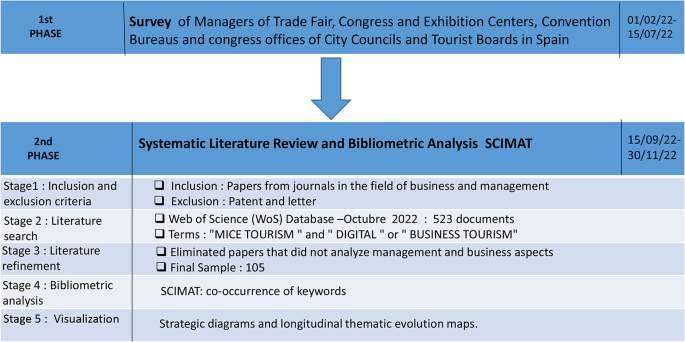
Source: Own elaboration
Study methodology.
In the first phase, the objective of the study was to find out the main changes caused by t COVID-19 in MICE tourism; it was an exploratory researchthat provided us with a first approach to the subject of study. The methodology in the first stage was based on optimizing the size of the surveyed sample.
The starting point was a survey aimed at those responsible for Fair, Congress and Exhibition Centers, Convention Bureaus and conference offices of City Councils and Tourist Boards in Spain.
The survey consisted of three closed questions and one open question. In the closed questions, ordinal variables were used in two items which allowed us to differentiate between them and order them according to a level. On the other hand, nominal variables were also used to determine the presence or absence of the item content. The open question completed the information of the previous one in case of presence (please refer to the Appendix ).
These surveys were carried out from 1 February to 15 July 2022. The sampling procedure was by email, using a simple random sample. The formulation of these items is justified by the fact that companies and their managers have had to adapt to a new digital world (Kraus et al. 2022a ), which constituted a challenge for companies in the MICE tourism sector and a need to adapt to the changes due to COVID-19 (Table 1 ).
The results obtained in this exploratory survey provided us with an approach to the subject of study. Based on the survey results obtained, the second phase of the study was carried out.
The objective of this second phase was to map the state of the art in MICE tourism and to identify the research topics of greatest interest to improve the competitiveness of this type of tourism by adapting its management to new changes in the environment. For this purpose, a systematic review of the existing literature (Kraus et al. 2020 ; Bouncken et al. 2015 ), was combined with a bibliometric network analysis to determine which documents should be included (Holzschuh et al. 2022 ).
The 2020 Preferred Reporting Items for Systematic Reviews and Meta-Analyzes (PRISMA) guidelines were considered to ensure that all available information was covered in this systematic review (Kraus et al. 2022b ; Page et al. 2021 ; Davaei and Gunkel 2024 ).
Furthermore, following Callahan ( 2014 ) as a reference, a first data search was started in September 2022 by all the authors of the study. A single database, Wos, was used because it is a reference and includes scientific journals with the highest international impact (Horvatinovic et al. 2023 ). This work first included analysis of all previous existing studies on the subject up to the time of data collection. The snowball method was also used, tracking references in other articles found in Wos, and potentially relevant journals were examined for findings.
After applying the inclusion and exclusion criteria (See Fig. 1 for more details), a total of 523 paper were collected.
Eligibility criteria were established to include studies, considering first of all the date, which included the first studies published on the subject up to the year 2022.
Secondly, for the field of study, all papers in the business and management category were included, and all those outside the field scope were excluded.
Thirdly, all papers in the format of article, meeting, review article, dissertation thesis and book were included, whereas patents and letters were rejected.
A filter was then performed with the terms: MICE Tourism, Digital and Business Tourism.
Of all the elements found, those that were not included in the categories of “Management” and “Business” were discarded, thus leaving a total of 105 documents.
Subsequently, we obtained the set of documents on which the bibliometric network software was applied.
The documents were evaluated using the SciMAT bibliometric network analysis tool (Cobo et al. 2011 ). This tool uses a co-word analysis as a methodological basis; in our case, we used the most salient aspects of the survey results carried out in the first phase as terms. The aim was to identify the contribution of these topics to the entire research field, as well as to determine the most relevant and productive aspects with the greatest impact.
3.1 Data collection
We examined articles published in the core collection of the Web of Science (WoS) database with an advanced search conducted on October 10, 2022 by entering the terms “MICE TOURISM”, “DIGITAL” and “BUSINESS TOURISM”, which were the results of the survey conducted in the first phase.
We included journal articles in the field of business and management and excluded patents and letters. In this advanced search, the Boolean operators “OR” and “AND” were used to connect the keywords. The term “DIGITAL” was entered with “AND”, so that it would always appear because the survey showed it as a relevant result and because digital transformation is the subject of multiple studies and publications (Kraus et al. 2022a ).
On the other hand, the connector “OR” was used with the terms “MICE TOURISM” and “BUSINESS TOURISM” since both terms were used interchangeably a decade ago, and our study collects data from much earlier dates.
This database (WoS) has records of articles from the journals with the highest international impact from 1900 to the present. The search was not limited to a particular type of document, but we excluded patents and letters. We did not discriminate by year of publication or by a minimum number of citations received and we considered all of them, reaching a total of 105 references (Sauer and Seuring 2023 ).
This analysis focused on the keywords above in the total number of documents selected. Therefore, only documents dealing with “MICE”, “DIGITAL”, and “BUSINESS TOURISM” appear.
4 Bibliometric analysis
The methodology applied for bibliometric analysis was a series of steps put forward by Cobo et al. ( 2011 ) using the software SciMAT (Fig. 2 ).
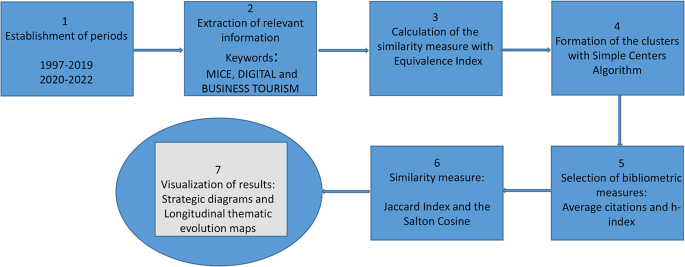
Flow diagram.
Establishment of periods
A search was carried out in October 2022, considering two periods: 1997–2019 (before the COVID-19 pandemic) and 2020–2022 (during and after the COVID-19 pandemic); the software SciMAT was used to determine the thematic evolution of the proposed terms, using the methodological basis of co-word analysis. The methodological basis of the co-word analysis was based on the idea that the co-occurrence of key terms described the content of the documents in an archive (Callon et al. 1991 ).
Obtaining the most important necessary information from the documents collected at the beginning. Here the frequency of co-occurrence of keywords was considered.
Calculation of the similarity measure to normalize the network; in our case, by means of the equivalence index (Callon et al. 1991 ).
Formation of the different clusters through the approximation of subgroups of keywords that are strongly linked. There are other clustering methods; the Simple Centers Algorithm was used in the study (Coulter et al. 1998 ; Cobo et al. 2011 ).
Selection of bibliometric measures of performance and quality. Average citations and h-indexes (Hirsch 2005 ) were obtained.
Selection of the similarity measure used to make the evolution and the overlay map. The Jaccard Index and Salton’s cosine were used in this analysis.
Visualization through strategic diagrams and longitudinal thematic evolution maps. Among others, two types of maps were generated:
Strategy maps: these are presented as an open 2 × 2 matrix where four possible themes are represented depending on the quadrant where the cluster is located, together with the parameters of “density” and “centrality”, as shown in Fig. 3 .
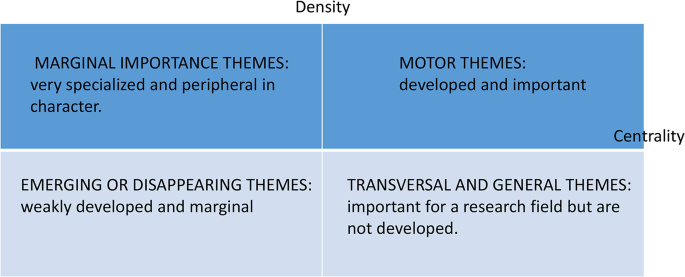
Source: Adapted from SciMAT
Strategy map diagram.
Overlay maps and longitudinal thematic evolution maps: they present clusters of themes evolving throughout different sub-periods. Graphically they appear as clusters linked between periods by continuous lines (where themes have the same keywords) or dashed lines (where elements other than theme names are shared).
In this bibliometric analysis, the bibliographic material was examined objectively and quantitatively, which was useful for organizing data specific to each thematic field. (Merigó et al. 2015 ).
This open-source scientific mapping software application allows the user to perform bibliometric network-based studies (co-word, co-citation, author co-citation, journal co-citation, co-author, bibliographic linking, journal bibliographic linking and author bibliographic linking). It is possible to choose different normalization and similarity measures such as: strength of association, equivalence index, inclusion index, Jaccard index, and Salton cosine. On the other hand, different clustering algorithms can be used to distribute the data, allowing the elaboration of strategic maps and thematic networks with respect to a set of previous documents. (Cobo, López-Herrera, Herrera-Viedma and Herrera 2012 ). The unit used in our analysis was the author’s keywords and the keywords corresponding to the publication source.
The survey was carried out among a significant sample of heads of conference centers, trade fairs and exhibitions, convention bureaus, and congress offices of local councils and tourist boards in Spain during 1 February to 15 July 2022.
According to Bello et al. ( 1994 ), considering a finite population (less than or equal to 100,000), the expression of the sample size would be as follows:
N = Sample size.
Np = Population size.
Z = Number of standard deviation units in the normal distribution that will produce the desired degree of confidence.
K = Error or maximum difference between the sample proportion and the proportion of the population that we are willing to accept at the desired confidence level.
P = Percentage of the population possessing the characteristics of interest.
The values used were:
Z = 1.96, value corresponding to a confidence level of 95%.
K = 0.05; error window: 5%.
P = 0.5, since this percentage was not known in advance, the worst-case scenario of working with 50% was used.
Using the formula above with these values, the sample size is 75.
The results obtained in the first phase are included in the following table.
Table 2 shows the percentages of favourable responses to each question (number of positive responses/ sample size x 100).
In the second phase, for the systematic literature review, we selected documents from the Web of Science (WoS) database based on the highlighted terms fromthe first phase of the study,which resulted in a total of 105 papers from 1997 to 2022, showing an upward trend throughout the entire period. This shows the interest in the topics and how these documents can serve as a backbone and guide for new management formulas that contribute to the development of the sector. (Kraus et al. 2024 ).
It also helped us to identify the main papers that have made significant contributions to the development of the topic (Kraus et al. 2023 ). These quantitative indicators measure the relevance of a field of research and are represented by the number of publications (Martínez-Climent et al. 2018 ), showing a considerable increase in scientific production over the last three years. (Fig. 4 )

Source: Own elaboration based on WOS data
Number of publications per year.
The results obtained in the first phase of our study methodology using descriptive statistical techniques were used for the bibliometric analysis: MICE tourism, Business Tourism and Digitalization.
After this bibliometric analysis, the most significant results obtained from the strategy maps were:
In the pre-pandemic period (1997–2019): 46% of the documents belong to this period. We must highlight that “digital business transformation”, “experience”, “tourism”, and “event tourism” were among the most developed topics, which are issues that have driven research during this period. However, there is also a great interest in other less developed but significant and transversal topics that could be studied in future research, such as sustainability (Fig. 5 ).
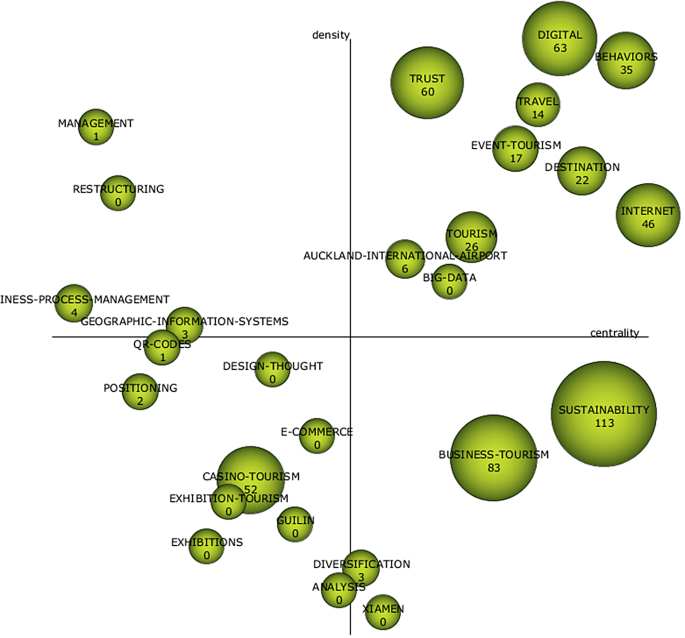
Strategy map (1997–2019).
In the period from 2020 to 2022: 54% of the records analyzed correspond to this period, where the most developed driving themes include “mediating-role” and “behavior”; however, there is great interest in other topics such as “technology”, “innovation”, “social media”, and “destination”. Interestingly, this coincides with the digitalization advances being developed in MICE tourism, as confirmed by the surveys carried out. Other worth noting emerging topics are “COVID-19” and “industry” (Fig. 6 ).
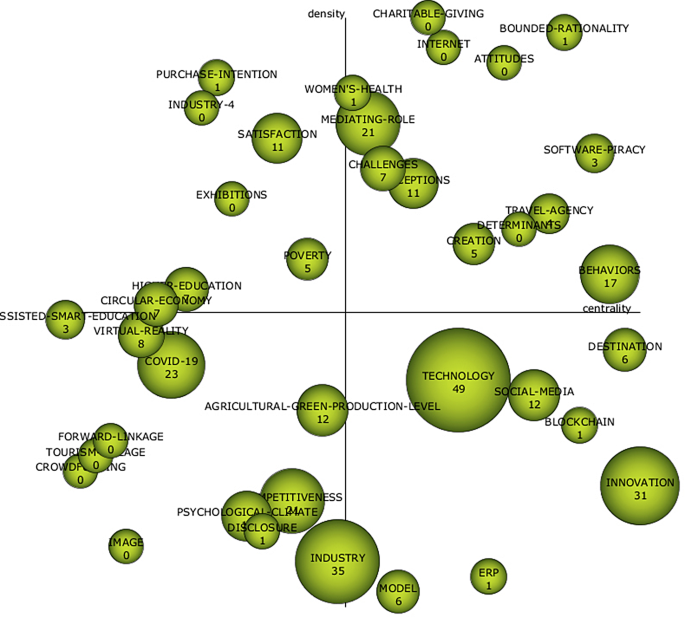
Strategy map (2020–2022).
On the other hand, to analyse the evolution of the keywords, we took the overlap map, which measures the number of keywords shared between successive sub-periods, and we observed the evolution of the keywords over the two periods of study in Fig. 7 , where each circle represents a period. The number of keywords in each period is represented inside the circle. The arrows linking the different periods (the horizontal ones) represent the number of keywords shared between them. The top incoming arrows represent the number of new keywords that emerged in a particular period, and the top outgoing arrows represent the keywords that disappeared after a given period and were not included in the next period.
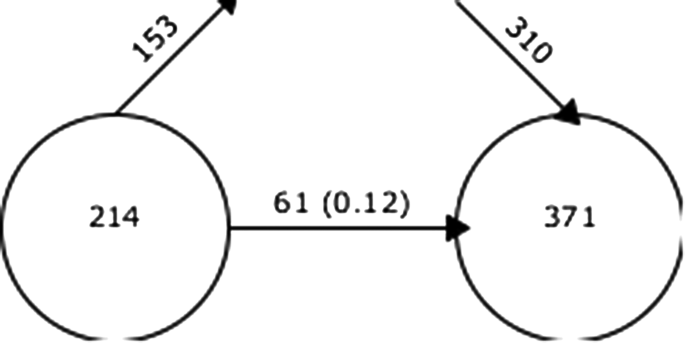
Keyword overlap map (1997–2022).
As it can be seen from the graphs, this is a research field with much growth ahead of it, as the number of incoming words doubled the number of outgoing words, which shows its interest in the scientific community. Finally, once we analysed how keywords evolved, we proceeded to study how the themes in the research field evolved based on the longitudinal map results, which provided us with information on how the themes had evolved by period and were linked to each other (Fig. 8 ).

Longitudinal map of thematic evolution.
Figure 8 represents the evolution of themes in MICE, Business Tourism and Digitalization research starting from the first period (1997–2019; first column) to the second period (2020–2022; second column). The continuous lines indicate that the linked topics share the subject, and the dashed lines mean that the topics share elements that are not the of the topic. On the other hand, the volume of the spheres is proportional to the number of papers published on each topic: “MICE tourism”, “Business Tourism”, and “Digital”.
The results show that the most cited concepts in the first period (1997–2019) were “Sustainability”, “Business Tourism”, “Digital”, and “Exhibitions”, which evolved in the following period (2020–2022) as follows:
“Sustainability” evolved to “Innovation” and― to a lesser extent― to “higher-education”.
“Business tourism” was relevant as it was highly cited during the second period to topics such as “destination”, “creation” and “COVID-19”; however, this relationship is represented with dashed lines as it shares elements other than the subject title.
“Digital” also stands out and was linked in the second period to “industry-4”, which is closely related to information technology (IT) systems and digitalization.
Despite not having many citations, ¨Exhibition as a concept also stands out but shows a strong link (a very marked continuous line) with the same theme in the second period, which gives us an idea of its development and potential. Similarly, “Internet” also shares a thematic area and is linked with a continuous line in both periods.
All of the above leads us to affirm that “sustainability”, as a central pillar of the tourism sector in general and MICE in particular, has evolved towards “innovation”. This results from needing greater innovation to minimize environmental impact, preserve natural resources, and in the case of MICE Tourism, innovate in responsible practices that benefit different communities, countries, and promote cultural understanding. All of this is vital to ensure the sector’s growth.
On the other hand, the evolutionary relationship between “digital” and “Indutry-4” is significant. The results of these concepts between the first and second periods show how “digital” has taken a step forward in the last three years at a global level. The MICE sector is therefore in a period of total digital transformation. That is the reason for the emergence of “Industry-4” as a new concept. The sector not only uses digital as a tool for innovation, but digital has changed how the way MICE tourism operates as environments become more competitive. Industry 4.0 can improve MICE business operations, affect how customers interact with them, and lead to completely new products and/or services.
6 Discussion
This paper proposed two research questions:
What are the main changes that the digital transformation has caused in MICE tourism, especially after the COVID-19 pandemic? What is the state of the art in MICE tourism and its digitalization from 1997 to 2022?
Regarding the first research question, the descriptive statistical analysis shows that the survey respondents in the sample highlight the incorporation of new information technologies in the management of their events, as well as the fact that the pandemic forced them to incorporate changes that are here to stay, such as hybrid events and the increasingly streaming of events.
This situation led us to delve into the vision that the academic world has of this industry, given its importance in the tourism industry, as this could establish guidelines from which the business world can use to guide their strategies and management. This justified the second question of our research.
Based on the bibliometric results, it is clear that prior to COVID-19 researchers focused their studies on the MICE sector on topics such as digital-business, transformation, experience, tourism and event-tourism, and they only began to consider research on issues such as technology, innovation, social media and destination after the pandemic.
The bibliometric study aimed analyse the studies published from 1997 to 2022 on MICE Tourism and its digitalization, but only some studies have used a bibliometric review to analysed post-pandemic MICE Tourism with. There are authors examining the impact of covid-19 on MICE events and post-pandemic changes in South African countries (Lekgau and Tichaawa 2022 ). Others, such as Schabbing ( 2022 ), studied how covid will make different German cities reimagine MICE Tourism. However, we did not find more bibliometric studies that offered conceptual, theoretical, and methodological suggestions for future research or contributed to advancing our knowledge on MICE Tourism management and the irruption of digitalization for discovering essential future research or giving practical implications on innovative strategies so MICE Tourism professionals can promote actions to improve the tourist experience.
As to the number of authors and journals published on these topics, we found that they almost doubled in the second period of our study, results confirmed by prior studies on the topic. Authors such as Stolterman and Fors ( 2004 ), Martin ( 2008 ) or Hinnings et al. (2018) had previously confirmed that digital transformation brings changes at all levels, but it also affects the business world. Authors such as Fitzgerald et al. ( 2014 ), Westerman et al. ( 2011 ), Warner and Wäger ( 2019 ) or Song et al. ( 2022 ) claimed that digital transformation affects the management of companies, and although this phenomenon has been an on-going issue during the last two decades, the COVID-19 pandemic increased its significance (Kraus et al. 2022a ). Following the COVID-19 pandemic, a series of social changes are taking place, leading to increased digitalization, as reported in the works of Gavrila and De Lucas Ancillo (2022) and Sedera et al. ( 2022 ), which also have repercussions in MICE Tourism where transformations have taken place, such as digital transformation (webinars, online), holding events in a semi-presential manner via streaming, with a greater weight of audiovisual and technology companies; and more online than physical attendees.
We can predict that some of these changes are here to stay, however, the face-to-face format will continue for trade fairs and events where the physical, face-to-face experience is irreplaceable by the virtual one (Lekgau and Tichaawa 2022 ). Likewise, this research confirms the need for management practices that take into consideration the increasing digitalization.
This research is a theoretical contribution to MICE tourism based on a bibliometric analysis of the state of the art in this field and it also identifies the most significant topics in MICE Tourism management before, during, and after the pandemic. Apart from carrying out surveys to find out the main changes that have taken place in the industry after the pandemic, we were able to confirm that there is a need for new management practices, especially digitalization. In fact the bibliometric analysis showed that after COVID-19 there is great interest in subjects such as technology, innovation, social media and destination. We thus conclude that it is necessary to innovate in destination management to develop MICE tourism and to commit to greater digitalization; for example, the main practical implication is perhaps that MICE tourism should be promoted in smart destinations. Based on the results obtain, we propose further research on innovation, digitalization, social networks, and destination analysis to improve MICE tourism management.
The innovation and contribution of this research lies in its bibliometric analysis on MICE tourism and digitalization since according to the Web of Science (WoS) database advanced search conducted on October 10, 2022 by entering the terms “MICE TOURISM”, “DIGITAL” and “BUSINESS TOURISM”, there is only one article that carries out a review of the existing literature in the period 2000–2019, just before the COVID-19 pandemic (Zazueta and Velarde: “Research on Meeting Tourism in the period from 2000–2019: A literature review”, in Pasos-Revista de Turismo y Patrimonio Cultural 20(3) , July-September 2022 ). Furthermore, based on the bibliometric analysis (a total of 105 papers from 1997 to 2022 were obtained for this analysis) and the surveys carried out, it is possible to identify new trends in MICE tourism after the pandemic to design new business management models that adapt to this new reality in future lines of research.
This research is not without limitations. The document selection was carried out only in the Web of Science (WoS) database, which may have led to the omission of articles of interest not included in this database. On the other hand, the different interpretations and definitions used for “MICE tourism”, “Business Tourism”, and “Digital” may have led to a bias in the search conducted. However, although the sample of 105 articles may seem insufficient at first glance, we consider it sufficient for the purpose herein, as we have taken the totality of records that the database yielded with the advanced search parameters described above. Nevertheless, in future research the selection of documents will be carried out in other databases.
Another limitation is that in the first phase of the research the survey was carried out among a significant sample of heads of conference centers, trade fairs and exhibitions, convention bureaus, and congress offices of local councils and tourist boards in Spain. In future research it would be carried out among a sample of managers in other countries, for example in the United Stated that ranked first in the number of participants who attended congresses ―Spain ranked second―.
7 Conclusions
The social changes that have taken place in recent decades have led to the global development of a particular type of tourism: MICE tourism. Likewise, the COVID-19 pandemic has led to changes in the management of this type of tourism in general and in the companies that develop it in particular, with an intense digitalization in the management of this economic activity.
This is evidenced both in the fieldwork conducted through surveys and in the bibliometric analysis carried out in this research, and, as presented in the literature review, other authors have also shown this. While from 1997 to 2019 there was a great deal of interest in underdeveloped topics such as MICE tourism, tourism management and sustainability, from 2020 onwards there have been significant changes in MICE tourism with increased digitalization.
The interest seen from 2020 onwards in issues such as technology, innovation, social media, and destination highlight the need to develop new management practices that take into account new information and communication technologies in the current dynamic and changing environment for companies and institutions working in MICE tourism. On the other hand, the interest in destinations suggests that events will not only be online but will also have a face-to-face nature, although accompanied by new technologies; it is important that this digitalization also takes place in the management of destinations, with a commitment to the creation of smart destinations to develop this type of tourism.
This paper’s main contribution to theory is its analysis of the concept of digital transformation and how it affects the management of an important economic sector: MICE tourism. There were previous works devoted to digital digitalization, but this paper presents the state of the art of digitalization in a particular sector (MICE tourism) based on a bibliometric analysis.
As for its social implications, it is worth highlighting the impact that the COVID-19 pandemic has had on society, such as changing work habits in favor of greater digitalization and also the habits of MICE tourists who choose to combine face-to-face events with online or hybrid events; and in some cases, events are held in several sub-venues, in addition to the main venue, connecting via streaming, thus the importance of innovating in designing new MICE product and destinations where these events are held, as well as using new technologies and social networks to manage this economic activity.
Based on the surveys carried out to identify the main changes in the industry after the pandemic and according to the results of the bibliometric analysis, this paper’s main pragmatic contribution is that after Covid-19 there is great interest in issues such as technology, innovation, social media, and destination, so it is necessary to innovate in the management of tourism companies and destinations to develop MICE tourism and to commit to greater digitalization by promoting the development of MICE tourism in smart destinations.
While from 1997 to 2019 there was a great deal of interest in underdeveloped topics such as MICE Tourism, Tourism Management and sustainability, from 2020 onwards, there has been significant changes in MICE Tourism with increased digitalization. From 2020 onwards, interest in issues such as technology, innovation, social media and destination, highlight the need for companies and institutions working in MICE tourism to develop a new management. Also, it is important that this digitalization takes place in the management of destinations, with a commitment to Smart Destination for the development of this type of tourism.
Thus, this research has allowed us to identify the new trends in MICE tourism after the pandemic and to design business management models that adapt to the new situation of the environment in future research.
Bello L, Vázquez R, Trespalacios JA (1994) Investigaciones de mercados y estrategias de marketing. Ed. Civitas, Madrid
Google Scholar
Bouncken RB, Gast J, Kraus S, Bogers M (2015) Coopetition: a systematic review, synthesis, and future research directions. Rev Manag Sci 9:577–601. https://doi.org/10.1007/s11846-015-0168-6
Article Google Scholar
Callahan JL (2014) Writing literature reviews: a reprise and update. Hum Resour Dev Rev 13(3):271–275. https://doi.org/10.1177/1534484314536705
Callon M, Courtial JP, Laville F (1991) Co-word analysis as a tool for describing the network of interactions between basic and technological research: the case of polymer chemsitry. Scientometrics 22(1):155–205. https://doi.org/10.1007/bf02019280
Cobo MJ, López-Herrera AG, Herrera-Viedma E, Herrera F (2011) An approach for detecting, quantifying, and visualizing the evolution of a research field: a practical application to the fuzzy Sets Theory field. J Informetr 5(1):146–166. https://doi.org/10.1016/j.joi.2010.10.002
Cobo MJ, López-Herrera AG, Herrera‐Viedma E, Herrera F (2012) SciMAT: a new science mapping analysis software tool. J Assoc Inf Sci Technol 63(8):1609–1630. https://doi.org/10.1002/asi.22688
Coulter N, Monarch I, Konda S (1998) Software engineering as seen through its research literature: a study in co-word analysis. J Am Soc Inf Sci 49(13):1206–1223. https://doi.org/10.1002/(SICI)1097-4571(1998)49:13<1206::AID-ASI7>3.0.CO;2-F
Davaei M, Gunkel M (2024) The role of intelligences in teams: a systematic literature review. Rev Manag Sci 1–39. 7 https://doi.org/10.1007/s11846-023-00672-7
Fitzgerald M, Herterich M, Wulf J, Waizmann J-C, Brenner W (2014) Embracing digital technology: a new strategic imperative. MIT Sloan Manag Rev 55(2):1
Galindo-Martín MÁ, Castaño-Martínez MS, Méndez-Picazo MT (2023) Digitalization, entrepreneurship and competitiveness: an analysis from 19 European countries. Rev Manag Sci 17(5):1809–1826. https://doi.org/10.1007/s11846-023-00640-1
Gavrila Gavrila S, De Lucas Ancillo A (2022) Entrepreneurship, innovation, digitization and digital transformation toward a sustainable growth within the pandemic environment. Int j Entrep Behav res Vol 28(1):45–66. https://doi.org/10.1108/IJEBR-05-2021-0395
Getz D (2008) Event tourism: definition, evolution, and research. Tourism Manage 29(3):403–428. https://doi.org/10.1016/j.tourman.2007.07.017
Article MathSciNet Google Scholar
Haffke I, Kalgovas BJ, Benlian A (2016) The role of the CIO and the CDO in an Organization. ’s Digital Transformation
Hinings B, Gegenhuber T, Greenwood R (2018) Digital Innovation and transformation: an institutional perspective. Inf Organ 28(1):52–61. https://doi.org/10.1016/j.infoandorg.2018.02.004
Hirsch E J (2005) An index to quantify an individual’s scientific research output. Proc Natl Acad Sci 102(46):16569–16572. https://doi.org/10.1073/pnas.0507655102
Article CAS PubMed PubMed Central ADS Google Scholar
Holzschuh GG, Moraes JAR, Garcia SB, Zanesco I, de Schneider CdeS, Kipper R L M (2022) Sustainable applications for disposal of recycled aluminum: a systematic literature review using the SciMAT software. J Sust Metall 8(3):945–963. https://doi.org/10.1007/s11846-023-00668-3
Horvatinovic T, Mikic M, Dabić M (2023) Dissecting entrepreneurial team research: a bibliometric analysis. Rev Manag Sci 1–39. https://doi.org/10.1007/s11846-023-00652-x
Hu B, Yan B (2022) Analysis System of MICE Tourism Economic Development Strategy Based on Machine Learning Algorithm. Mob Inf Syst 2022. https://doi.org/10.1155/2022/1283040
ICCA (2021) : Annual Statistics Study 2020.Available at www.iccaworld.org. Accessed 14 June 2020
Kramer SK, Liu-Lastres B, Cecil A, Shonkwiler E (2023) June). A post-pandemic reflection of the changing role of contemporary event professionals: implications for event professionals and higher education. J Conv Event Tour 1–21. https://doi.org/10.1080/15470148.2023.2224595 . Routledge
Kraus S, Breier M, Dasí-Rodríguez S (2020) The art of crafting a systematic literature review in entrepreneurship research. Int Entrep Manag J 16:1023–1042. https://doi.org/10.1007/s11365-020-00635-4
Kraus S, Jones P, Kailer L, Weinmann A, Chaparro-Banegas N, Roig-Tierno N (2021) Digital Transformation: an overview of the current state of the art of Research. Sage Open 11(3). https://doi.org/10.1177/21582440211047576
Kraus S, Durst S, Ferreira JJ, Veiga P, Kailer N, Weinmann A (2022) Digital transformation in business and management research: an overview of the current status quo. Int J Inf Manage 63:102466. https://doi.org/10.1016/j.ijinfomgt.2021.102466
Kraus S, Breier M, Lim WM, Dabić M, Kumar S, Kanbach D, Ferreira JJ (2022a) Literature reviews as independent studies: guidelines for academic practice. Rev Manag Sci 16(8):2577–2595. https://doi.org/10.1007/s11846-022-00588-8
Kraus S, Mahto RV, Walsh ST (2023) The importance of literature reviews in small business and entrepreneurship research. J Small Bus Manag 61(3):1095–1106. https://doi.org/10.1080/00472778.2021.1955128
Kraus S, Bouncken RB, Yela Aránega A (2024) The burgeoning role of literature review articles in management research: an introduction and outlook. Rev Manag Sci 1–16. https://doi.org/10.1007/s11846-024-00729-1
Lascu DN, Manrai LA, Manrai AK, Gan A (2018) A cluster analysis of tourism attractions in Spain. Natural and cultural traits and implications for global tourism. Eur J Manag Bus Econ 27(3):218–230. https://doi.org/10.1108/EJMBE-08-2017-0008
Legner C, Eymann T, Hess T, Matt C, Böhmann T, Drews P, Ahlemann F (2017) Digitalization: opportunity and challenge for the business and information systems engineering community. Bus Inf Syst Eng 59:301–308. https://doi.org/10.1007/s12599-017-0484-2
Lekgau RJ, Tichaawa TM (2022) The changing nature of the MICE Sector in South Africa from to Covid-19. Tour Rev Int 26(1):87–101. https://doi.org/10.3727/154427221X16245632411890
Lipianin-Zontek E, Zontek Z (2021) Conditions for creating Business Tourism offers and the Regional potential in Poland. Culture and tourism in a Smart, globalized, and sustainable world. Springer, Cham, pp 449–462. https://doi.org/10.1007/978-3-030-72469-6_30
Chapter Google Scholar
Martin A (2008) Digital literacy and the digital society. Digit Literacies Concepts Policies Practices 30:151–176
Martín- Rojo I (2022) MICE tourism as a strategic economic vector for the sustainable development of a destination. The book Empresa, Estrategia Y Sostenibilidad. Publication of the University of Alicante, Alicante, pp 79–94
Martín-Rojo I (2020) Dirección y gestión de empresas del sector turístico. (6th edition). Pirámide. Madrid
Martínez-Climent C, Zorio-Grima A, Ribeiro-Soriano D (2018) Financial return crowdfunding: literature review and bibliometric analysis. Int Entrep Manag J 14(3):527–553. https://doi.org/10.1007/s11365-018-0511-x
Merigó JM, Gil-Lafuente AM, Yager RR (2015) An overview of fuzzy research with bibliometric indicators. Appl Soft Comput 27:420–433. https://doi.org/10.1016/j.asoc.2014.10.035
Page MJ, McKenzie JE, Bossuyt PM, Boutron I, Hoffmann TC, Mulrow CD, Moher D (2021) The PRISMA 2020 statement: an updated guideline for reporting systematic reviews. Int J Surg 88:105906. https://doi.org/10.1016/j.ijsu.2021.105906
Article PubMed Google Scholar
Sauer PC, Seuring S (2023) How to conduct systematic literature reviews in management research: a guide in 6 steps and 14 decisions. Rev Manag Sci 17(5):1899–1933. https://doi.org/10.1007/s11846-023-00668-3
Schabbing B (2022) Current challenges and alignment options for German MICE destinations to increase competitiveness after Corona. In J Conv Event Tour. (Vol. 23, No. 1, pp. 86–94). Routledge. https://doi.org/10.1080/15470148.2022.2028455
Sedera D, Tan CW, Xu DM (2022) Digital Business Transformation in Innovation and Entrepreneurship. Inf Manage 59(3). https://doi.org/10.1016/j.im.2022.103620
Song Y, Escobar O, Arzubiaga U, De Massis A (2022) The digital transformation of a traditional market into an entrepreneurial ecosystem. Rev Manag Sci 16:65–88. https://doi.org/10.1007/s11846-020-00438-5
Standaert W, Muylle S, Basu A (2021) How shall we meet? Understanding the importance of meeting mode capabilities for different meeting objectives. Inf Manage 58(1):103393. https://doi.org/10.1016/j.im.2020.103393
Stolterman E, Fors AC (2004) Information Technology and the good life. In: .Kaplan B, Truex DP (eds) et al. (Eds). Information systems research: relevant theory and informed practice. Kluwer Academic, pp 687–693. D.Wastell
Trischler MFG, Li-Ying J (2023) Digital business model innovation: toward construct clarity and future research directions. Rev Manag Sci 17(1):3–32. https://doi.org/10.1007/s11846-021-00508-2
UNWTO (2014) Global Meetings Industry Report. www.unwto.org. Accessed 14 September 2018
Vaid J, Vaid DK (2020) Impact of service quality on satisfaction of mice delegates: a study of five star hotels and convention centers in Delhi NCR. JIMS8M. J Indian Manage Strategy 25(2):44–51. https://doi.org/10.5958/0973-9343.2020.00015.0
Vial G (2019) Understanding digital transformation: a review and a research agenda. J Strateg Inf Syst 28(2). https://doi.org/10.1016/j.jsis.2019.01.003
Wan H (2022) Dynamic mechanism and decision analysis of Urban Exhibition Tourism Development Based on High-Performance Computing. Comput Intell Neurosci 2022. https://doi.org/10.1155/2022/3806752
Warner KS, Wäger M (2019) Building dynamic capabilities for digital transformation: an ongoing process of strategic renewal. Long Range Plan 52(3):326–349. https://doi.org/10.1016/j.lrp.2018.12.001
Westerman G, Calméjane C, Bonnet D, Ferraris P, McAfee A (2011) Digital transformation: a roadmap for billion-dollar organizations (pp.1–68). MIT Sloan Management, MIT Center for Digital Business and Capgemini Consulting
www.apd.es/turismo-mice-en-auge-espana . Accessed 1 November 2020
Yang L, Li X, Hernández-Lara AB (2022) Tourism and COVID-19 in China: recovery and resilience strategies of main Chinese tourism cities. Int J Tour Cities. https://doi.org/10.1108/IJTC-04-2022-0084
Yeoman I, Robertson M, McMahon-Beattie U, Backer E, Smith KA (eds) (2014) The future of events & festivals. Routledge
Yung R, Le TH, Moyle B, Arcodia C (2022) Towards a typology of virtual events. Tourism Manage 92:104560. https://doi.org/10.1016/j.tourman.2022.104560
Zazueta Hernández MG, Velarde Valdez M (2022) Investigación sobre turismo de reuniones en el periodo 2000–2019: una revisión de la literatura. In Pasos-Revista de Turismo y Patrimonio Cultural. Vol.20. NO. 3. Pp. 779–796. July-September 2022. https://doi.org/10.25145/j.pasos.2022.20.053
Download references
Funding for open access publishing: Universidad Málaga/CBUA
Author information
Authors and affiliations.
Economics and business administration, University of Málaga, Málaga, Spain
Inmaculada Martín-Rojo & Ana Isabel Gaspar-González
You can also search for this author in PubMed Google Scholar
Corresponding author
Correspondence to Ana Isabel Gaspar-González .
Ethics declarations
Conflict of interest.
Declare that the research was conducted in the absence of any commercial or financial relationships that could be construed as a potential conflict of interest. No funding was received to assist with the preparation of this manuscript. No funding was received for conducting this study.
Additional information
Publisher’s note.
Springer Nature remains neutral with regard to jurisdictional claims in published maps and institutional affiliations.
Electronic supplementary material
Below is the link to the electronic supplementary material.
Supplementary Material 1
Supplementary material 2, supplementary material 3, supplementary material 4.
The survey consisted of three closed questions and one open question as follows:
Has the use of Information and Communication Technologies increased after COVID-19?
(1) Not at all (2) Not very much (3) Medium level (4) Quite a lot (5) Very much.
Have you increased your competitiveness by introducing new Information and Communication Technologies after COVID-19?
(1) Not at all (2) Not very much 3.Medium level 4. Quite a lot 5. Very much.
Regardless of the technological applications, have you innovated in your management to adapt to the new situation after COVID-19?
1. Yes 2. No.
If you answered “yes” to the previous question, please state what these innovations consisted of and what are the changes in trends in MICE tourism management.
Rights and permissions
Open Access This article is licensed under a Creative Commons Attribution 4.0 International License, which permits use, sharing, adaptation, distribution and reproduction in any medium or format, as long as you give appropriate credit to the original author(s) and the source, provide a link to the Creative Commons licence, and indicate if changes were made. The images or other third party material in this article are included in the article’s Creative Commons licence, unless indicated otherwise in a credit line to the material. If material is not included in the article’s Creative Commons licence and your intended use is not permitted by statutory regulation or exceeds the permitted use, you will need to obtain permission directly from the copyright holder. To view a copy of this licence, visit http://creativecommons.org/licenses/by/4.0/ .
Reprints and permissions
About this article
Martín-Rojo, I., Gaspar-González, A. The impact of social changes on MICE tourism management in the age of digitalization: a bibliometric review. Rev Manag Sci (2024). https://doi.org/10.1007/s11846-024-00751-3
Download citation
Received : 11 June 2023
Accepted : 20 February 2024
Published : 28 February 2024
DOI : https://doi.org/10.1007/s11846-024-00751-3
Share this article
Anyone you share the following link with will be able to read this content:
Sorry, a shareable link is not currently available for this article.
Provided by the Springer Nature SharedIt content-sharing initiative
- Digitalization
- MICE tourism
- Business tourism
- Bibliometric analysis
- C83 Survey Methods
- Sampling Methods
- C88 Other Computer Software
- M10 General
- O32 Management of Technological Innovation and R&D; Z 30 General
- Z32 Tourism and Development
- Find a journal
- Publish with us
- Track your research

MICE Tourism in Africa: Exploring the Growth & Potential
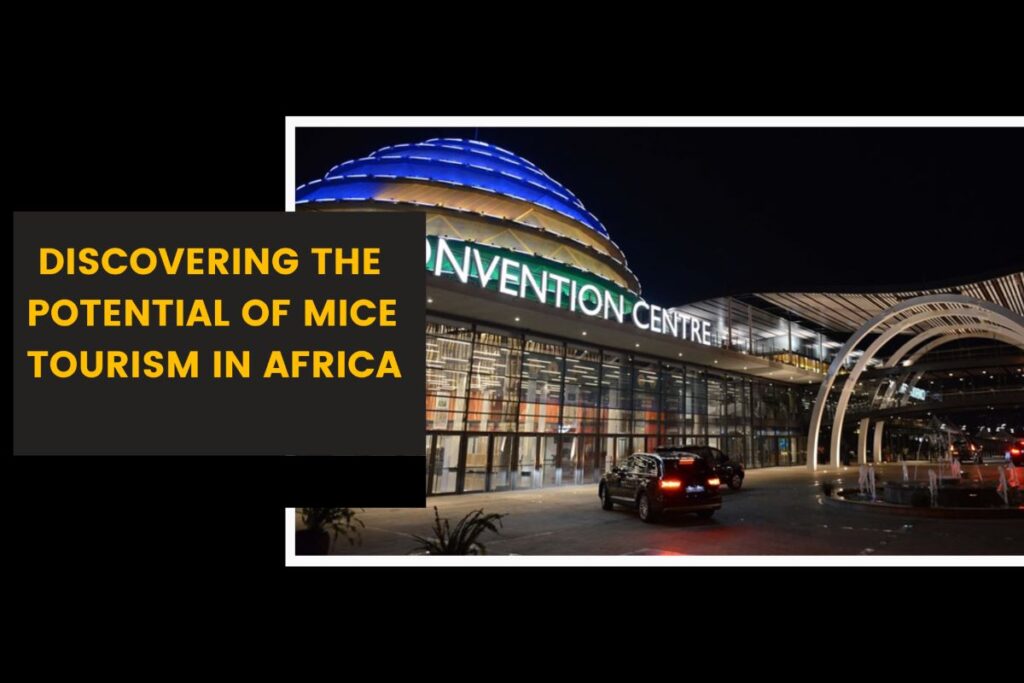
Hujambo! Welcome to our weekly blog. This week we are exploring the growth of MICE tourism in Africa! We’re excited to share with you insights on this topic, which is of increasing importance for the African tourism industry.
Introduction
Africa is a land of stunning natural beauty and rich cultural diversity, and we believe that MICE tourism can help showcase its unique offerings to the world. From Meetings, Incentives, Conferences, and Exhibitions , MICE tourism can drive economic growth and job creation to local communities, while providing a platform for African nations to demonstrate their expertise and innovation on a global stage.
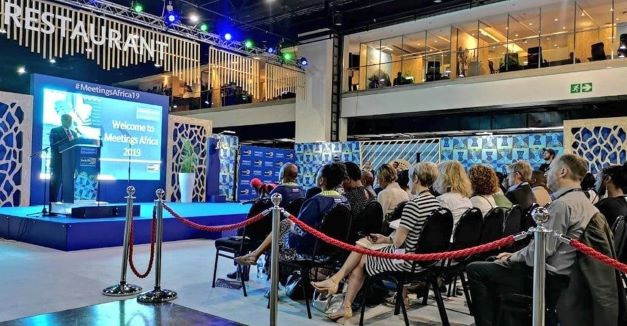
MICE tourism in Africa is not only beneficial for businesses, but also for the local economy. It is estimated that MICE tourism generates more revenue per visitor than traditional tourism. This is because MICE tourists typically stay for longer periods, spend more money on accommodation, food, transportation, and other services. Moreover, MICE tourism creates jobs and business opportunities for local people, which can help to alleviate poverty and promote economic growth.
Africa as a MICE Tourism Hub
Africa’s natural beauty and diverse culture have long made it an attractive destination for tourists from all over the world. In recent years, the continent has also emerged as a hub for MICE tourism. With the advent of technology, MICE tourism in Africa has the potential to grow and thrive, presenting new opportunities and challenges for the tourism industry.
One of the key benefits of MICE in Africa is the economic boost it provides to local communities. MICE tourists are typically high-spending visitors who stay for extended periods and engage with the local economy.
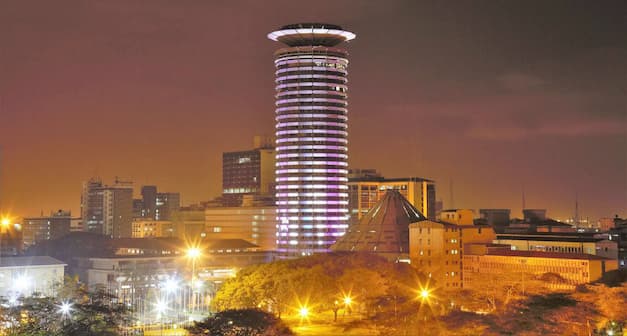
They generate revenue for hotels, restaurants, transportation services, and other sectors of the tourism industry, which in turn creates job opportunities for locals and drives economic growth. Moreover, the use of technology in MICE tourism can help streamline the booking and payment processes, making it easier for tourists to plan their trips and supporting the growth of local businesses.
Technology can also help African nations showcase their unique offerings to the world. With the rise of virtual and augmented reality, conference organizers can create immersive experiences for attendees, showcasing the natural wonders and cultural heritage of Africa in stunning detail. This can help attract more tourists and businesses to the continent, supporting economic growth and job creation.
However, technology alone is not enough to realize the full potential of MICE tourism in Africa. The continent still faces challenges related to inadequate infrastructure and safety concerns, which can deter international visitors from choosing Africa as a destination for business travel.
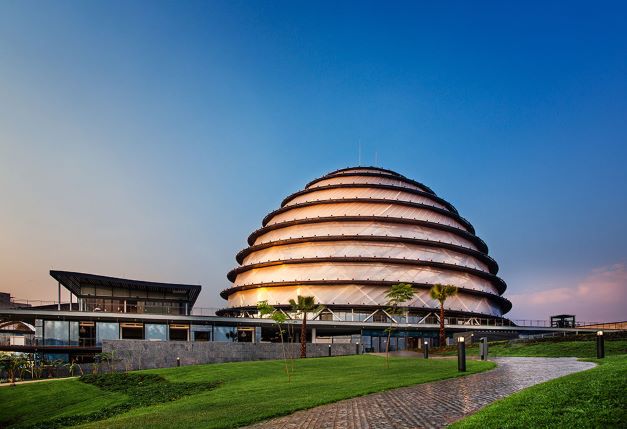
Governments and private sector stakeholders must work together to address these issues, investing in modern convention centers, transportation networks, and telecommunications infrastructure, and promoting Africa as a safe and attractive destination for business travel.
In conclusion, MICE tourism in Africa presents exciting opportunities for economic growth and cultural exchange, enabled by the latest technology. However, it requires a collaborative effort to address the challenges faced by the continent, including inadequate infrastructure and safety concerns.
By leveraging the power of technology and working together to address these challenges, Africa can establish itself as a leading destination for MICE tourism, attracting business travelers from all over the world and supporting the growth of local communities.
We hope that this blog has provided you with valuable insights into the growth of MICE tourism in Africa and the opportunities and challenges that come with it. From the economic benefits for local communities to the potential of technology to support its growth, MICE in Africa is an industry that holds great promise for the continent.
As we’ve discussed, there are still challenges to overcome, such as inadequate infrastructure and safety concerns, but we believe that with collaboration and investment, Africa can establish itself as a leading destination for business travel and conventions.
Thank you for taking the time to read our blog and learn about this important topic. Thank you for joining us and see you next week as explore another exciting topic.
Subscribe to our Newsletter
You’ve been successfully subscribed to our newsletter!
The Straits Times
- International
- Print Edition
- news with benefits
- SPH Rewards
- STClassifieds
- Berita Harian
- Hardwarezone
- Shin Min Daily News
- Tamil Murasu
- The Business Times
- The New Paper
- Lianhe Zaobao
- Advertise with us
BRANDED CONTENT
In the business of fun: meet the people who help shape singapore’s tourism infrastructure, with strong organisational support and job rotation opportunities, these singapore tourism board employees develop critical skill sets on the job as they transform the country into an even more attractive destination.

Behind the ultra-stylish integrated resorts that are firm favourites among tourists, the sprawling Singapore Expo that plays host to some of the largest events in the region, and the Marina Bay Cruise Centre Singapore (MBCCS), one of the largest and most uniquely designed cruise terminals in South-east Asia, is a team that ensures these are not only operating at peak condition at all times, but also plans years into the future to shape Singapore’s physical tourism landscape.
Meet the Infrastructure Planning and Management (IPM) division of the Singapore Tourism Board (STB), which oversees the operations and development of Cruise and meetings, incentives, conferences and exhibitions (MICE) infrastructure, as well as the two integrated resorts.
Stepping out of her comfort zone to broaden her expertise in cruise infrastructure
In her decade-long career with STB, Ms Poline Lim, 33, has undertaken different facets of the statutory board’s work, from enhancing visitor experience through technology to attracting best-in-class association conventions and a secondment to the Ministry of Trade and Industry (MTI). These opportunities enabled her to develop a broad spectrum of skill sets and insights to both leisure and business tourism.
She took on her current Cruise infrastructure portfolio at the IPM division in 2022. As the Assistant Director of the IPM (Cruise) team, she delved into engineering and construction related work for the first time, which pushed her out of her comfort zone.
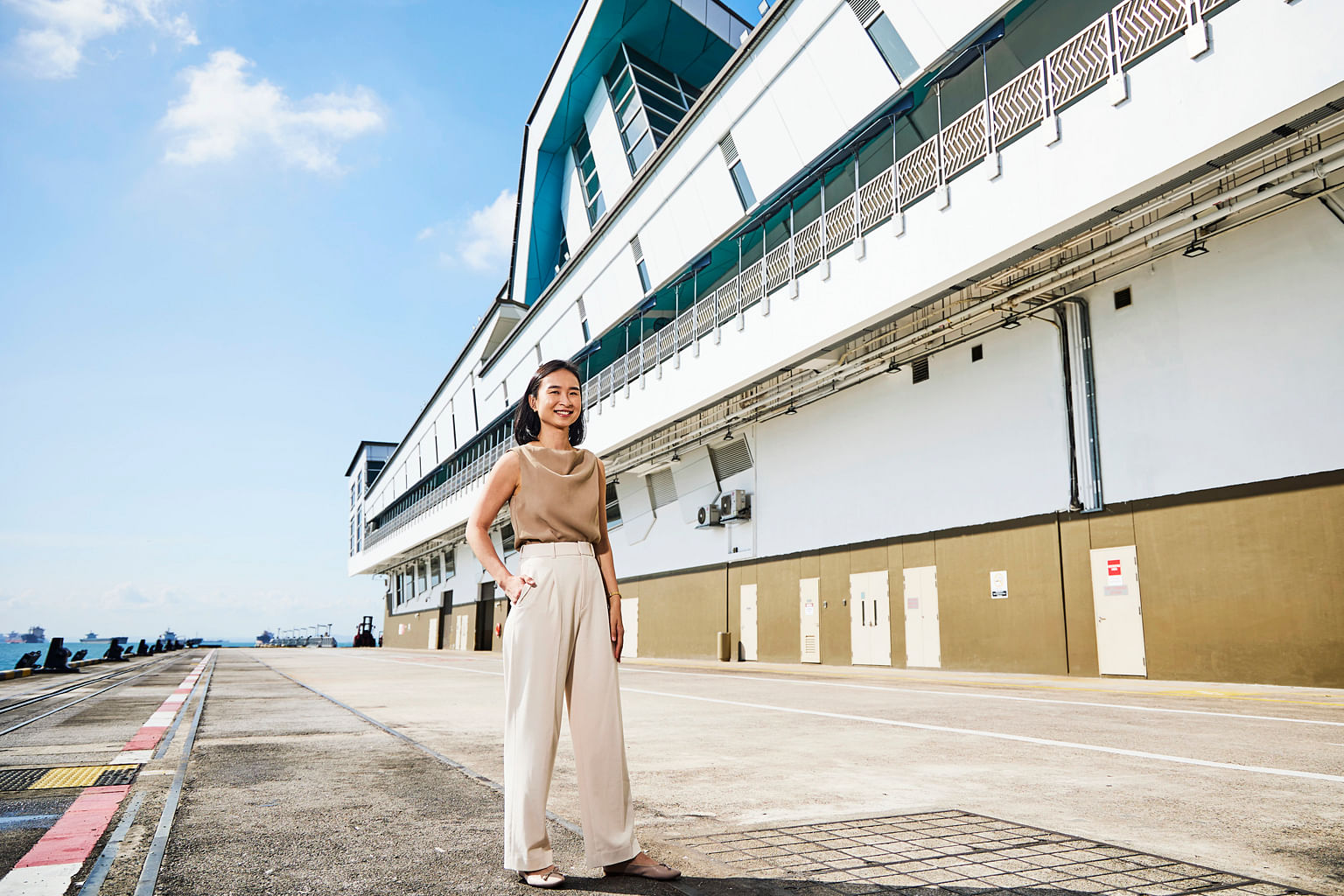
In her role overseeing the MBCCS, Ms Lim leads a five-member team that deals with a wide range of responsibilities. From maintaining the physical infrastructure of the facility to working with the appointed cruise terminal operator to ensure smooth daily cruise operations, her team’s work is crucial to the success of the terminal.
With Singapore's cruise sector posting a record 2 million passengers with more than 340 ship calls in 2023, the team’s primary focus is to maintain the MBCCS as a world-class terminal that can adapt to the ever-evolving needs of cruise lines while also planning ahead for the growth of the cruise industry.
“I’m not an engineer so it was challenging at the start but also very fulfilling,” she says, referring to the technical conversations about terminal structures, ship specifications, and marine navigation that have now become a part of her daily work.
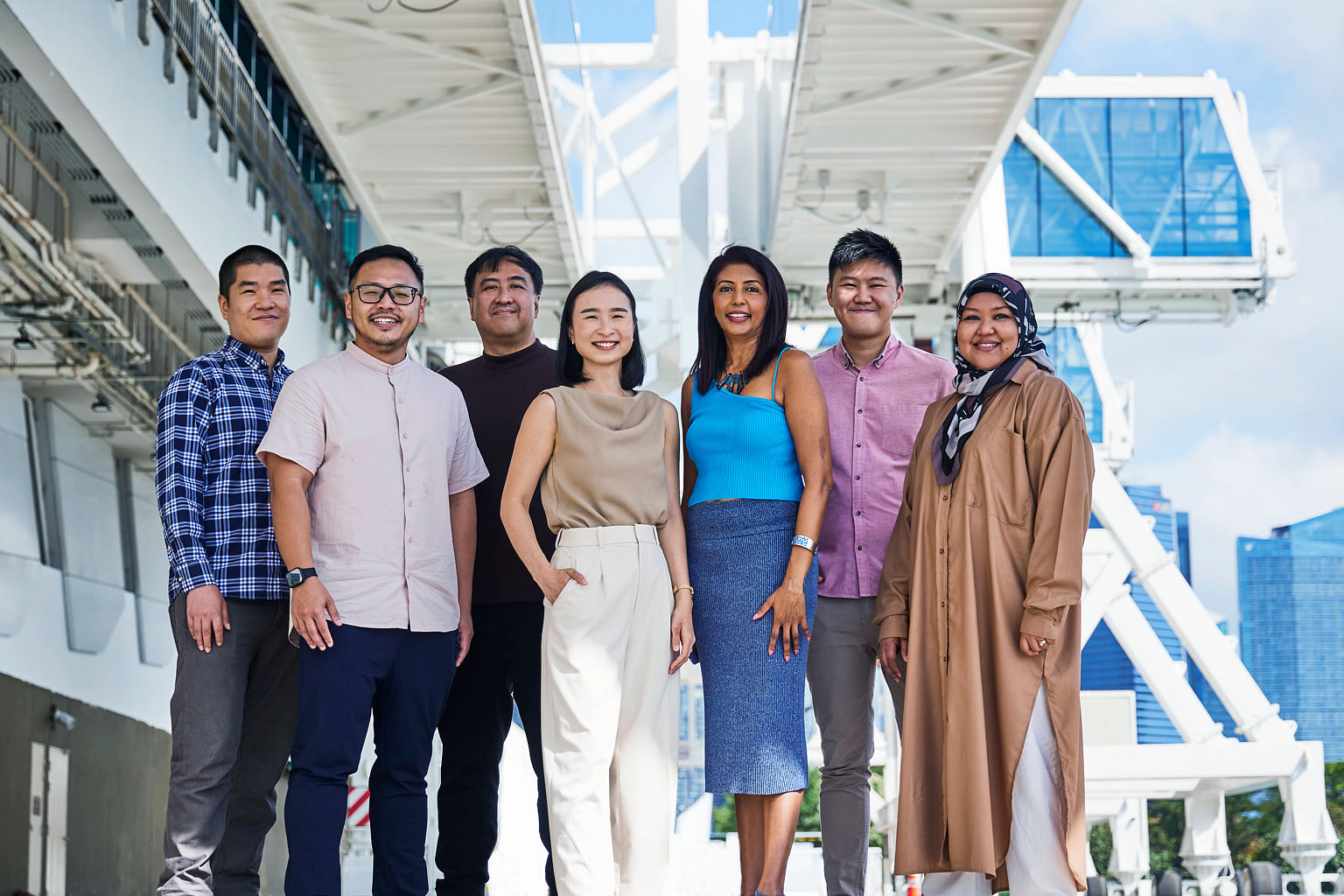
She credits her ability to navigate these uncharted waters to two factors: A strong team of specialists who are trained in engineering and construction-related fields, and close collaboration with other government agencies including JTC Corporation, Maritime and Port Authority of Singapore and Urban Redevelopment Authority.
“It may sound like a cliche but every day is a learning experience with this team. Leveraging the expertise of my team and other agencies, I am able to learn and appreciate the technicalities involved in my work to make informed recommendations on the planning of our cruise infrastructure,” says Ms Lim, who has also attended courses in facility management and land use planning with her team to strengthen her capabilities.
Ms Lim’s team is already looking ahead to 2050, having started preliminary discussions on supporting infrastructure required to help the cruise industry reach its net-zero emissions goal.
Gaining experience and confidence to elevate Singapore’s MICE scene
Like Ms Lim, Mr Bryan Law has benefited greatly from on-the-job learning. Combined with various job rotation opportunities, the 34-year-old has been fully exposed to different behind-the-scenes functions of the tourism industry.
Before joining STB as a full-time staff within the Integrated Resorts team in 2017, Mr Law gained valuable experience through internships with the Visitor Experience Centre, Formula 1 (F1) and Sports Business and Partnership divisions. These provided him with insights into both visitor-facing and industry-related aspects of STB’s work.
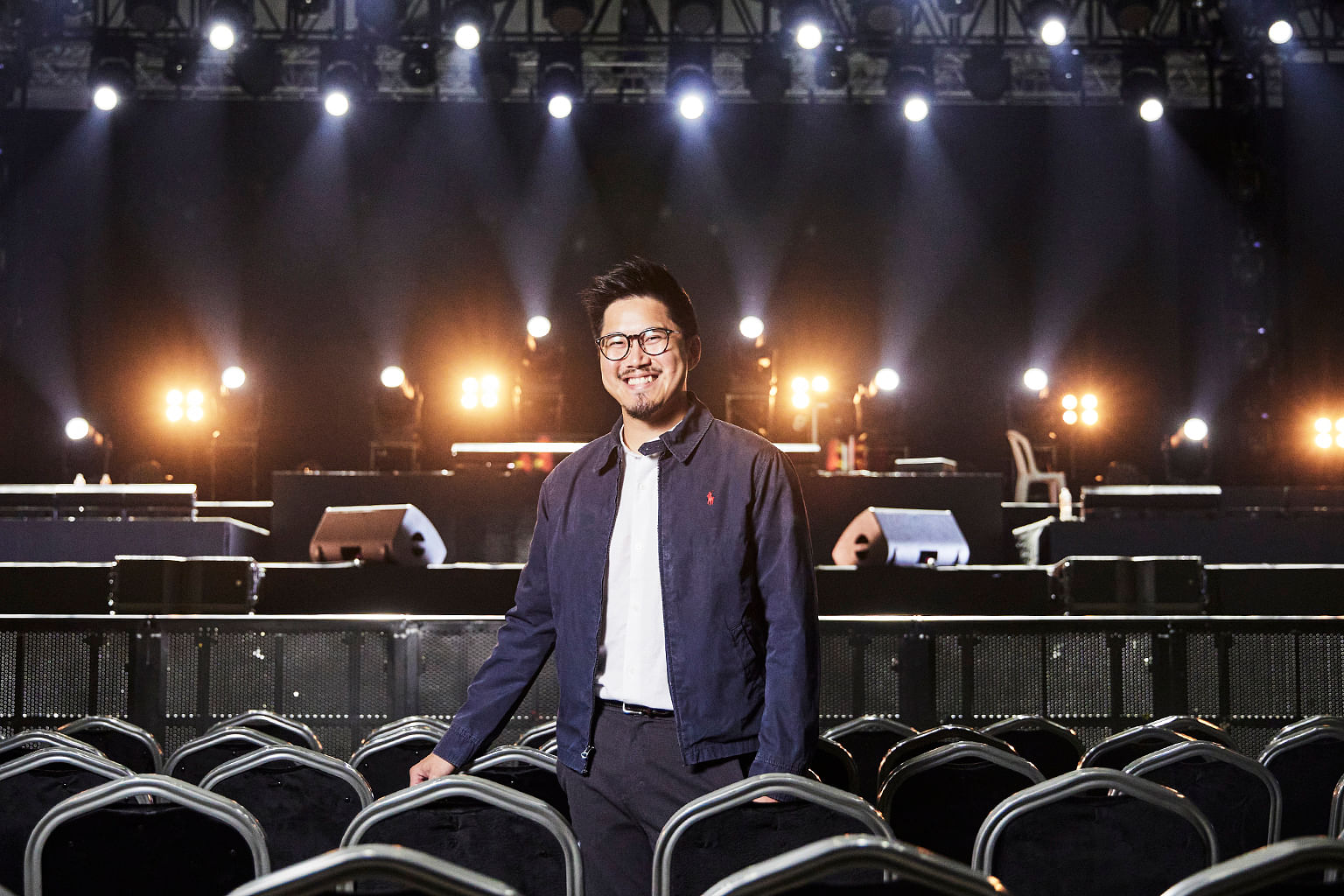
While he has always been passionate about tourism, having pursued his tertiary education in Leisure and Resort Management, Mr Law initially felt a bit uncertain in navigating policy matters related to the industry, such as manpower and land issues. However, he credits STB’s strong mentorship culture, where experienced colleagues readily share their knowledge and guide newer team members. This supportive environment, coupled with ample opportunities for cross-functional collaboration, has been instrumental in his professional growth.
“Once I had built up the confidence, I was able to keep up with the pace of work and contribute in a bigger way towards my team and the organisation,” he says.
During his earlier stint as a Senior Manager with the IPM (Integrated Resorts) team, Mr Law took up career development opportunities within the board, which included a short stint with the Exhibitions & Conferences team which oversees the growth of large-scale business events in Singapore. This was instrumental when he was later promoted to Assistant Director of IPM (MICE).
As portfolio lead, he oversees the ongoing management and maintenance of Singapore Expo, the country’s largest MICE venue, while also working with privately-owned MICE facilities such as the Suntec Exhibition & Convention Centre, in an effort to maintain Singapore’s position as a top MICE destination of choice within the region.
He has also led the team to work with Singapore Expo to introduce leisure offerings, such as new food and beverage options, a sports hall as well as an entertainment facility, to enhance its attractiveness as a MICE venue.
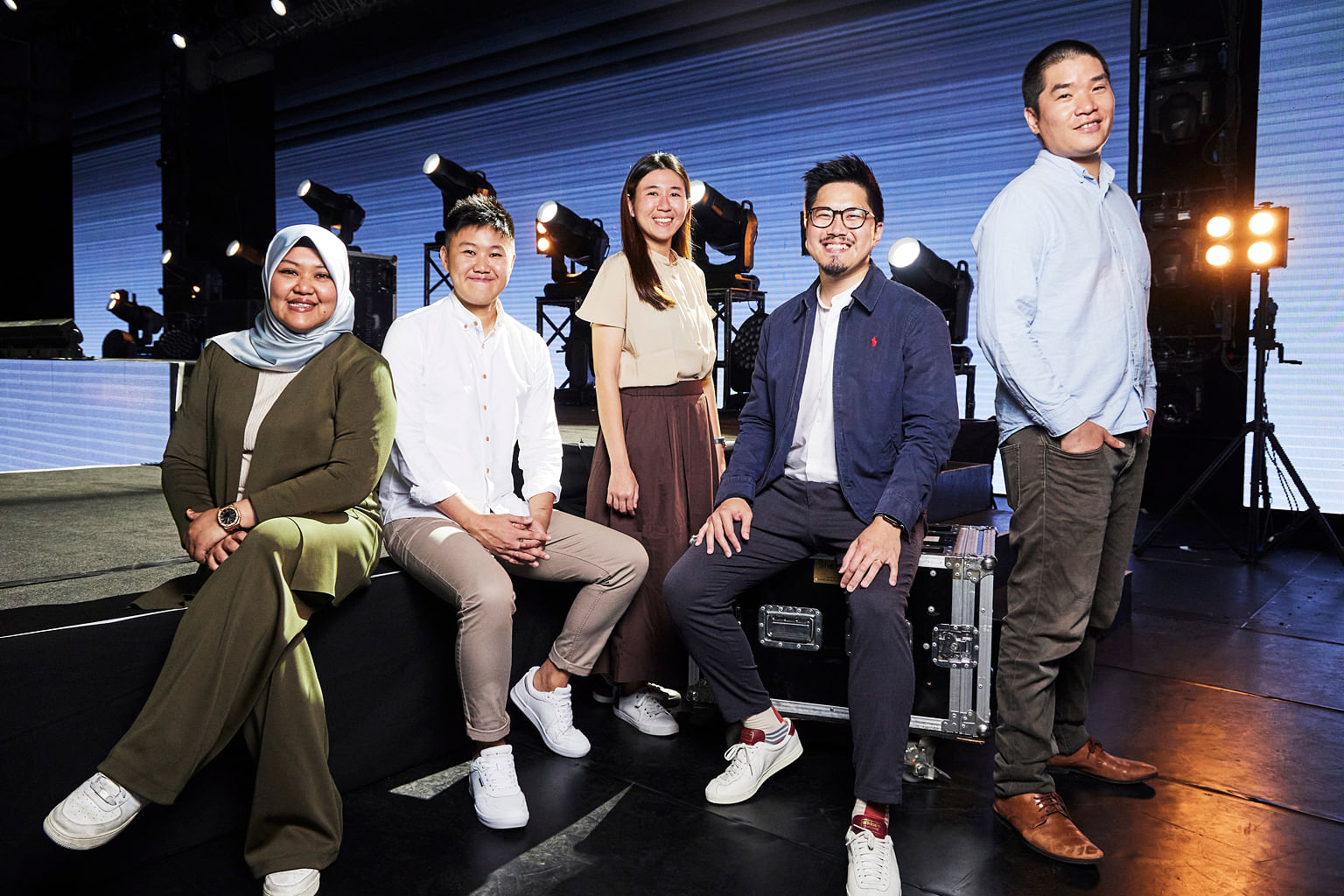
Looking ahead, Mr Law’s team is focused on ensuring all six purpose-built MICE venues in Singapore, including Raffles City Convention Centre, Resorts World Convention Centre and Sands Expo & Convention Centre, obtain internationally or nationally recognised sustainability certifications (or both) by 2025. An example of this is working with Singapore Expo to install Singapore’s largest single-site solar rooftop that generates renewable energy to power the venue’s operations.
This initiative is a part of the MICE Sustainability Roadmap, an initiative by STB and the Singapore Association of Convention & Exhibition Organisers & Suppliers which aims to raise sustainability standards across Singapore’s MICE industry over the next few years.
Finding fulfilment through diverse roles and job rotations
Another key member of STB’s IPM team developing the country’s tourism offerings is Mr Darren Leow, 36, an Assistant Director with the IPM (Integrated Resorts) team.
His journey at STB has been marked by exposure to diverse roles and opportunities, which has contributed to his professional growth and given him a comprehensive understanding of the organisation’s multifaceted work. This includes an overseas posting to the STB regional office in Mumbai, India, and a secondment to MTI, and roles in international relations, business development and data analytics.
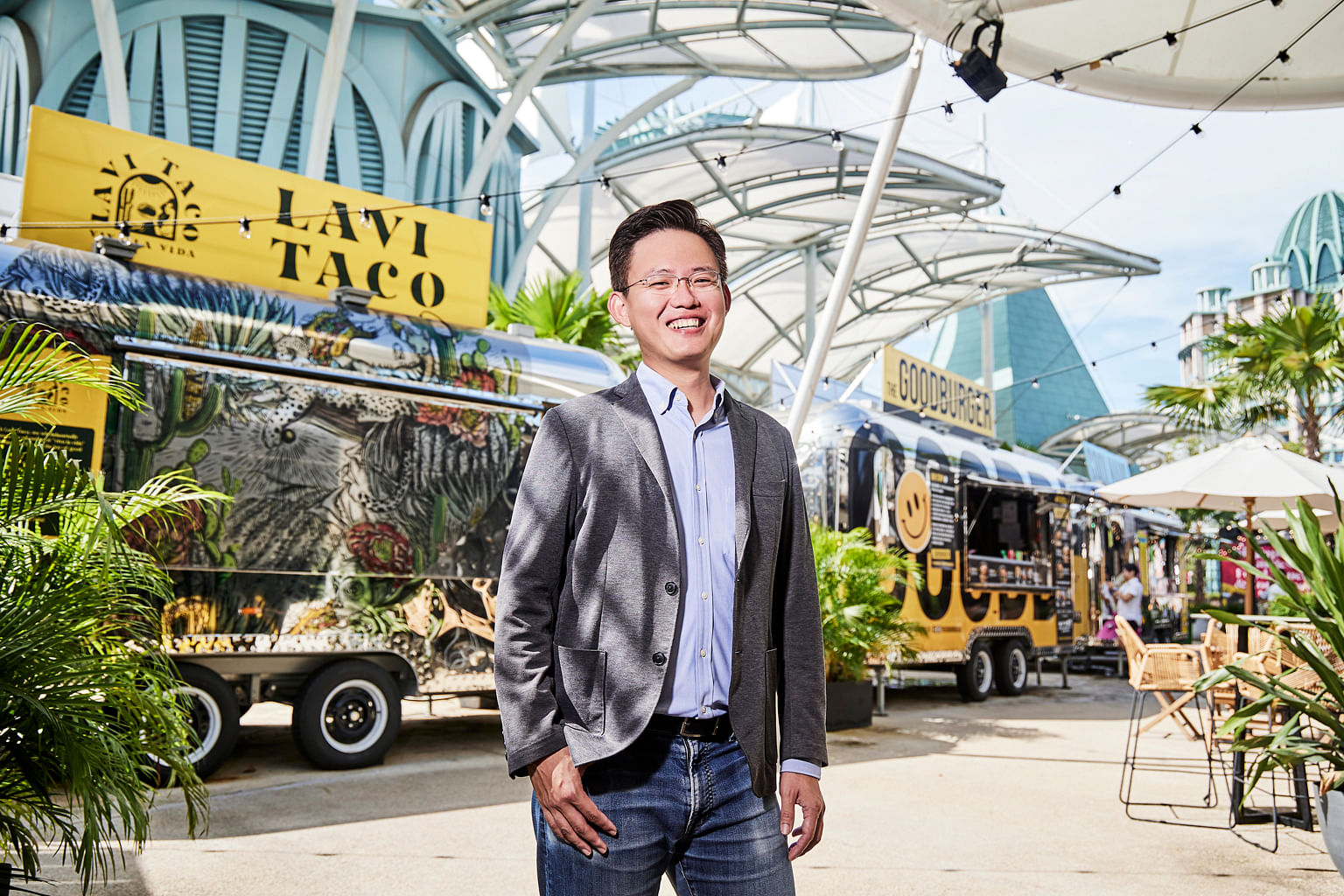
These rotations, he says, have given him a “sense of fulfilment”, enabling him to develop different skill sets and providing him with an in-depth knowledge of STB’s broad scope of work.
“Because our work encompasses regulator, developer, policymaker, marketer and other roles, there’s always something new to try and learn from,” he explains.
Drawing from his wealth of experience, Mr Leow brings valuable insights to his role in the IPM (Integrated Resorts) team. He has a hand in a range of matters related to food and beverage, hotels, attractions, retail and entertainment within Singapore’s two integrated resorts, Marina Bay Sands (MBS) and Resorts World Sentosa (RWS).
His role also involves government policy and stakeholder management, allowing him to leverage his diverse experience at STB. This is further enhanced by STB’s leadership culture, which fosters an environment where individuals are encouraged to take ownership, collaborate effectively, make sound decisions autonomously when needed and inspire others through their actions.
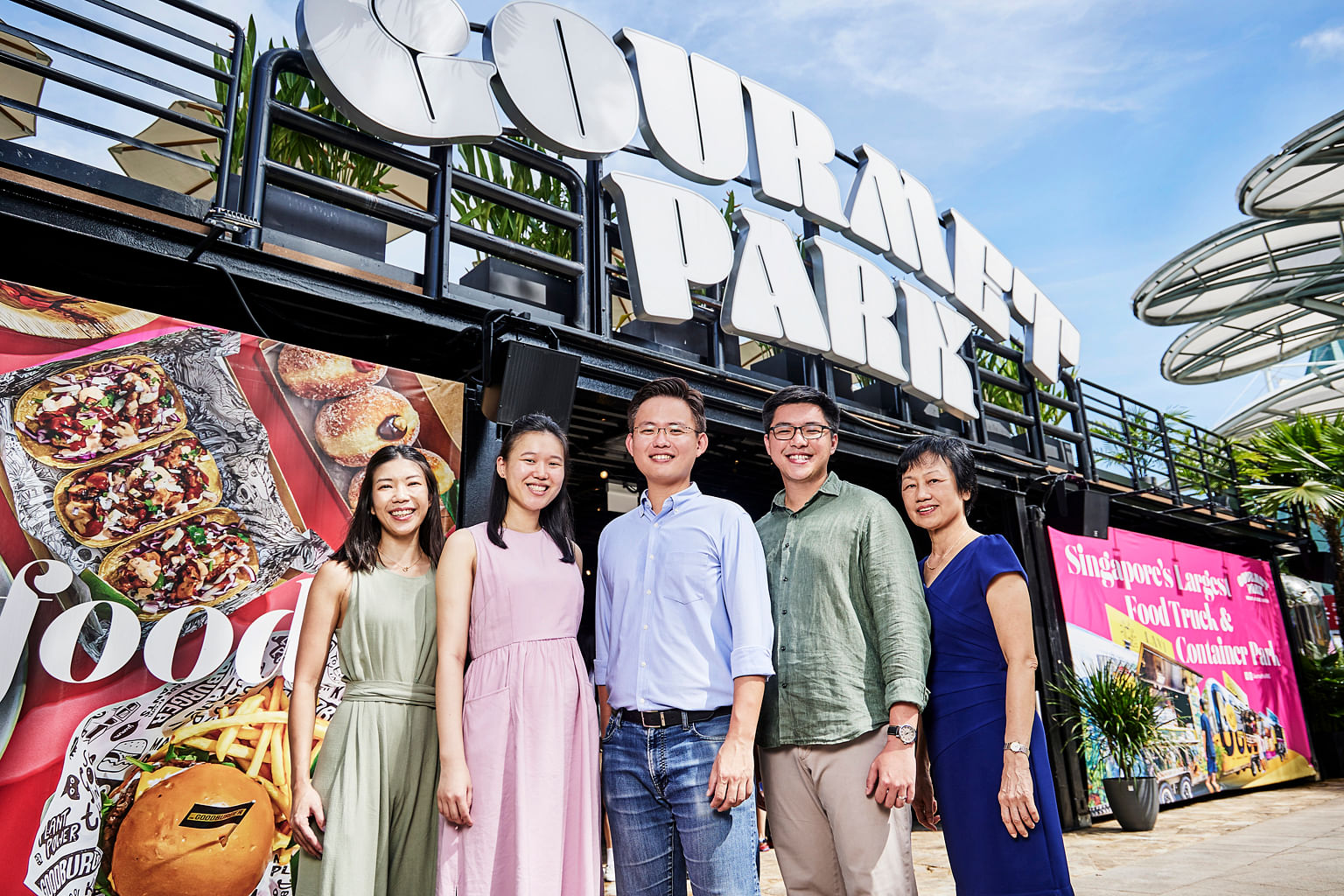
Currently, his team is working closely with MBS and RWS on their respective expansions that will enrich Singapore’s tourism offerings and enhance the integrated resorts’ vibrancy and tourism appeal.
The new world-class tourism facilities and attractions will include a 15,000-seater state-of-the-art entertainment arena and an iconic, luxury all-suite hotel at MBS with a rooftop public attraction, as well as a new waterfront lifestyle complex, Illumination’s Minion Land and Super Nintendo World at Universal Studios Singapore in RWS.
To gain inspiration for enhancing Singapore’s integrated resort offerings and to ensure that they stay ahead of the competition, he has undertaken study trips with his team to other world-class tourism destinations, such as Las Vegas, where he had the opportunity to experience the newly opened Sphere entertainment arena.
For Mr Leow, working at STB offers not only the immense satisfaction of shaping Singapore’s physical landscape to make it a more attractive destination but also an unexpected perk: Witnessing the behind-the-scenes planning of new lifestyle offerings and events at the two integrated resorts.
Besides these tangible benefits, he values the strong sense of unity and shared mission at STB. This dedication to promoting Singapore as a world-class destination has fostered a strong sense of camaraderie among colleagues and an “all hands on deck” attitude towards supporting STB initiatives and events.
This commitment is evident in the way STB staff are always ready to contribute, from volunteering to run marquee events like the Formula 1 Singapore Airlines Singapore Grand Prix to taking part in company-wide team bonding initiatives.
As Mr Leow puts it, “STB is a place where staff bring their whole selves to work – with all of our interests and energy. After all, we are in the business of fun, and passion is our brand.”
Find out more about careers with STB here.

Join ST's WhatsApp Channel and get the latest news and must-reads.
- Branded content
- CAREER DEVELOPMENT
- PROFESSIONALS
- Singapore tourism
Read 3 articles and stand to win rewards
Spin the wheel now

How to harness Rwanda’s MICE tourism
T he latest annual report by the Rwanda Convention Bureau (RCB) indicates that Rwanda recorded a 48 per cent increase in revenue to $95 million from 160 events hosted in the country which attracted more than 65,000 delegates in 2023. This was the highest figure on record in the ten years since RCB was established. This ostensibly points to the greater potential that Rwanda's Meetings, Incentives, Conferences, and Events (MICE) industry holds, according to stakeholders. The country is expected to emerge as one of the most rapidly growing regions in the MICE industry, primarily due to strong demand from European markets, according to United Nations World Tourism Organization (UNWTO) World Tourism Barometer 2024. ALSO READ: Rwanda’s events industry rakes in $95m in 2023 According to Celestin Makuza, the chief executive at Events Factory Rwanda, a local events management company, last year’s MICE performance reflects how far the country's MICE tourism has come. Rwanda, he says, has ‘moved leaps and bounds’ from 2006 when the country hosted international conferences in tents and had only one five-star hotel to the present-day, with world class facilities for large events. Conferences, a jewel The said the government’s support to the MICE industry, through investments in infrastructure and promotional strategies, the safety and stability the country enjoys, and the visa-free regime, have enabled Rwanda to emerge as one of the top destinations in Africa. “I was among the people who were skeptical when they built the Kigali Convention Centre, thinking that it was too big to fill, but we are currently exceeding its capacity,” he recalls, adding that there is a need for even bigger conference venues. ALSO READ: Rwanda’s MICE tourism is growing, we should harness it Conferences are the jewel in the crown of MICE to focus on, because they are the most lucrative, he said, pointing out that the benefits that hosting international events bring cut across other sectors. This, he said, has been evident whenever Rwanda has hosted international events such as the Commonwealth Heads of Government Meetings (CHOGM), Women Deliver Conference 2023, World Economic Forum on Africa 2016, and Basketball Africa League (BAL). When Rwanda hosted CHOGM for the first time, everyone was upbeat about the expected return – from companies that manage events, and those that specialise in protocol services, to transporters, hospitality establishments, advertising agencies, and even small-scale traders in the countryside. Makuza agrees, saying that the trickledown effect in hosting international events almost translate to everyone pocketing some money – like hotels, restaurants, ride-hailing services, and motorcyclists – which indicates how broadly the economy benefits. “In fact, as we grow as a destination, we need to equip motorcyclists with soft skills because they are the ones to offer first-hand experience of the country, driving guests around,” he says. Janet Karemera, the chief executive of RCB, agrees that the execution of events highly relies on the contribution of the private sector, highlighting that there are investment opportunities in human capital and equipment to expand the country’s production capacity and ensure the successful completion of events. With more than 90 key events and meetings due to take place in the country in 2024, she highlights that the bureau seeks to harness the available resources to elevate Rwanda’s market position and firmly put it on the global MICE map. The Allied Market Research, a research firm, indicates that the industry is projected to reach $1.5 trillion by 2028, driven by a compound annual growth rate of 11.2 per cent from 2021 to 2028. ALSO READ: Attitude and skills improvement could fix service delivery, hospitality expert Experience diversification For Divine Nshuti, an adventure enthusiast and travel blogger, there has been improvement in what the country can offer to visitors, especially for those who come to Rwanda to attend conferences. Through Rwanda Development Board, tour companies can know and plan experience offerings ahead of events that attract a large number of people, allowing them to be creative and diversify beyond the usual destinations like Akagera National Park and the gorilla trekking experience, she noted. “We have seen more opportunities come up for small businesses and you can only anticipate that has ripple effects to other sectors of the economy. More money flows into the economy when visitors get opportunity to embark on community tours, visit marketplaces, attend small festivals, and enjoy art functions,” she said. Makuza insisted that the private sector can own up the space to create experiences that not only serve foreign visitors, but that are also tailored to and affordable for Rwandan consumers to remain sustainable beyond being short-lived during conferences. Nshuti also noted that the government can consider flexibility with nightlife hours’ restriction to allow for visitors to make the most of the limited time they have around and have a feel of leisure in the country. Service delivery... While the MICE tourism presents potential for Rwanda’s economy, there are challenges that hold the industry back, which, if addressed, can enable the domestic MICE market to realise its full potential. Poor service delivery is one of those challenges the hospitality industry faces, according to industry experts. “Customer service should be felt by the client not just having it marked on a t-shirt. The attitude and skills need to be fixed,” Makuza said, adding that the majority of foreign guests do not necessarily stay at five-star hotels or demand luxury services, rather they consume services that an average Rwanda consumes.
The Economic Times daily newspaper is available online now.
Indians among top visitors to moscow from non-cis states.
Moscow sees a rise in business tourism, with 3.7 million visitors in 2023, including 60,000 Indians. A conference in Delhi aimed to strengthen ties between Indian and Moscow's MICE industries, highlighting Moscow's potential for corporate events. The event also discussed collaboration opportunities and innovative MICE venues.

Read More News on

Taking a loan? This small paper can save you big

Trucks taking trains! This is how Amul milk is reaching you faster, cheaper

What the rise and rise of the Big Mac Index foretells for Indian equities

Five reasons why your Sahara refund claim may be rejected and how to address them.

A treasure trove of renewable energy is hiding beneath Ladakh’s cold deserts

A small step by IRDAI. A giant leap for senior citizens.
Find this comment offensive?
Choose your reason below and click on the Report button. This will alert our moderators to take action
Reason for reporting:
Your Reason has been Reported to the admin.

To post this comment you must
Log In/Connect with:
Fill in your details:
Will be displayed
Will not be displayed
Share this Comment:
Uh-oh this is an exclusive story available for selected readers only..
Worry not. You’re just a step away.

Prime Account Detected!
It seems like you're already an ETPrime member with
Login using your ET Prime credentials to enjoy all member benefits
Log out of your current logged-in account and log in again using your ET Prime credentials to enjoy all member benefits.
To read full story, subscribe to ET Prime
₹34 per week
Billed annually at ₹2499 ₹1749
Super Saver Sale - Flat 30% Off
On ET Prime Membership
Unlock this story and enjoy all members-only benefits.
Offer Exclusively For You
Save up to Rs. 700/-
ON ET PRIME MEMBERSHIP
Get 1 Year Free
With 1 and 2-Year ET prime membership
Get Flat 40% Off
Then ₹ 1749 for 1 year
ET Prime at ₹ 49 for 1 month
Stay Ahead in the New Financial Year
Get flat 20% off on ETPrime
90 Days Prime access worth Rs999 unlocked for you

Exclusive Economic Times Stories, Editorials & Expert opinion across 20+ sectors
Stock analysis. Market Research. Industry Trends on 4000+ Stocks
Get 1 Year Complimentary Subscription of TOI+ worth Rs.799/-
Stories you might be interested in

IMAGES
VIDEO
COMMENTS
The Benefits of MICE Tourism. MICE tourism offers a wide range of benefits for various stakeholders, including cities, businesses, and individuals. Here is a closer look at the key benefits: For cities: Economic impact: MICE tourism generates significant revenue through direct and indirect spending, contributing to local economic growth and ...
The benefits of MICE tourism extend beyond the event itself, with local businesses and the wider community benefiting from increased spending. Key Players in the MICE Industry. MICE tourism is a complex industry that involves various stakeholders. The following are the key players in the MICE industry:
The Meetings, Incentives, Conventions and Exhibitions (MICE) sector of tourism is rapidly expanding worldwide. This paper discusses some neglected issues relating to the assessment of the narrower economic impacts, the economy-wide impacts and the net benefits of an expanding MICE sector within a tourism destination. The paper does not attempt ...
Why is MICE tourism important? MICE tourism can be beneficial to a destination's economy. It also provides a wealth of opportunities for individual companies or organisations who want to put themselves on the international stage. Other benefits ion MICE tourism include: It facilitates the access to new technology; It attracts high-spending ...
Adapting your establishment to cater to MICE tourism can yield a multitude of advantages. This specialised market attracts business travellers and event planners from all over the globe, presenting opportunities for year-round bookings and sustainable revenue growth. Explore some of the key benefits of attracting MICE tourism below.
MICE sales are extremely beneficial and can generate a sizeable portion of a hotel's revenue. By attracting MICE tourists, you have an opportunity to boost the returns of your establishment, as well as your reputation. Studies have shown that MICE tourism makes up over fifty percent of business travel. MICE Benefits for Hotels
Putting the nice into MICE. Nothing to do with pest control, everything to do with business-minded travel. Put simply, MICE stands for Meetings, Incentives, Conferences & Exhibitions. It is business tourism at its finest, aimed at bringing together top professionals from every sector in an enhanced, tailor-made hospitality setting.
The benefits of MICE in travel compared to other types of travel. MICE in tourism industry offers numerous benefits, including: Participants have a chance to travel, relax, and engage in the activities they enjoy. Balancing work and leisure in a harmonious way can enhance work productivity.
On the benefits side one may refer again to the potential for MICE tourism to promote the national interest and international co-operation and to provide opportunities for education and training ...
3) MICE has a multiplier effect. An average MICE attendee will spend 6 times as compared to a typical tourist. If an average tourist or tourist group spends an x amount, an attendee will spend about 6x the amount. This is a huge contribution that benefits the economy. 4) MICE is a platform for transfer of knowledge and technology.
For example, global business travel spending throughout 2021 declined by 61%, according to the World Travel & Tourism Council. MICE Benefits for the Hospitality Industry. Attracting business and corporate travellers is essential for hotel occupancy and ancillary sales. Therefore, MICE sales are beneficial as they have the potential to generate ...
According to a report, the MICE tourism industry will bring revenue in upwards of $1.5 billion globally by 2025. MICE has presented itself as very beneficial for several reasons. The destination can achieve positive exposure and increase foot traffic, generate increased revenue for the destination, and boost a company (or group of companies ...
Therefore, both the hospitality industry, as well as the tourism industry benefit directly from this kind of event. 3. Conferencing. ... I'm thrilled to hear you found our guide on MICE tourism so helpful and easy to understand. We aimed to demystify the intricacies of the industry and provide valuable insights for professionals like you.
MICE stands for Meetings, Incentives, Conferences, and exhibitions. It is business tourism at its finest, which is aimed at bringing top professionals from every sector an enhanced hospitality. Get ready to beat the boring work trips with the most amazing MICE tour destinations and get your work done in the most fun way ever!
Mice tourism offers options for different event sizes and tailored solutions for unique events. It creates memorable experiences and fosters connections among industry professionals. The types of Mice tourism include Meetings, Incentives, Conferences, and Exhibitions. It offers a unique and dynamic approach to business travel and MihiTravel can ...
The MICE tourism market size was valued at USD 42.8 Billion in 2022 and is anticipated to register a CAGR of 7% by 2032 owing to the increased economic benefits.
MICE opens the door for international trade. Events experience a multiplier effect. Creates a platform for knowledge and technology. Benefits many sectors and industries. Targets several tourism segments. Meetings, Incentives, Conferences, and Exhibitions, simply known as MICE, is an industry sector that brings together large groups of ...
The task of. this paper is to present a selection of collected data by analyzing the. existing written sources, which present current state of MICE industry, as. well as to compare data, in order ...
The Meetings, Incentives, Conventions and Exhibitions (MICE) sector of tourism is rapidly expanding worldwide. This paper discusses some neglected issues relating to the assessment of the narrower economic impacts, the economy-wide impacts and the net benefits of an expanding MICE sector within a tourism destination. The paper does not attempt to provide estimates of impacts or net national ...
MICE tourism includes travel to meetings (M), incentives (I), conferences (C), and exhibitions (E), of which the conference market is the most lucrative. The United Kingdom and Germany are the biggest European markets. However, the approach to this market is fundamentally different from that of leisure tourism. As a business you can play a role in the facilitation of the event itself, or ...
Impacts and Benefits of MICE tourism: a framework for analysis. / Dwyer, Larry; Forsyth, Peter J. In: Tourism Economics, 1997, p. 21 - 38. Research output: Contribution to journal › Article › Research › peer-review. TY - JOUR. T1 - Impacts and Benefits of MICE tourism: a framework for analysis.
The meetings, incentives, conferences, and Exhibitions (MICE) tourism has intensively grown in recent decades. The MICE sector has also been strongly affected by social and technological changes, especially new social habits resulting from the COVID-19 pandemic. Our research maps the state of the art in MICE tourism and its digitalization from 1997 (first published article found on the subject ...
With the advent of technology, MICE tourism in Africa has the potential to grow and thrive, presenting new opportunities and challenges for the tourism industry. One of the key benefits of MICE in Africa is the economic boost it provides to local communities. MICE tourists are typically high-spending visitors who stay for extended periods and ...
STB's IPM (MICE) team (from left to right: Ms Nurhafiza Ahmad, Mr Daniel Tan, Ms Loh Xiaoyou, Mr Bryan Law and Mr Keith Kwan) spearheads initiatives to elevate Singapore's MICE capabilities ...
The latest annual report by the Rwanda Convention Bureau (RCB) indicates that Rwanda recorded a 48 per cent increase in revenue to $95 million from 160 events hosted in the country which attracted ...
Moscow sees a rise in business tourism, with 3.7 million visitors in 2023, including 60,000 Indians. A conference in Delhi aimed to strengthen ties between Indian and Moscow's MICE industries, highlighting Moscow's potential for corporate events. The event also discussed collaboration opportunities and innovative MICE venues.